
2022 SHRM Certification Update Paying Remote WorkersWhat are Your Options?
Camille Chang Gilmore, VP at Boston Scientific Global Chief Diversity, Equity & Inclusion Officer SHRM Foundation 2022 Highlights Compensation and Performance Management TM www.HRProfessionalsMagazine.com Volume 12 : Issue 12
Preview of Talking Taboo by SHRM’s Alexander Alonso, PhD
Ogletree Deakins is one of the largest labor and employment law firms representing management in all types of employment-related legal matters. The firm has more than 900 lawyers located in 53 offices across the United States and in Europe, Canada, and Mexico.

International Presence. Local Knowledge. www.ogletree.com EMPLOYERS AND LAWYERS, WORKING TOGETHER
MEMPHIS OFFICE International Place, Tower II 6410 Poplar Avenue Suite 300 Memphis, TN 38119 901.767.6160 BIRMINGHAM OFFICE 420 20th Street North Suite 1900 Birmingham, AL 35203 205.328.1900

























































































































































































































































































ARE YOU READY FOR YOUR SHRM CERTIFICATION EXAM? 221962
your
certification exam
the
Learning System. HR professionals who use the Learning System consistently
average certification exam
Build your
confidence through: ⊲ Personalized SHRM-CP or SHRM-SCP preparation
your
⊲ Comprehensive
reinforce
⊲ Flexible
budget. Get
your
Study Smart Today! shrm.co/StudySmart
Prepare for
SHRM
with
SHRM
beat the
pass rate.
exam
tailored to
schedule.
content to test and
your knowledge.
learning options that best suit your learning style and
more out of
study time with the SHRM Learning System!
4.6% average salary increase projected for 2023


www.HR
Magazine
Editor
Cynthia Y. Thompson, MBA, SHRM-SCP, SPHR
Publisher
The Thompson HR Firm, LLC
Art Direction Park Avenue Design Marketing and Social Media Specialist
Julie Nagem
Photographer Charles B. Thompson Webmaster Leo Dimilo
Contributing Writers
Alexander Alsonso
William Brown
Heather Bussing
Amy Schabacker Dufrane
Kimberly K. Estep
Dee Anna Hays Ken Joyner
John Hawkins
Todd A. McFall Katie O’Neill
Megan Regan Clifford C. Sandsmark
Contact HR Professionals Magazine:
To submit a letter to the editor, suggest an idea for an article, notify us of a special event, promotion, announcement, new product or service, or obtain information on becoming a contributor, visit our website at www.hrprofessionalsmagazine.com. We do not accept unsolicited manuscripts or articles. All manuscripts and photos must be submitted by email to Cynthia@hrprosmagazine.com. Editorial content does not necessarily reflect the opinions of the publisher, nor can the publisher be held responsible for errors.
HR Professionals Magazine is published every month, 12 times a year by the Thompson HR Firm, LLC. Reproduction of any photographs, articles, artwork or copy prepared by the magazine or the contributors is strictly prohibited without prior written permission of the Publisher. All information is deemed to be reliable, but not guaranteed to be accurate, and subject to change without notice. HR Professionals Magazine, its contributors or advertisers within are not responsible for misinformation, misprints, omissions or typographical errors. ©2022 The Thompson HR Firm, LLC | This publication is pledged to the spirit and letter of Equal Opportunity Law. The following is general educational information only. It is not legal advice. You need to consult with legal counsel regarding all employment law matters. This information is subject to change without notice.
Features 5 note from the editor 6 Preview of Talking Taboo by Alexander Alsonso, PhD 8 Profile: Camille Chang Gilmore, VP Boston Scientific 10 SHRM Foundation 2022 Accomplishments 11 Donate the SHRM Foundation Today! 14 Purchase Your Copy of RESET from the SHRM Foundation 34 SHRM Certification’s Eighth Year in Review 42 Pictorial Highlights from the 2022 SHRM Volunteer Leaders Business Meeting November 17-18 in Washington, D.C. Compensation and Performance Management 12 Paying Remote Workers – What Are Your Options? 13 JER HR Group – Comprehensive Compensation Solutions 36 Mitigating the Effects of Implicit Bias Begins with Data Analysis 38 How People Analytics Can Improve Pay Equity 47 University of Memphis Center for Workplace Diversity and Inclusion
Employee Benefits 20 Are You a Benefits Superhero? 21 The Benefits Group – We Do All the Work! 25 The New No-Cost Benefit That Your Employees Will Love!
Minding Your Social Health
Transform Your Employee Benefits from an Expense to a Competitive Advantage


The Greater Memphis Employee Benefits Council Meeting November 3 Talent Management and Recruiting
Background Screening Strategies for 2023
What Employees Expect from Your ESG 24 Is That Really My Job? 28 Meet the Team at Safehaven Security Group 51 Is Your Background Screening Vendor Melting Away?

Employment Law
2 Ogletree Deakins – Employers and Lawyers Working Together 15 Save the Date for the SHRM Employment Law & Compliance Conference in Washington, D.C. February 26-28 30 2022 Legislative Update 32 Highlights from the Wimberly Lawson Labor & Employment Law Conference in Sevierville, TN November 17-18 41 Rapid Responses for Employer’s Needs –Rainey, Kizer, Reviere & Bell PLC
Top Educational Programs for HR Professionals

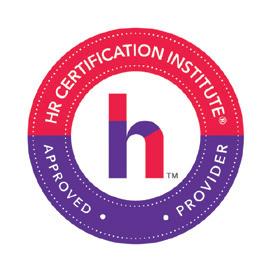
3 Are You Ready for Your SHRM Certification Exam? 9 How WGU Can Help You Meet Your Back-to-School Needs 17 Which SHRM Conference is Right for You? 23 20% Discount on HRCI Courses in 2022 Expires December 31, 2022 29 Active Shooter Training 31 FIU – Center for Leadership 50 Which SHRM Learning Journey is the Right Path for You? 52 WGU. Online. Nonprofit. Surprisingly Affordable Industry News 18 SHRM-Memphis HR Excellence Team Awards 19 Save the Date for the 2023 SHRM Talent Conference & Expo in Orlando, FL April 16-19 32 Highlights from the 2022 Wimberly Lawson Labor & Employment Law Update Conference in Sevierville, TN November 17-18 40 Highlights from the 13th Annual WTSHRM HR & Employment Law Conference in Jackson, TN November 16 44 Highlights from the 2022 NC SHRM Conference in Winston-Salem 46 SHRM-Memphis HR Excellence Awards at the Pink Palace Museum November 15 48 Highlights from the 2022 ARSHRM HR Conference & Expo in Hot Springs October 24-26
January 2023 Issue features Updates on Labor and Employment Law Deadline to reserve space December 15
Bringing Human
& Management Expertise to You
Resources
Professionals
.com
26
27
35
16
22
Join our monthly webinars to earn SHRM and HRCI recertification credits. 2022 4 www.HRProfessionalsMagazine.com
a note from the editor

ItIt is the season of giving. Please remember to make your annual donation to the SHRM Foundation this month! The SHRM Foundation offers scholarships, grants, and awards that help HR professionals gain the skills they need to take their career to the next level and make impactful changes in the workplace that lead to positive change in the workplace.

The SHRM Foundation has many accomplishments for 2022. Here are some of them:
APRIL: Mental Health in America: a 2022 Workplace Report MAY: Employing Abilities at Work Certificate Program Launch
JUNE: Workplace Mental Health Ally Certificate
SEPTEMBER: The Rise of Skilled Credentials
OCTOBER: Visionaries Summit & Tharseō Awards
2022 SCHOLARSHIPS
In 2022 the SHRM Foundation provided over $500,000 in scholarships, grants, and awards to 300+ individuals preparing for their first job in HR or studying to fast-track their existing career in human resources.
We are honored to feature Camille Chang Gilmore, Vice President, Global Chief Diversity Equity and Inclusion Officer at Boston Scientific, on our December cover. You can read her exciting career profile on Page 8. She serves on the boards of the Society of Human Resource Management (SHRM) Foundation, WittKieffer, the Greater Twin Cities Youth Symphonies (GTCYS), Disability:IN, and is a liaison to the National Action Council for Minorities in Engineering (NACME) organization. Camille is an active member of Alpha Kappa Alpha Sorority, Incorporated.
November was one of the most exciting months this year. We had the opportunity to cover the 13th Annual WTSHRM Fall Conference in Jackson, TN and the 2022 SHRM-Memphis HR Excellence Awards. We also had the honor of covering the 41st Annual Wimberly Lawson Employment Law Update Conference in Sevierville, TN. In addition, we have the pictorial highlights from the SHRM Annual Volunteer Leaders Business Meeting in Washington, D.C on November 17-18.
We also have coverage of a couple of SHRM State Conferences including the 2022 NCSHRM Conference from Winston-Salem and the 2022 ARSHRM Conference from Hot Springs. Catch our double page spreads of these exciting conferences in this issue!
We are featuring compensation and performance management this month. You will love reading the latest trends in compensation. Take advantage of these experts who can help you avoid compensation pitfalls as you are preparing your 2023 personnel budget.
Our focus in January 2023 will be employment law as we feature the changes we can anticipate resulting from the 2022 midterm elections and the expected impact on employers and the HR community. We are bringing you exciting complimentary webinars in December that you don’t want to miss! They are all pre-approved for HRCI Business Credits and SHRM PDCs. Watch your email for your invitation to each of these exciting events!
Wishing everyone a beautiful holiday season with your loved ones!
cynthia@hrprosmagazine.com @cythomps

5 www.HRProfessionalsMagazine.com
Part I
Why Are Some Topics Taboo?
Chapter 1
Problematic Workplace Conversations: An Introduction
“Don’t talk about politics, sex, or religion in the workplace.” “Don’t play the ‘race card.’”
“Keep your private life private.”
Many of us have been given this advice, but how many of us have been able to follow it over the course of our working lives?
Sometimes our desire for prudent forbearance from tough workplace talk is overtaken by personal passions or principles. Sometimes it’s overtaken by overwhelming external events, such as those that occurred during the tumultuous years of 1968 and 2001— and 2020 through 2021.
When politics, sex, race, religion, and other polarizing subjects come up in conversation among coworkers, what happens next? For HR professionals, there are lessons to be learned from the real-life incidents of colleagues who have handled the fallout in their own organizations.

As for me, I love to talk about controversial topics because they’re so interesting. It helps that I was raised in a cultural environment that encouraged emotionally charged word battles, acted out with equal enthusiasm by citizenry in public parks or by friends and family at the dinner table. Polarizing subjects capture my attention—even when playful banter devolves into physical confrontation—because they’re really all
Talking Taboo
Making the Most of Polarizing Discussions at Work
BY ALEXANDER ALONSO, PHD, SHRM-SCP ALEX IS SHRM’S CHIEF KNOWLEDGE OFFICER.
about people who care about something. They care so much; they will fight with anyone who opposes their perspective. Disagreements over politics, sex, religion, race, ethnicity, and the like are universal, hitting every swath of humanity.
As a Hispanic and an immigrant to the United States, I have encountered discrimination. The first time was as a child in Miami, when my family was asked to leave a store because we were Cuban. In private, my father often expressed hateful views about others. As a teen, I argued with relatives about apartheid and basic human rights, baffled that even people who have experienced the pain of racism would choose to engage in racism themselves.
At my first job as a cashier in a drug store, I was ringing up a prescription for a poor elderly woman on Medicaid who loudly lamented the lack of subsidies and the uncaring pharmaceutical industry. A younger man waiting in line behind her, about to pay full price for his medication, became more and more annoyed listening to her. Finally, he interrupted to ask why she thought “big government” should give her welfare benefits. When she argued back, he called her a “communist.” She weakly hit him with her umbrella as other customers applauded her resolve, but he just shrugged, calling her a “crazy old bag” as he left the store.
I was appalled—and enthralled. Clearly, conflict was part of human behavior. Three subsequent events led to my deepening interest in the topic of conflict as a subject for serious scholarship.
The first was the Elián González fiasco that took place in 1999 and 2000. A predawn federal raid sent a young immigrant boy back to his father in Cuba. I was in graduate
school working in a laboratory, talking about the news with a fellow student who defended the government’s approach. I was vehemently opposed to it, pointing to the excessive use of force as unnecessary and destabilizing to a community steeped in drama. “But it’s the drama that necessitates the excessive force!” he responded. I excoriated him for using cultural stereotypes to justify government policy. We almost came to blows when a colleague took notice and told a joke to deescalate the situation.
This incident showed me that even the most heated exchanges in the workplace can be managed.
The next event occurred when I was a couple of years into a new position with a respected organization. A seemingly trivial matter revealed some extreme polarization in that workplace. Two coworkers in my department were discussing a just-published interview with then-president Barack Obama. One said she was offended by Obama’s criticism of a popular musician; the other said she was offended by the musician’s behavior. The first employee announced that Obama should only focus on “presidential” things, which the second interpreted to be an insult of Obama as “unpresidential.” Soon their argument became racially charged, and the employees had to be separated.
Witnessing this incident taught me two things: that the origins of polarization can be oblique and that if left unchecked, polarization can result in disaster.
The third moment happened in 2016 during the presidential campaigns of two polarizing candidates, Donald Trump and Hillary Clinton. The latter’s comment characterizing some of the former’s followers as “deplorables” had just been reported in the
We are honored to present our first installment of
6 www.HRProfessionalsMagazine.com
news. I was attending a conference where two staff members were having a conversation regarding the matter. Things were relatively cordial until one called the other a “deplorable” and went on a tirade about “right- wing monsters.” Before long, they were trading invectives; soon enough, these two grown adults—who should have known better— began to assault one another! In an effort to defuse the situation before security was called in, I did the only thing I could think of at the moment: I hopped on a chair and broke into song to make people laugh. Startled, the debaters ended their combat and calmed down.
This incident proved to me the value of humor and absurdity in quelling a potential calamity. When things go awry, it’s often a good idea to divert people’s attention with something harmless, thereby highlighting the harmful nature of what had been capturing their attention.
Thanks to these incidents, my inner organizational psychologist came to embrace the notion of studying conflict, and my outer HR executive came to embrace the notion of harnessing conflict for good. I embarked on a formal study of workplace polarization, specifically the discussion of taboo topics, which would culminate in this book. The year 2020 began innocuously enough as the project took shape.
As the months went by, however, things went awry all over the world: the COVID-19 pandemic, social lockdowns, economic disruption, widespread unemployment, stressed essential workers, people dying. In the United States, additional crises exploded over racial injustice, clashes between protesters and police, a divisive presidential election, an insurrection in the Capitol, and more.
The study of how people talk about polarizing topics became far more serious than I could have imagined. What is the HR perspective on conflict in the workplace in the wake of so much of it? (And what is the workplace now, in the digital/social media era, during an ongoing public health emergency requiring people to be physically apart for their own safety?)
This year’s myriad catastrophes have provided novel challenges for everyone, shining a light on the many rips in the fabric of our fragile society. I can never pretend to
understand the life experiences of people who are not like me—Black people, or women, or Asian people, or Muslim people, or people with disabilities, or poor people, or so many others—when they are accosted by bigots, treated unfairly by law enforcement, not considered for job opportunities, or denied access to the privileges to which they are entitled as human beings. Yet I can listen and learn; I can stand with oppressed and marginalized communities in word and spirit; and I can act to bring about equality and justice to the best of my ability, thanks to my position as a professional specializing in the study of people in the workplace.
Organizations around the globe are trying different approaches to respond to crises and show that they care about the disadvantaged and destroyed. But announcements and promises are easy to pick apart.
It is much more useful to evaluate these organizations’ actions, which speak louder than their words.
Many businesses have pledged to contribute funds to various causes and establish new programming for their customers and employees, making headlines both good and bad. Lost in the shuffle of such public relations moves, however, is the essence of real change. We must examine these organizations’ internal efforts; otherwise, these actions are empty gestures. How do organizations (often led by overwhelmingly monochromatic management) address conflict in their own workplaces? Disagreements among coworkers over taboo topics can serve as a microcosm of conflict in the wider community, even the world.
In the wake of recent social movements (primarily #MeToo, Black Lives Matter, and political campaigns) and our accelerating dependence on new technologies (exacerbated by COVID-19’s fall- out requiring remote work and social isolation), the workplace will never be the same. While that’s the kind of thing people often say when dramatic events cross our collective consciousness for good or ill, the data shows that this time, the change really is permanent. There’s no going back.
In today’s era of uncertainty, organizations have to do more than protect their immediate business and human interests. They might also have to explore their very
ability to survive. Survival means having to sustain, redefine, and reinvent themselves.
The nation seems caught in an endless cycle of conflict. HR directors and managers are barely coping, just like the employers and employees they serve. How do we find a way forward? Without honest study and reflection, we may never do so.
The United States is divided right now, but we have always had to cope with polarizing figures, topics, and issues throughout society. It is not a new or unique phenomenon. Whether we like it or not, the adages atop this chapter, advising against talk about controversial or sensitive topics in the workplace, are no longer effective—or even applicable. The topics are no longer even limited to politics, sex, religion, race, and private life. Any polarizing issue can be taboo— money, age, health, divorce, one’s relatives, and so on— if it causes coworkers to engage in debates, arguments, or disagreements.
Let me recount one more incident involving workplace conflict. It, too, has deepened my interest in polarization as a subject for serious scholarship (which, at the time, was already underway in the form of work on this book). It also gives me hope.
Last summer, at the end of a workday, I was walking around the office and came across three colleagues having a spirited conversation about the events surrounding the heinous murder of George Floyd. Two of the participants, parents of young adults who are Black, focused on the need to reform the criminal justice system, particularly law enforcement. The third participant had a different, more nuanced perspective as the parent of a young Black man who is himself a local law enforcement officer. Black lives matter, she said, but blue lives should be respected.
As the discussion progressed, the participants shared some harsh responses to the others’ expressed opinions. One described how all the men in her household have been affected by aggressive law enforcement actions. The mother of the law officer described how her son catches hell from citizens as well as his peers on the police force. None of the three held back.
Eventually, the conversation ended. Surprisingly—to me—they walked away with a newfound respect for one another.
7 www.HRProfessionalsMagazine.com
Continued on our website, www.hrprofessionalsmagazine.com
Camille CHANG GILMORE
Camille Chang Gilmore, Vice President Global Chief Diversity, Equity and Inclusion Officer Boston Scientific
Camille Chang Gilmore is a highly regarded executive who has more than 25 years of human resources and diversity leadership experience. She is currently Vice President of Human Resources and Global Chief Diversity, Equity and Inclusion Officer (CDEIO) for medical device and healthcare firm Boston Scientific, helping to oversee and support for nearly 40,000 employees in over 130 countries.
As CDEIO, Camille drives global diversity, equity, and inclusion strategies and programs that recognize and value the unique talents, attributes and contributions of the company’s staff. Since joining Boston Scientific in 2004, she has been instrumental in driving change and building a company culture prioritizing diversity, equity, and inclusion. This includes spearheading the Close the Gap health equity initiative, global community engagement, promoting supplier diversity as well as leading U.S. diversity recruiting programs. Prior to joining Boston Scientific, Camille held HR roles at market-leading companies and organizations including Federal Express, Exxon Chemical Company, the University of Illinois at UrbanaChampaign, IBM and the State of Oregon.
Camille is a prominent speaker and leader and was selected as one of Savoy Magazine’s 2016 Top Influential Women in Corporate America, The Network Journal’s 2018 Top 25 Black Women in Business, and Diversity Global Magazine’s 2020 Top 10 Influential Women in Diversity. In her spare time, she gives back to her community and society. She serves on the boards of the Society of Human Resource Management (SHRM) Foundation, WittKieffer, the Greater Twin Cities Youth Symphonies (GTCYS), Disability:IN, and is a liaison to the National Action Council for Minorities in Engineering (NACME) organization. Camille is an active member of Alpha Kappa Alpha Sorority, Incorporated.
Camille received her bachelor’s in Business Management from Pennsylvania State University and her M.B.A. in Human Resources from the University of Illinois.

on the cover
8 www.HRProfessionalsMagazine.com
How WGU Can Help You Meet Your Back-to-School Needs
By KIMBERLY K. ESTEP
Asanother new year approaches, a lot of people are thinking about resolutions. For some, one of those resolutions is going back to school. Western Governors University (WGU) is a nonprofit, accredited, 100% online university designed specifically for working adults. No matter your occupational or family demands, here are three of the ways in which WGU is a good fit for your back-to-school resolution:
First, at WGU, you make your own schedule. WGU works hard to make sure that you are able to maintain a work, school, and family/social life balance. Due to the online flexibility of courses, many people can balance their school load as well as a full- or part-time job and their social life. About 78% of WGU students nationwide work full- or part-time.
It’s important to us that you can get through school while still being able to keep your regular routines.
Second, our programs are competency-based. That is, WGU bases success on what you can do already. Each degree program is developed by a council of experts in the field who define the competencies students need to graduate. These competencies form the curriculum. What that means: if you already know some of the material – whether through previous studies or real-life work experience – you can speed through your courses. Students often “test out” and earn credit for the course, rather than being forced to sit through lessons on what they already know.
Lastly—and for many, most importantly—the cost of earning a degree at WGU is uncommonly low. WGU’s tuition comes in at roughly $7,450 per year for a bachelor’s degree, and
$7,800 per year for a master’s degree, while the national averages are $12,112 and $22,913 per year, respectively.
Also, since you work on your own schedule and can earn credit via the competency-based model, some students are able to get a degree in just one or two six-month terms. This means less money coming out of your pocket, and less debt. In fact, WGU has been nationally recognized for its Responsible Borrowing Initiative (RBI), through which students receive a personalized Financial Aid Plan, which recommends that students borrow only their “unmet direct costs”—tuition and fees minus any grants or scholarships. As a result of the RBI, average borrowing per year per WGU student (of those who borrow) has decreased by more than 30% since 2013.
If you’re wondering if an online degree is accepted, be assured that WGU is accredited by the Northwest Commission on Colleges and Universities (NCCU). WGU was founded in 1997 and is celebrating 25 years of breaking barriers to education. In a Harris Poll of employers who have hired WGU alumni, 95% said they would hire another WGU grad.
If you’re thinking of going back to school in 2023, consider WGU! With more than 70 degree programs (including a bachelor’s in human resources management), dozens of available scholarships (most WGU students receive some form of financial aid), and eligibility for federal aid and veteran benefits, there’s something for you at WGU.
 Kimberly K. Estep, Ph.D. WGU Regional Vice President, Southeast
Kimberly K. Estep, Ph.D. WGU Regional Vice President, Southeast

9 www.HRProfessionalsMagazine.com
SHRM Foundation 2022 Accomplishments
At the SHRM Foundation, we strive to lead positive social change benefiting work, workers, and the workplace by mobilizing the power of HR. Our donors’ generosity directly supports innovative programs and initiatives of the Foundation that address some of the most critical issues plaguing today’s world of work. 2022 was a banner year of accomplishments, breaking down barriers, and challenging HR profes sionals to join us in our mission of a world of work that works for all.
Incremental Impact:
May: Employing Abilities at Work Certificate Program Launch
Our new “Employing Abilities at Work” Certificate offers tools to recruit, hire, and retain individuals with disabilities. This accessible program aims to educate HR professionals, people managers, and business leaders about the benefits of providing more equitable, diverse workplaces for individuals with disabilities.
Disability representation in the workforce offers tangible benefits to the workplace– creating an environment of openness, transparency, and belonging. Those who have taken this certificate program have learned how much organizations stand to gain by ensuring disability inclusivity in the workplace.
September: The Rise of Skilled Credentials
With support from Walmart, the SHRM Foundation launched a new campaign, “The Rise of Skilled Credentials,” to lead the movement to underscore the value people with nondegree credentials bring to the workforce. This campaign is our proclamation to HR professionals, hiring managers and employers across the globe that skilled creden tials are no longer just an “alternative” to traditional ones— but rather, a new imperative to building an interdisciplinary workforce. This is partic ularly vital given the continuing global crunch for talent.
Refreshing the narrative of “alternative” to “skilled” credentials was vital. Subsequent research showed the word “alternative” may indicate that employers consider candidates with these credentials as a different, lesser option. As such, we re-released our reports with updated titles to highlight the importance of diverse credentials in talent acquisition.
October: Visionaries Summit & Tharseō Awards
In conjunction with the SHRM Executive Network, the SHRM Foundation held the second annual Visionaries Summit in Chicago, bringing together 400+ HR leaders to explore how belonging and mental health are vital to a successful and productive workplace— no matter industry, sector, or organization size.
Alongside the Visionaries Summit, we also hosted the exquisite Tharseō Awards Gala at Chicago’s Field Museum, recognizing three leaders who demonstrate the vision, courage, and business acumen to transform the workplace and strengthen the connections between employees and company purpose. During the gala, Johnny C. Taylor, Jr. held a compelling conversation with April Simpkins, HR leader and mother of the late Cheslie C. Kryst, on mental well-being. Cheslie was a dear friend to the Foundation and served as emcee at our inaugural Tharseō Awards gala in 2021. In Cheslie’s honor, we were delighted
to award two promising students with $10,000 memorial scholarships to help them continue their studies in HR with a focus on mental wellbeing thanks to the support of ManpowerGroup.
Continuous Projects in 2022:
Our Push for Workplace Mental Health & Wellness
The SHRM Foundation underscores the business case for developing, curating, and navigating best in class solutions and resources for HR professionals to tackle one of the most challenging issues of our time –the mental health and wellness of their employees. Our work towards mentally healthy workplaces extends far beyond May’s recognition of Mental Health Awareness Month:
In April, SHRM Foundation launched Mental Health in America: A 2022 Workplace Report. More than 3,400 human resources profes sionals, across a variety of industries, in U.S. organizations with 10 or more employees participated in the survey. About one in five (21 percent) of employee respondents say their organizations don’t have the resources to address mental health, while another 21 percent of respondents believe it’s too expensive to act.
In June, the SHRM Foundation continued its work to equip HR and people managers with the resources to understand critical mental health topics and identify appropriate approaches to help by adding the Workplace Mental Health Ally Certificate to the SHRM Store. The certificate was developed by Psych Hub, the world’s largest mental health education platform, in partnership with SHRM and the SHRM Foundation. The Workplace Mental Health Ally Certificate delivers evidence-based training with shareable resources and is eligible for seven professional development credits (PDCs).
What’s next? In early 2023, we will release a new playbook: “Mental Health in Your Workplace: From Evaluation to Action.” This playbook will serve HR professionals in organizations and industries of all sizes and sectors. It is meant to help HR leaders to create and implement a mental health strategy to reflect their unique workplace. To create this playbook, our team collected insights from workplace mental health experts. We have listened to the challenges they face, the challenges their teams face, and the needs of their workforce.
Scholarships & Mentoring
In 2022, the SHRM Foundation provided over $500,000 in scholar ships, grants, and awards to 300+ individuals preparing for their first job in HR or studying to fast-track their existing career in human resources.
And finally, SHRM Foundation has continued to expand its newly launched Mentorship Experiences with national events, local events, and skill building sessions to help mentors and mentees expand their professional network. Over 600 students and professional members engaged and shared the value they gained from their experiences.
Our incredible accomplishments of 2022 would not be a reality without the support of our investors and partners who have supported our work over the last year. Thank you for helping us to create inclusive workplaces where employers and employees thrive together, one step at a time.
10 www.HRProfessionalsMagazine.com
.


Fueled by the generosity of donors, the SHRM Foundation mobilizes the power of HR to lead positive social change in the workplace. We are committed to addressing the health, economic and social disruptions impacting work, workers and the workplace.











The SHRM Foundation elevates and empowers HR as a social force through our innovative solutions to workplace inclusion challenges and programming and scholarships designed to inspire and empower the next generation of HR leaders. We are focused on leading transformational change in support of workplace mental health and wellness and preparing workers for today’s and tomorrow’s workplaces through skilling initiatives.

Building Inclusive Workplaces Workplace Mental Health & Wellness Support for HR Students & Emerging Professionals Skill Building
Impact work, workers and the workplace by creating a world of work that works for all with the SHRM Foundation
YOUR CONTRIBUTIONS SUPPORT: Be a part of the change. Make a di erence with your gift this year. shrm.co/luibpe 221877
“
Paying Remote Workers – What Are Your Options?
BY CLIFFORD C. SANDSMARK
Since the onset of Covid we have witnessed what some call ‘the great migration’ of workers moving from a corporate environment to their ‘home office.’ Employers weren’t ready for them to send their workforce home into hibernation – but thanks to technology it has worked well. This created the opportunity for companies to witness the ability for workers to be productive somewhere other than the traditional office – and once employees had a taste of it created a rising demand to maintain that workstyle.
It looks like remote work is here to stay. There are estimates that 22 - 30% of the workforce will work remotely by 2025. Some of the advantages of working remotely is an expanded pool of talent, the option to work at a location that is closer to your personal preferences, improved purchasing power at a location with a lower Cost of Living (COL) to name a few.
As the migration continued, highly paid employees discovered that their salaries could go much farther living in low Cost of Living areas other than for example Silicon Valley. Some employees recognized this, and they decided to relocate, and their companies acted. Probably the most notable example of adjusting pay for remote locations is Google. They are one of several tech companies that designed controversial plans to lower pay for remote workers who relocated from expensive areas where their headquarters are located to an area with a lower Cost of Living. Google felt that if an employee wanted to take their current earnings and move from San Francisco CA (COL 178.4% above National Average) to live and work in Tulsa OK (COL 91.3% of the National Average), it wasn’t fair to get an automatic 87.1% increase from a lower Cost of Living. According to Reuters they even designed a calculator that showed how much less they will be paid – ranging from 5.0% to 25% - depending on the new location.
What is the right answer? How do you effec tively set pay for a remote workforce? What do I do when an employee chooses to work from a different location than the traditional office? There are basically three options:
1. Adjust their pay based on the Cost of Living.
2. Adjust their pay based on the Cost of Labor.
3. Use one standard nationwide regardless of the Cost of Living or Cost of Labor differentials.
What is the difference using the Cost of Living or Cost of Labor? Aren’t they the same? Here are some definitions from the Economic Research Institute (ERI):
“Cost of Labor is determined by the supply and demand of labor across all industries and occupations by geographic location.”
Cost of Living measures the required costs to maintain a certain standard of living within a geographic location (based on a market basket of goods and services including consumables, transportation, health services, housing and taxes paid by an employee).”
Many managers think their pay practices should mirror the Cost of Living for a work location, but some feel that there are problems with that approach. The first consideration here is that Cost of Living will not necessarily correlate to the Cost of Labor. Miami FL for example has a Cost of Living that’s 55.3% higher than National Average, but the Cost of Labor is 1.2% below National Average (per ERI). Expensive places to live do not affect wage levels since they’re two different markets and follows the old adage “what you make depends on what you do and where you do it.”
The other consideration is that Cost of Living varies by the individual worker based on the economic decisions they make to sustain a certain lifestyle. The argument here is the individual has some control of their Cost of Living by the choices they make (“pay me a salary that affords my chosen lifestyle”). The danger with using Cost of Living to set salary levels is that if you peg your pay practices to an area with a high Cost of Living and a low Cost of Labor, you could overpay your employees and inflate your costs in relation to the market price for labor.
“Where cost of living is very valuable in managing relocations and temporary global assignments, cost of labor is most valuable in managing ongoing, regular assignments for new hires and existing employees.” (ERI).
If you decide to base remote worker pay for their home location, you can also have a problem with adjusting and maintaining pay on a one-by-one basis (whether Cost of Living or Cost of Labor). As the number of remote workers increases, determining their pay and maintaining them as they move around can become an administrative nightmare.
This leaves us a third option: pay all the remote worker’s using the same pay level regardless of the differential. Here companies will usually use pay reflecting the National Average. Both Mercer and Korn Ferry are projecting that over time, pay for all remote workers will normalize to the National Average for labor. This is easier to administer as a group rather than individually and you may consider adding special modifiers for hard to source talent such as IT.
Here are some other factors to consider. There is a need to be consistent when making pay adjustments or offers for remote worker. Avoid potential discrimination charges if two or more people have the same job description and do the exact same work but are paid differently due to differences in Cost of Living or Cost of Labor. Be sure you can justify your pay decisions by basing them on compen sable factors for seniority, time in job, verified experience, education, etc.
Remote workers are subject to the wage and hour laws of the states and localities in which they are working. Non-exempt remote worker’s pose a compliance challenge with FLSA issues. Small wage and hour mistakes can be compounded into large class action lawsuits unless employers develop policies as to where and when non-exempt employees can work. You can never eliminate the risks, but careful management practices can mitigate the possi bility of litigation.
Payroll practices in the home state may not satisfy the requirements of the remote worker’s state resulting in noncompliance issues. “Remote work has tax compliance risks for employees” says Stephen Miller in a recent SHRM article (Employees Working Out of State Often Fail to Let HR Know). “…28 percent of employees have worked outside their home state or country but only one-third reported all those days to HR, a 2021 survey shows. Consequently, their employers may have failed to withhold payroll taxes appropriately without realizing it.” This includes Unemployment Taxes as well.

No employee should be able to declare themselves a remote worker headed for Belize to work on the beach with their immediate manager’s blessing, and not notifying HR. There should be a mechanism or approval process to ensure that everyone who needs to know is notified and the employee is going to meet all the require ments to operate in that location.
Terminating employees can pose another challenge. UI claims, final paychecks, access to personnel files, retrieval of company property (computers, phones), etc. can be a logistical challenge. Also state laws can influence your non-competes and severance agreements.
If you decide to make pay adjustments for your remote worker, the Pros suggest that you be consistent in your practices and communica tions. High salaries at the new location may be at the top or over the Max of your salary plans. If you decide not to reduce their pay, consider freezing salary growth where the employee is no longer eligible for increases. Recruiting for remote worker positions can also be challenging. Work with your recruiters as they source remote talent to ensure the company will be compliant with the laws of those states.
HR professionals are acknowledging that remote workers are here to stay, and we need to be prepared for the new paradigms of how and where we do work.
JER HR Group csandsmark@jerhrgroup.com 12 www.HRProfessionalsMagazine.com
Clifford C. Sandsmark, CCP, CSCP, SHRM-SCP, SPHR Senior Consultant, Compensation Services
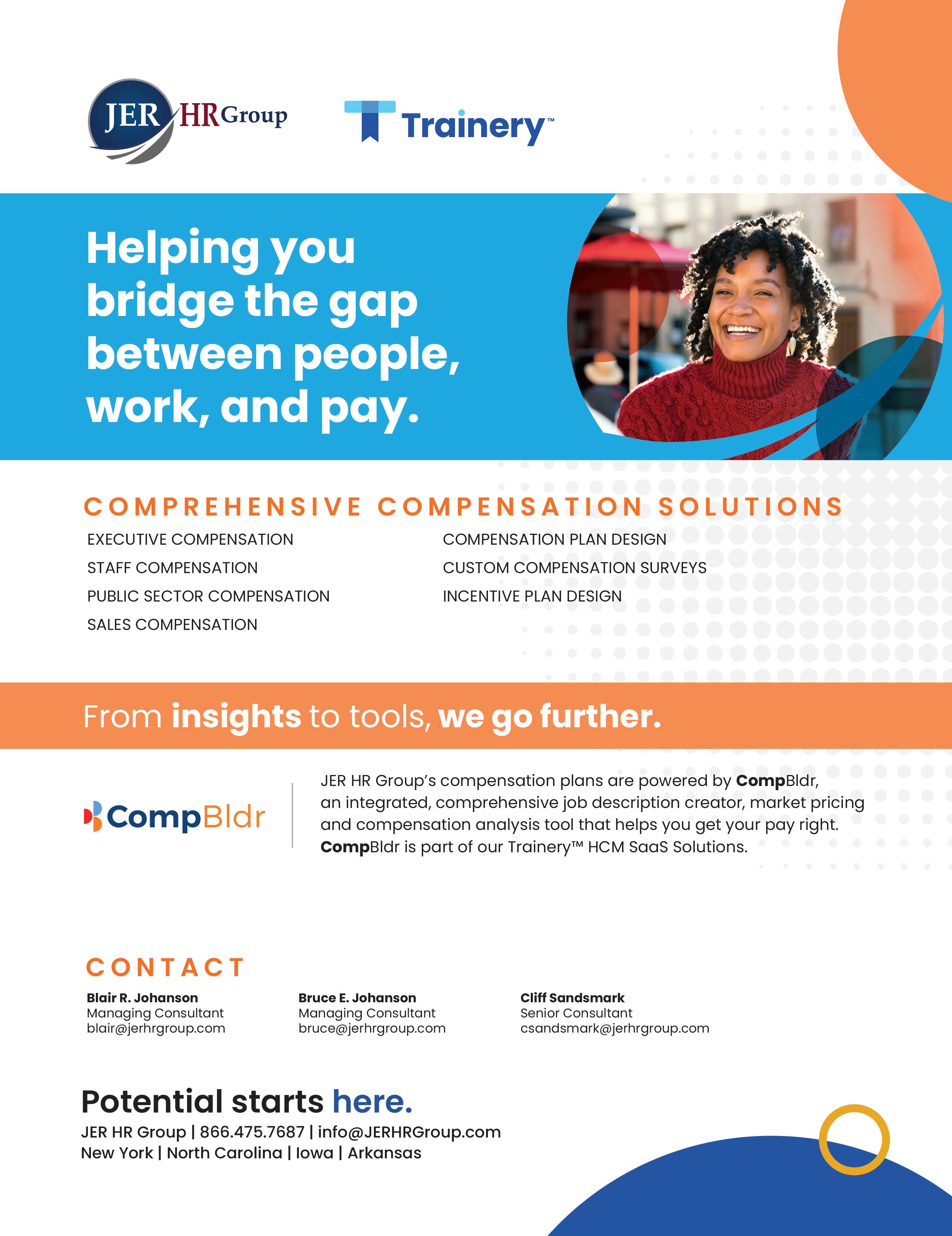
At a pivotal moment for business, RESET outlines how organizations can redesign the workplace for a post-pandemic future
The Society for Human Resource Management President (SHRM) and CEO Johnny C. Taylor, Jr., SHRM-SCP, announced his new book R RESET: A Leader's Guide to Work in an Age of Upheaval, (PublicAffairs; September 7th, 2021; ISBN: 9781541700437), is available.
R RESET offers a candid, forward-thinking vision for leaders to reimagine company culture and presents data-driven strategies to make a foundational reset for work, workers and the workplace. Taylor's insight charts the path for businesses facing a new reality and serves as part call to action, part playbook for success to rebuild the modern workforce and meet today's extraordinary challenges.
"Your biggest challenge isn't technology, innovation, or even leadership," writes Taylor. "It's finding, hiring and engaging the right talent to thrive now and in the future."
As a sought-after expert and voice of all things work, Taylor is known for charting the way forward through both crisis and uncertainty. R RESET envisions how to reshape the world of work and unleash untapped potential to strengthen the workforce and accelerate performance.
In RESET, Taylor expounds, "We have all heard the old adage 'Never waste a good crisis.' I would offer a friendly amendment: 'Make constant reset your friend.' Upheaval brings about opportunities to rethink, reset, and restructure your organization."
Under Taylor's leadership, SHRM has spurred innovative thought on how HR can empower business to meet the relevant challenges of social upheaval and global crisis.
"RESET is an indispensable manual for every manager, leader and team member," says Laszlo Bock, CEO of Humu and former chief people officer at Google. "Tackling the thorniest issues of talent and culture, Johnny Taylor provides a clear, practical roadmap for leading your organization into the future."
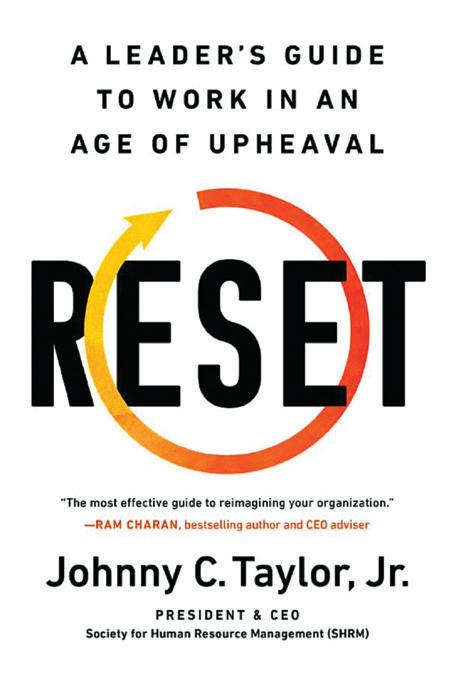
R RESET is now available in hardcover, ebook and audio at all major book retailers.
All author proceeds benefit the SHRM Foundation
Purchase your copy at RESET.SHRM.ORG
ABOUT THE AUTHOR
Johnny C. Taylor, Jr., SHRM-SCP, is President and Chief Executive Officer of SHRM, the Society for Human Resource Management. With over 300,000 members in 165 countries, SHRM is the largest HR professional association in the world, impacting the lives of 115 million workers every day.
As a global leader on the future of employment, culture and leadership, Mr Taylor is a sought-after voice on all matters affecting work, workers and the workplace. He is frequently asked to testify before Congress on critical workforce issues and authors the weekly USA Today column, "Ask HR."
Mr Taylor's career spans over 20 years as a lawyer, human resources executive and CEO in both the not-for-profit and for-profit space. He has held senior and chief executive roles at IAC/Interactive Corp, Viacom's Paramount Pictures, Blockbuster Entertainment Group, the McGuireWoods law firm, and Compass Group USA. Most recently, Mr. Taylor was President and Chief Executive Officer of the Thurgood Marshall College Fund.
He was appointed chairman of the President's Advisory Board on Historically Black Colleges and Universities and served as a member of the White House American Workforce Policy Advisory Board during the Trump Administration. He is a Trustee of the University of Miami, Governor of the American Red Cross, and member of the corporate boards of Guild Education and iCIMS. He is licensed to practice law in Florida, Illinois and Washington, D.C.
A ABOUT SHRM
SHRM, the Society for Human Resource Management, creates better workplaces where employers and employees thrive together. As the voice of all things work, workers and the workplace, SHRM is the foremost expert, convener and thought leader on issues impacting today's evolving workplaces. With 300,000+ HR and business executive members in 165 countries, SHRM impacts the lives of more than 115 million workers and families globally. Learn more at SHRM.org and on Twitter @SHRM.
Available
8 www.HRProfessionalsMagazine.com 13 www.HRProfessionalsMagazine.com 14 www.HRProfessionalsMagazine.com
SHRM’s Johnny C. Taylor, Jr. Introduces His New Book RESET
Now
WHICH SHRM CONFERENCE IS RIGHT FOR YOU?
There are many ways to stay up-to-date on the latest in HR. Need help deciding what option best aligns with your career? Take this quiz and find out!
How would you describe yourself as an HR professional?
I'm more of a specialist, passionate about one topic.
Compliance is my jam! I love making sure people are safe and protected in a world where rules and regulations are constantly changing.
I love culture! Building teams and selecting the right people for roles is my passion.
I'm more of a generalist, interested in lots of different things.
Feb. 26-28, Washington, D.C. & virtual
Properly prepare for—and respond to—new and evolving workplace and employment law issues so you can continue to create a better workplace and a better world. Gain the intel you need to successfully anticipate and navigate employment laws, stay compliant with regulations, and mitigate legal risks
Apr. 16-19, Orlando, FL & virtual
Jun. 11-14, Las Vegas, NV & virtual
I am an equity champion! Ensuring my organization is diverse, equitable and inclusive sets my soul on fire.
Oct. 30-Nov. 1, Savannah, GA & virtual
Nothing will impact your organization's culture or bottom line more than employing the right people. Learn how to reach untapped talent pools, retain high performers, stay on top of recruiting trends and innovations to remain competitive, and connect with the brightest minds in recruiting and talent management.
Get a full range of HR education with more than 200 sessions from world-class speakers. From the basics that all HR professionals need to know, to offerings for C-suite leadership and the latest ideas that are changing the workplace landscape, SHRM23 will help you stay on top of what’s to come in the world of work.
Gain the latest strategies and fresh insights you need to face your own biases, address inequalities and shift exclusionary workplace habits to help boost employee satisfaction and bottom-line business outcomes. Be empowered and energized to create a world of work that truly works for all. For
221745
more information visit shrm.org/2023conferences-hrp
Background Screening Strategies for 2023
By JOHN HAWKINS
Starting the new year on the right foot means HR must plan now. As you craft your strategy, include considerations for background screening.
As the labor shortage drags on and the economy tightens, what worked in 2022 may not be an option in 2023. HR must closely review your company’s current background screening policy to determine the edits and additions it needs to protect your workplace and avoid litigation.
Here are the main points to ponder to help you build and execute the most seamless, highest-performing background screening strategy possible in 2023.
First, commit to:
Formulating a Thorough, Written Background Screening Policy
Having it in your mind or remembering past conversations about how to handle background screening isn’t good enough anymore. A written policy allows HR and hiring managers to reference it when they need clarification. It also serves as a valuable tool for new people.
A written background screening policy keeps your processes consistent and compliant and ensures a fair and relevant background screening process. The good news is some background screening vendors now offer policy-writing services to their clients. Using such a service saves you time and keeps your policy thorough and up to date.
Understanding Your State’s Drug (and Other) Laws
Employers must follow drug laws and regula tions in the states where they operate. These change almost every year, especially with marijuana legalization trending.
Companies must decide whether they will test for marijuana as part of their pre-employment screening process. They also need to determine when they will use drug testing, such as random, upon reasonable suspicion, or post-accident. These decisions hinge on the laws in your state.
Partnering with a drug screening vendor that stays informed on new and upcoming regula tions facilitates compliance. Open a dialogue with your current vendor about new ways for staying on top of changes.
In addition, various states are now requiring special disclosures and authorization forms. Make sure your company uses the correct set by state.
Following Adverse Action Procedures Every Time
Failing to follow adverse action require ments is one of the easiest ways to get your company sued. If you decide in whole or in part not to hire a person because of information uncovered in their background check, you must follow the Adverse Action procedures outlined in the Fair Credit Report Act (FCRA), which includes:
• Pre-adverse action - Send the applicant a letter notifying them you will be taking adverse action against them. Include a “Summary of Rights Under the FCRA” and a copy of the background check
• Waiting period - Employers must give the candidate time to receive the Pre-Adverse Action Letter and dispute the information if they choose. There’s no set amount of required waiting time, but 5 business days is the widely accepted time frame.
• Final notice of adverse actionSend the Final Notice of Adverse Action that includes an expla nation of why there wasn’t an offer extended to the candidate.
Keep in mind some states have their own rules, and employers must add language telling the applicant specifically what part of the background check caused them not to hire the applicant. Follow this process every time you don’t hire a person because of infor mation found in their background check.
Maintaining a Relevant, Fair Screening Process

Avoid background checks that don’t have anything to do with the job you’re trying to fill. This means a forklift driver doesn’t neces sarily need to be screened for a collegiate degree, but an accountant would. In addition, don’t haphazardly screen applicants only if you don’t like their looks or they give you a bad “gut feeling”.
Screen everyone fairly and only with background checks that relate to the job they’re trying to land. Otherwise, you could be nailed by discrimination lawsuits, which can ruin your new year in a hurry. Using a hiring matrix and a decision tool to mark the report is an increasingly popular way to maintain a consistent screening process.
Once you’ve committed to the previous points, act by:
Finding Ways to Decrease Time-to-Hire
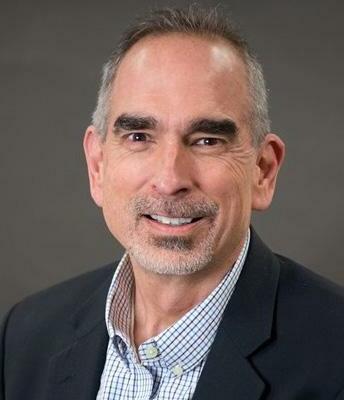
The talent shortage is expected to extend into 2023. That means if you take too much time to make a hiring decision, your
top candidate may end up on a competi tor’s payroll. Your ATS and background screening partner should be taking steps to create a candidate-first experience through technology and tracking.
Find ways to move your process along faster. Can your background screener offer ways to return your background checks quicker? Is there a faster way to order? Does your background screener provide everything you need so you can order only once?
Keep your finger on the pulse of every aspect of your background check and proactively address holdups and obstacles. Expect your vendor to be available to discuss your process and answer your questions.
Revisiting Your Background Screening Vendor
Maybe your vendor served your needs before, but are they exceeding your expec tations now? Is their service and help with compliance filling the bill or leaving lots to be desired? Would new services be beneficial to you? Many employers are now screening applicants’ social media profiles and using driver monitoring even on employees who don’t operate vehicles full-time.
Schedule a meeting with your current vendor to ensure you’re using everything they offer to your advantage. And consider looking at other options to help stay in compliance and provide services your current partner doesn’t offer.
Embracing Technology to Elevate Your Candidate Experience
Technology has permeated all facets of business, and your background screening process is no different. Set up texting for reminders to candidates and use mobilefriendly ways to get the applicants’ signa tures, share documents, and even complete applications. There are big advantages that come with mobile technology like fewer data errors, less time wasted, and a more seamless candidate experience.
Preparing for a new year requires HR to plan, budget, and strategize about numerous topics and concerns. By laying the groundwork up front, you can be confident in rising to the challenge and meeting any surprises agilely and swiftly. Background screening goes much smoother when you plan in advance. Good luck in 2023!
John Hawkins, Senior National Account Executive Data Facts, Inc. JHawkins@datafacts.com
www.datafacts.com
16 www.HRProfessionalsMagazine.com


221855 Learn more at: SHRM.COM/ELCC23-HRP EMPLOYMENT LAW & COMPLIANCE CONFERENCE FEBRUARY 26–28, 2023 | WASHINGTON, D.C. & VIRTUAL STRUGGLING TO STAY ON TOP OF EMPLOYMENT LAW AND COMPLIANCE REGULATIONS? The SHRM Employment Law & Compliance Conference is here to help. 20+ legal experts are joining us in Washington D.C., Feb. 26-28. They’ll share the updates you need to know so you’re prepared for any federal, state, and local employment law changes.

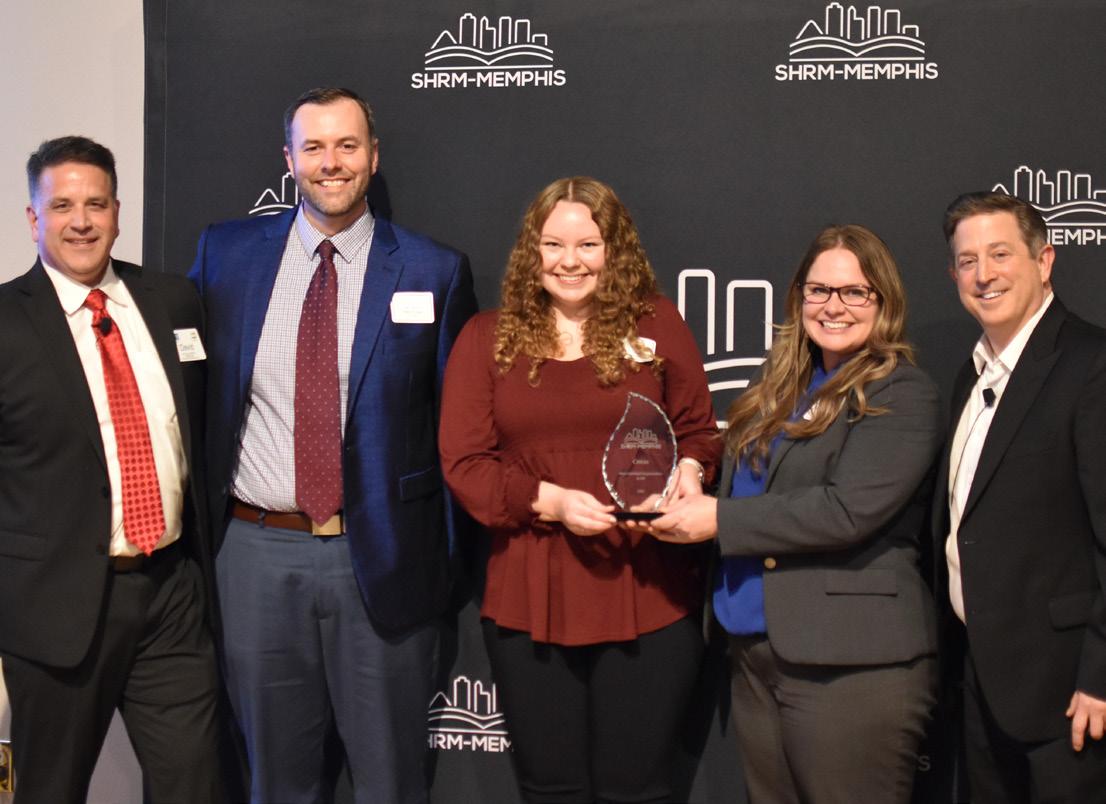

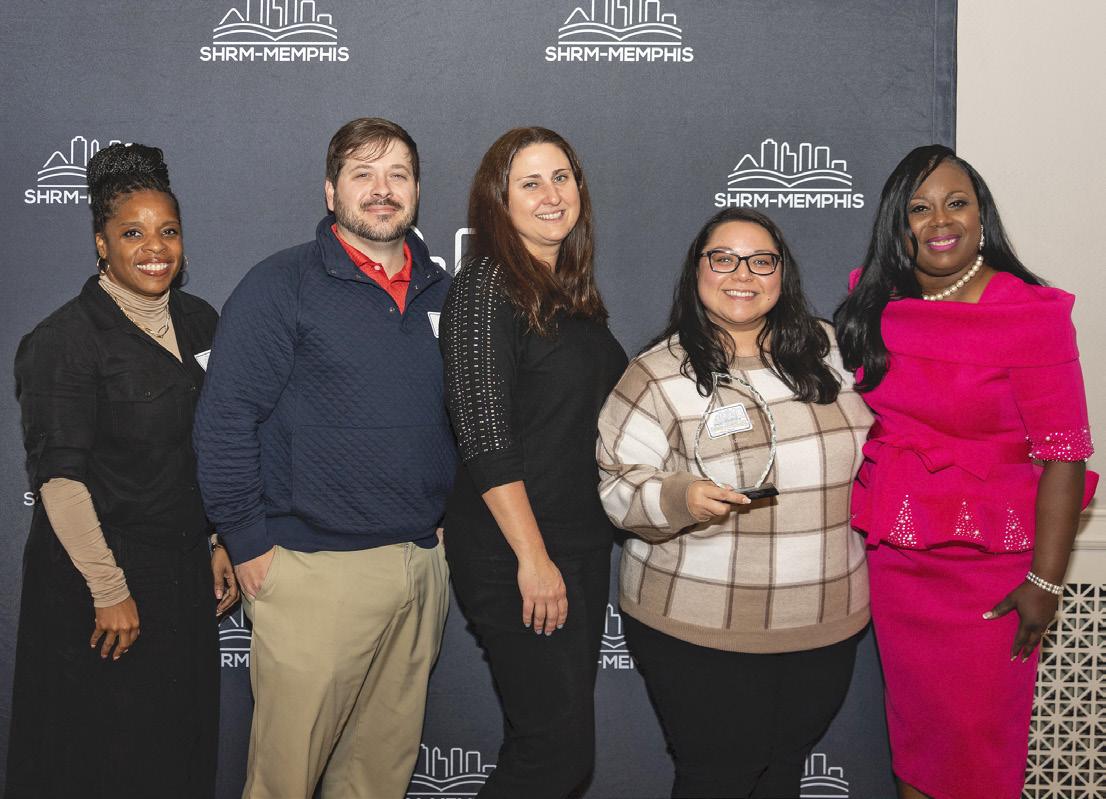
 SHRM-Memphis HR Most Admired Organization
SHRM-Memphis HR Team Excellence Award SHRM-Memphis HR Excellence Awards Attendees
The Cintas Team (L-R) David Dufour, SHRM-Memphis President, with Kevin Tucker, Mary Merschat, and Crystal McAnnally, and Brad Federman, SHRM-Memphis President-Elect.
Memphis Shelby County Schools (L-R) Andrea Williams, Danette Hardy, and Arby Martin with Dr. Deneen Lester
The AutoZone Compensation Team (L-R) Tray Keaton, Jacob Benefield, Ashlee Jordan, Gerianne Roberto, with Dr. Deneen Lester
Attendees at the SHRM-Memphis HR Excellence Awards at the Memphis Pink Palace Museum.
SHRM-Memphis HR Excellence Award in Compensation
Photo credit Rhonda Consentino Photography
Photo credit Rhonda Consentino Photography
SHRM-Memphis HR Most Admired Organization
SHRM-Memphis HR Team Excellence Award SHRM-Memphis HR Excellence Awards Attendees
The Cintas Team (L-R) David Dufour, SHRM-Memphis President, with Kevin Tucker, Mary Merschat, and Crystal McAnnally, and Brad Federman, SHRM-Memphis President-Elect.
Memphis Shelby County Schools (L-R) Andrea Williams, Danette Hardy, and Arby Martin with Dr. Deneen Lester
The AutoZone Compensation Team (L-R) Tray Keaton, Jacob Benefield, Ashlee Jordan, Gerianne Roberto, with Dr. Deneen Lester
Attendees at the SHRM-Memphis HR Excellence Awards at the Memphis Pink Palace Museum.
SHRM-Memphis HR Excellence Award in Compensation
Photo credit Rhonda Consentino Photography
Photo credit Rhonda Consentino Photography
18 www.HRProfessionalsMagazine.com
Photo credit Rhonda Consentino Photography


221835 CONFERENCE & EXPO APRIL 16-1 9 , 2023 ORLAND O , FL & VI R T U AL Take your recruitment and retention strategies to the next level by networking with peers and learning from industry leaders at Talent 2023. With 80+ speakers, 70+ sessions & 7 content tracks covering: ■ Engagement & retention ■ Sourcing & recruiting ■ HR talent acquisition strategic planning ■ Talent selection process ■ Technology & data analytics ■ Diversity, equity, & inclusion ■ Leadership & development *SHRM Toolkit: Developing Employee Career Paths and Ladders **Savings compare early-bird rates to onsite rates. Deal closes at 11:59 PM EST, December 16, 2022. Register before Dec. 16 and save $400** shrm.org/talent-23-HRP You’ll leave with the tools and strategies you need to remain competitive in the changing talent landscape. Did you know 29% of workers named lack of growth opportunities as their reason for wanting to quit?* CONFERENCE REGISTRATION & HOTEL BLOCK ARE NOW OPEN
Are You a Benefits Superhero?-
How being a benefits superhero can dramatically increase employee loyalty and retention.
By William Brown, CPA
Pretend you live in a dystopian world where vi llains terrorize the planet and superheroes are the only things s tanding between order an d chaos. To save humanity, this league of heroes must make a choice: 1) defeat a band of supervillains or 2) hire and retain a team of valuable, loyal employees.
Everyone in HR would immediately scream, "Defeat the supervillains!"
It's a funny question, but what isn't so funny is trying to attract and retain top talent in the real world. And it's not just about "fickle" employees or "too much competition." With 76 percent of employers having been 'ghosted' by a candidate and a labor force participation rate of around 62 percent, it's getting tough out there.
So, here you are, trying to remain culture-minded and budget-focused while you craft the most appealing compensation packages. Your mission? To attract, interview, hire, and onboard employees who will fit with the company culture and stay loyal and grow in value. That's a lot to handle, even for superheroes.
The solution is multi-pronged, and no one person has all the tools needed. In fact, every superhero needs a team. With their team, they are unstoppable.
So, who's on your team? Right now, I bet you have a league member you think of maybe once a year during renewal season. And yet, all year long, what they provide to your team is instrumental to everyone's health, loyalty, and very lives.
I'm Will Brown and I'm a "broker crusader" to my clients-to HR professionals like you who want to be superheroes in the eyes of their employees. But what about rising costs? Insurance premiums are rising more quickly than inflation! That's why you need a broker who:
• Understands the levers that drive premiums.
• Knows how to search for creative strategies.


• Recognizes employee goals, so you only pay for the insurance perks your team needs.
• Performs a thorough yearly analysis rather than adopt the "set and forget" attitude that plagues most brokerages.
At The Benefits Group, we are defying the "order-taker" broker stereotype. We see that small- to mid-sized businesses are being underserved in their ability to offer Fortune 500 benefits to their employees. And we're doing our best every day to change that.
Can a benefits broker change the world? For your employees, I believe we can. We thrive on getting the best deals and beating the market. In virtually every competitive situation, we win. Not all heroes wear capes. But we're ready to make you look like a superhero to your employees. Let your employees see how much you care through the affordable benefits you offer.
Let us turn you into a Benefit Superhero!
20 www.HRProfessionalsMagazine.com
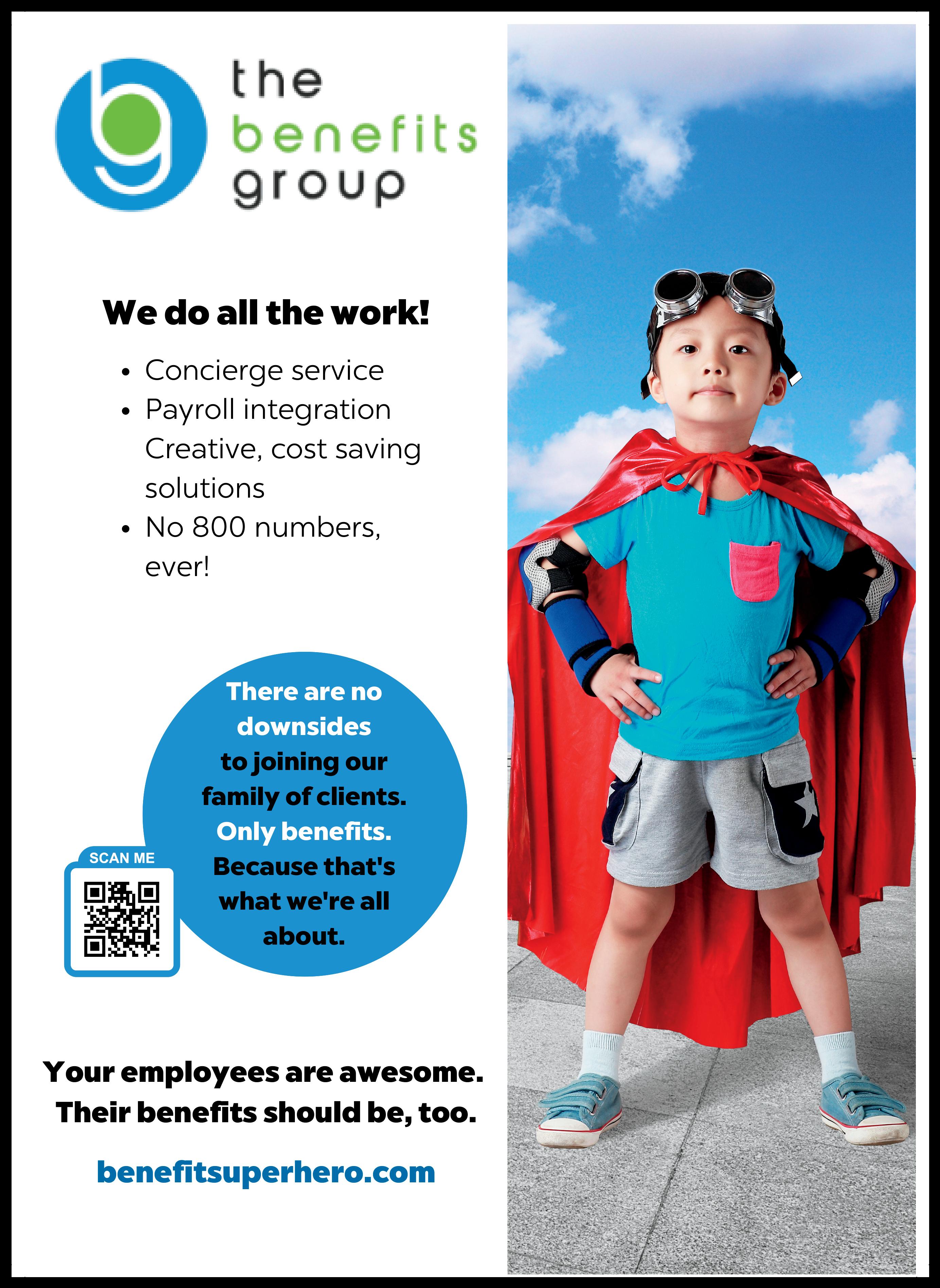
21 www.HRProfessionalsMagazine.com
•
What Employees Expect from Your ESG
By AMY SHABACKER DUFRANE
Environmental, Social and Governance (ESG) issues were first mentioned in the 2006 United Nation’s Principles for Responsible Investment (PRI) report. For the first time, ESG criteria was required to be part of the financial evaluations of companies, an effort to develop sustainable investments. In other words, the emphasis on ESG was initially driven by investors – mostly major institutional investors – and a global survey of 475 institutions found that 68 percent say an ESG strategy has significantly improved returns.
Fast-forward to 2022 and frameworks for ESGs have moved beyond the boardroom into the workplace. The impact of a well defined ESG program can be measured and reported, albeit some aspects better than others. For example, attempts to accurately report greenhouse gas emissions and climate risks can be thwarted by other variables. But there’s one part of the ESG that can be indisputably reported: the Human Capital – the social – part of an ESG.
First, let’s look at what’s typically reported in this category:
• Gender pay equality, specifically the ratio of salary and renumerations of women to men
• Diversity and inclusion, the percentage of employees by age, gender, race, etc.
• Wage levels, such as paying a living wage
• Learning and development as they relate to employee turnover rates
• Culture initiatives, including volunteering, internships and STEM programs
This level of potential organizational change might appear overwhelming, especially given what’s already on HR’s plate. Further complicating ESG projects is the dearth of qualified talent to help lead sustainability efforts, collaborating with stakeholders across the business. Regardless, a solid commitment to an ESG has become an employer branding and talent retention requirement. The majority of the workforce – millen nials and GenZ – especially value the issues espoused by ESGs.
The EY 2022 Work Reimagined Survey reflected on what employees value, from pay to purpose. An employer’s purpose and culture, as well as their sustainability goals – were stated reasons why an employee might change jobs. Yet, employers didn’t cite the same responses when asked how they ensure employees thrive in a new work experience. And 20 percent of employees perceived pay equity as the single most important action a company should take to improve DE&I. In contrast, the largest number of employers (17 percent) cited reviewing hiring criteria as the most important action to take. Could the ESG gap between reality and expectations be that significant between employer and employee?
For an ESG to succeed, organizations need to put forth measurable standards and reliable reporting. Transparency is the cornerstone of an effective ESG, requiring defined taxonomies that include which data can be regularly measured. For example, reporting on pay equity before putting a plan in place to fix pay inequality isn’t going to be well received by the workforce, especially since pay remains the primary means of attracting and retaining the best talent.
Pay being obvious, there are other aspects of the ESG that are important to employees. Corporate social responsibility programs can enable a company to shine within the broader ecosystem of its community and industry. Examples include addressing corporate social justice experi ences lived by groups disadvantaged by society. A stated purpose such as Danone’s bringing health through food revolution can energize a workforce, creating a culture of caring behind a high-profile cause.
According to research by McKinsey, when companies “give back” employees react with enthusiasm. This strong sense of purpose has become even more important post-pandemic, a period during which employees are evaluating the integration between work and life. Further findings from McKinsey underscore that when employees sense alignment with the organization’s purpose, benefits such as stronger employee engagement, heightened loyalty and a greater willingness to recommend their employer to others abound.
What doesn’t work when it comes to a successful ESG? Vanity projects such as the CEO’s favorite cause, hallway posters or vacuous platitudes in the annual report. Embracing human rights including #metoo and #blacklivesmatter, human resource development, pay transparency, and workplace safety are tangible examples of material changes that the “S” in ESG can make in the workforce.
It’s the time in the year when we reflect on our personal and professional accomplishments. HR’s role remains one of the most challenging – and most gratifying – in terms of organizational influence. As we plan for success in what could be unpredictable times in 2023, I urge all of us to shine a light on ESGs and how they can do more to ensure a positive employee experience.
Amy Schabacker Dufrane, Ed.D., SPHR, CAE, is CEO of HRCI, the world’s premier credentialing and learning organization for the human resources profession. Before joining HRCI, she spent more than 25 years in HR leadership and teaching roles. She is a member of the Economic Club, serves on the Wall Street Journal CEO Council, is a member of the CEO Roundtable, and is on the board for the Columbia Lighthouse for the Blind. Amy holds a doctorate from The George Washington University, an MBA and MA from Marymount University, and a BS from Hood College.

22 www.HRProfessionalsMagazine.com
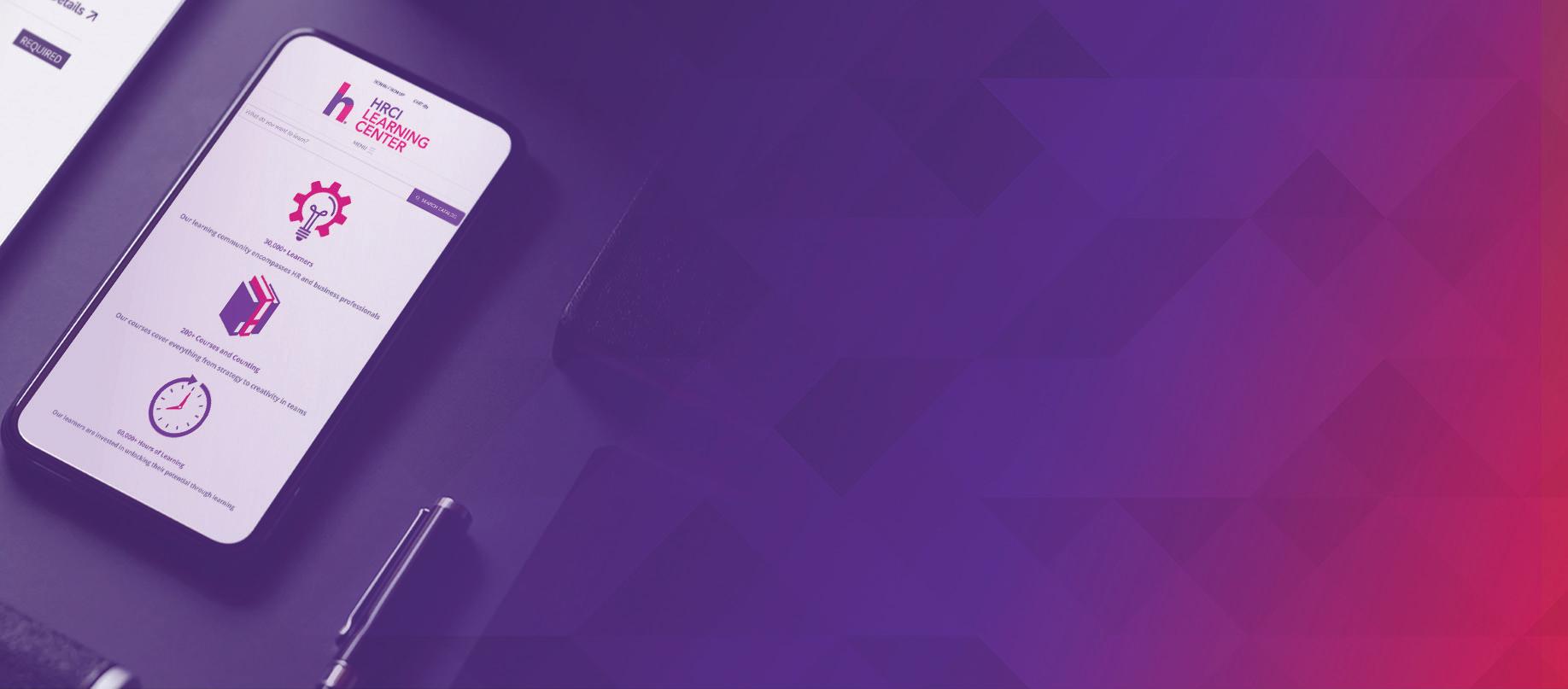
Save 20% on HRCI® Courses in 2022 CERTIFICATE IN DIVERSITY AND INCLUSION IN HR MANAGEMENT The three courses comprising our certificate were developed in accordance with the International Organization for Standardization’s guidance on diversity and inclusion for organizations (ISO
• Fostering an Inclusive Culture • Assessing Diversity and Inclusion • Hiring and Retaining Diverse Talent Visit learn.hrci.org and use code HRPro2022 to claim your discount at checkout. HRCI’s learning catalog features 250+ courses and certificates. Earn 12 general HR credits towards any of HRCI’s eight credentials, including SPHR® and PHR® . This offer will expire on December 31, 2022 at 11:59 pm ET and cannot be combined with any other promotions. 23 www.HRProfessionalsMagazine.com
30415:2021).
Is That Really My Job?
By KEN JOYNER
Throughout my 30-year career working in Human Resources, I have witnessed the Human Resources function rebrand itself a multitude of times. What started as the Personnel Department slowly became known as the Human Resources Department and now, in an ever-changing workplace, the department is out to reinvent itself again. As industries become more competitive and talent becomes harder to come by, Human Resources is emerging as a strategic function within organizations and embracing its new name, the People Team.
Regardless of which decade or transformation we look back on, the one constant is that organizations continually expect more from their HR team. In an effort to please our leaders and organi zations, with zeal and a great attitude, we’ve taken on every task that’s been throw our way. We have done everything from coordinating volunteer opportunities for our team members, planning board meetings, assisting C-Suite leaders with various tasks and being the emcee at the annual holiday celebration. For better or worse, HR departments often become a catch-all for organizations. Included in the fine print of being your organi zational catch-all is vending machine afficionado! HR teams are expected to manage vending machine equipment malfunctions and provide a resolution when a team member does not get what they paid for.
It always bugged my team that another duty we were constantly responsible for was being the cashier for the vending machine company. Anyone who puts a dollar in a vending machine is doing so with an understanding that the cold drink or snack they are selecting should dispense without an issue. One surefire way to get an employee riled up is to have a vending machine eat their last dollar bill and not vend that can of ice-cold Coca Cola on their final break of a 12-hour overnight nursing shift. For some reason, unbeknownst to me, employees think that HR is respon sible for the vending equipment and would come marching into our office and demand a refund. Employees do not mince words as they communicate their anger and frustration. I’ve seen every thing from temper tantrums to a near full breakdown over a Twix candy bar not vending properly.
I always say that nothing surprises me after working in Human Resources for so long. Yet, I read an article in the Des Moines Register about a man who was fired from his job after using a forklift to free a stuck candy bar in a company vending machine. If that wasn’t enough, the Huffington Post had an article about a woman who set a vending machine on fire after it took her money and didn’t dispense her can of Pepsi. While these might be extreme examples, it shows how upset employees become
when they spend their hard-earned money in a vending machine and get ripped off. Babysitting the vending equipment doesn’t stop there, if I had a nickel for every time the HR team heard a team member complain that the vending machines were out of their favorite drink, snack, or candy bar, I’d be on Forbes’s next Billionaire list. Does any of this sound familiar?
While the scope of my HR team continued to expand, I had to find a way to alleviate the vending machine burden from my team. I found the solution by partnering with Advantage Refresh ments, one of the leading companies in the vending industry today. The Advantage Refreshments difference is the quality of machines they install in your location that include a guaranteed product delivery system. In simple terms it means that every time an employee goes to a vending machine in the breakroom, they will either get the product they paid for or their money back, every time, period! No more time being spent by your HR team being the refund department for the vending company. This feat is accomplished by bringing in brand new vending equipment with state-of-the-art technology. Say good-bye to those old, dilap idated machines that should have been retired years ago and let Advantage Refreshments show you the future of vending.
The equipment alone is impressive. Who knew that there were so many options when it came to a vending machine? Advantage Refreshments can get you the right equipment for your employee population, frozen food machines, drink machines, snack machines, combo drink and snack machines – you name it, they can provide it. Suddenly, your HR team is no longer the middleman between employees and the vending company. Team members can get back to focusing on things that add value to the organization.
I have been so impressed with the technology in the machines and the impact that a robust employee refreshment program can have on an employee population that I have officially joined the team at Advantage Refreshments and am helping other HR leaders overcome the same issues that once bogged me down. It is exciting to be aligned with an organization that is focused on helping HR teams solve some of the day-to-day issues they face. If I’ve learned one thing in my career thus far, it’s to never under estimate how important that cold drink is to an employee when they sit down for their break.
Ken Joyner, MBA, SHRM-SCP
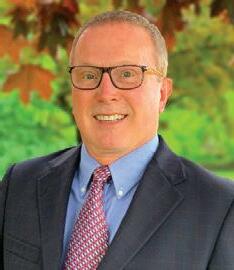

Director of Marketing
Advantage Refreshments
715-587-7900 ken@advantagerefreshments.com www.advantagerefreshments.com
24 www.HRProfessionalsMagazine.com

If so, contact me today, ken@advantagerefreshments.com or 715-587-7900. Does your current Vending Program look like this? 25 www.HRProfessionalsMagazine.com
Minding your Social Health
Loneliness isn’t just a sad affair, it can be an unhealthy one, too.
By KATIE O’NEILL
Itdoesn’t matter if someone is excessively extroverted or fiercely introverted, all human beings have deeply rooted needs for social connection. The spectrum of quantity and frequency of these connections can vary, but we’re all susceptible to feelings of isolation and loneliness when these social needs are not met.
Our social landscape has changed quickly in the past few years, which could be contributing to an increase in the number of people reporting a sense of ongoing loneliness and social disconnect. In addition to becoming more and more reliant on digital interactions, our culture tends to highly value self-reliance. Feelings of not being heard, validated, or understood by those close to you as well as your peers can create an insidious sense of isolation and depression that many people find difficult to pinpoint.
Social health is a complex and highly variable component to our wellbeing. We can make recommendations on which foods to eat, how much exercise you should be getting, and what types of preventive care you might need. But everyone’s social barometer can skew a bit differ ently. There are also unique components to fulfilling your social needs – it’s not just the deep emotional connections that we need, but also small, community interactions that allow us to feel part of a greater connection to others. For example, if you go to a fitness class, even if you don’t interact with anyone directly, just being with likeminded people can promote a sense of social belonging. Speaking with people in line at a grocery store, on a bus, or elsewhere in public has been found to increase people’s levels of happiness and connection. Although it can be uncomfortable (and sometimes unwanted) to engage with others in public, we don’t realize how much we appreciate people around until we find ourselves with no one around.
The quality of social interactions is also important. No one is likely surprised that the growth of social media has negatively impacted our social health. What are some potential reasons for this? People might not be representing themselves authentically, which can lead to feelings of competition and comparison. Interactions often become argumen tative and intensely heated, leading to combativeness with others or feeling attacked, bullied, and divided. Those polarizing exchanges can create stress and inner conflict without resolution.
People can feel not only misunderstood but lacking a sense of common ground with total strangers, friends, or even their Aunt Carol. Even positive social media interactions can seem superficial and a poor substitute for more in-depth interactions. Despite these issues, social media still can be a fun tool when used to keep up with friends and family from a distance, connect with similarly minded communities and peers, share life updates, and stifle any unwanted urge to attend your high school reunion.
Along with these broader interactions, we also have a need to connect and feel deeply known. Some people prefer to be in larger groups where they can talk and share feelings, while for others, having one- on-one interactions with a close friend is more fulfilling. The health of relation ships is also an important factor. Feeling valued, and sharing mutual respect, trust, and compassion helps to build emotional safety. Relation ships can begin to exert a negative impact when those foundations are absent or broken. Resources can be useful to help people learn how to evaluate different relationship dynamics, and to be able to recognize when and how to set boundaries or walk away from interactions and relationships that deteriorate emotional safety and self-worth or feel one-sided.
It is also important to note that people who are part of any marginalized groups, or who might be experiencing things such as domestic abuse, substance misuse, grief, chronic pain or illness, or who are neurodi vergent are more susceptible to feelings of disconnection.
For the HR professional, contributing to a workplace that fosters inclusion, positive interactions, and respect can help to promote better employee social health. Providing access and reminders for resources such as Employee Assistance Programs (EAPs), community resources, and workplace social groups can provide more tools for engagement. While addressing social health is more complex and multi-factorial than other aspects of health, the workplace culture is uniquely poised to offer opportunities from within and through outside resources to help improve social and community connections.
 O’Neill, DC, BS Vice President and Clinical Wellness Practice Leader McGriff
O’Neill, DC, BS Vice President and Clinical Wellness Practice Leader McGriff
Katie.ONeill@McGriff.com www.McGriff.com
 Katie
Katie
26 www.HRProfessionalsMagazine.com
InsightsTM



www.McGriff.com
expense to
a
competitive advantage...with McGriff MORE
perational Efficiency, Risk Mitigation and the Employee Experience by answering three

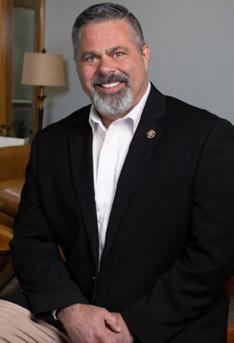

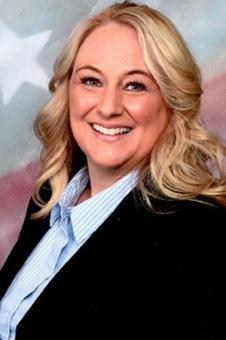

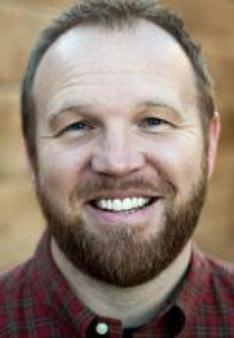
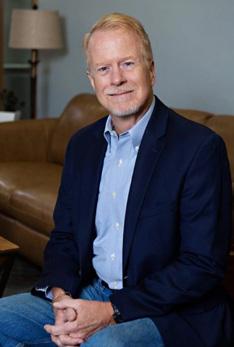

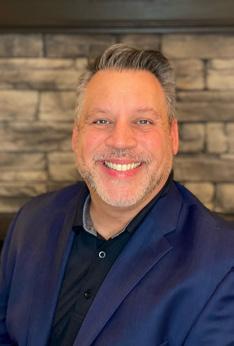
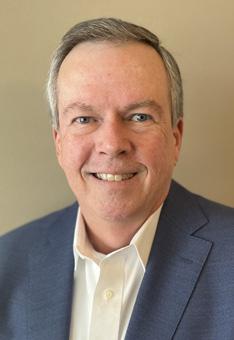
Douglas Elms PPS, PMP, LSS-GB, CIPM Principal Consultant Behavioral Threat Management, Executive and Family Protection, Global and Corporate Security. Michael Johnson Police Lieutenant - Retired, CIPM Consultant/Director of Security Operations Tim D. Keck Chief of Police-Retired Senior Consultant Expert in performance and behavior under pressure. Best Selling Author and sought after speaker. Laura Garrett FBI-Retired Consultant Corporate Threat Management, Insider Threat, Counter-Espionage Monte Mills Senior Consultant-Protective Strategies Data Center and High Risk Facility Protection, Dignitary Protection Ryan Rana, PhD LPC/LMFT Consultant Behavioral Threat Assessment & Management Pat Walsh CPP, CFE Senior Consultant-Threat Assessment Corporate Security, Executive Protection, and Behavioral Threat Management. Jason Jackson Consultant Crisis, Resilience, Security, Safety Michael Roche Consultant United States Secret Service - Retired, Threat Assessment & Management Gary Plank Consultant MA-Mental Health Counseling FBI National Center for the Analysis of Violent Crime Police Fellowship, Expert in Behavioral Analysis, Threat Assessment and Management Introducing the Team at Safehaven Security Group Your Team of Professional Protectors Keeping You Safe! Read Biography Read Biography Read Biography Read Biography Read Biography Read Biography Read Biography Read Biography Read Biography Read Biography



ACTIVE SHOOTER TRAINING THREAT TRAINING HR PROS LOVE • Legally Defensible Content • Loved by Participants • Taught by Experts • Practical and Empowering • Live, Webinars, or Animated Video SAFEHAVENSECURITYGROUP.com
A Fireside Chat with Emily M. Dickens, SHRM

Key Takeaways for HR Professionals
By DEE ANNA D. HAYS
In October, I had the honor of hosting a fireside chat with Emily M. Dickens, J.D. at the 2022 HR Tampa Conference & Expo. Ms. Dickens is Chief of Staff, Head of Government Affairs and Corporate Secretary for SHRM, the Society for Human Resource Management. She is also an attorney with significant and progressive experience in government, higher education and the non-profit sector.
During our talk, Ms. Dickens shared information regarding SHRM Government Affairs, legislation that SHRM is tracking, and other top initiatives. She also discussed how SHRM members might get involved by joining the A-Team or local chapters. This article includes a summary of these important topics along with some key takeaways for HR professionals.
1095 to employees electronically. The extension of the deadline for appeals from the current 30 days to 90 days would allow employers more time to gather appropriate information.
Empowering Employer Child and Elder Care Solutions Act (H.R. 8388): SHRM is asking U.S. House of Representatives members to cosponsor this measure and U.S. Senators to support the introduction of companion legislation. The pressing need for reliable care affects the daily decisions of workers and inhibits the ability of employers to recruit and retain talent. This legislation would better enable employers to support workers with caregiving responsibilities. Specifically, H.R. 8388 would update the Fair Labor Standards Act (FLSA) to treat on-site childcare services and other dependent care assistance provided by an employer like other employer-provided benefits and separate them from an employee’s regular rate. This bill would also provide SHRM members the flexibility needed to provide workers the necessary support to succeed on the job while fulfilling their caregiving responsibilities.
SHRM Government Affairs
According to its website, SHRM’s mission is to create better workplaces where employers and employees thrive together. The SHRM Government Affairs team helps to inform and shape policy solutions that benefit work, workers, and the workplace.

Bills SHRM Is Tracking
· Commonsense Reporting Act (S. 3673 & H.R. 5318): SHRM is asking members of Congress to cosponsor this measure to modernize IRS reporting requirements. This legislation creates a voluntary reporting system to submit health plan information to the IRS before open enrollment begins. According to SHRM’s research, over 32% of HR professionals support the option to voluntarily submit health plan information before open enrollment begins. Additionally, the Commonsense Reporting Act provides compliance relief by allowing employers to transmit the IRS Form
Jumpstart Our Businesses by Supporting Students (JOBS) Act (S. 864/H.R. 2037): SHRM is asking members to cosponsor the JOBS Act and support its inclusion in as part of any larger legislative vehicle. The JOBS Act provides more opportunities for today’s students to access high-quality, short-term education and training programs with federal Pell grants. Expanding access to high-quality, short-term workforce development programs enjoys broad bipartisan support and would represent significant progress towards modernizing the Higher Education Act to meet the needs of today’s workers, jobseekers, and employers. Employers and the government have a dual role to play in the education and training of workers to help them become better qualified for jobs at all skill levels.
Other Advocacy Initiatives on SHRM’s Radar
Caregivers in the workforce. Pay transparency.
Artificial Intelligence in the hiring process. Skills-based hiring (rather than academic degrees). Mental health in the workplace.
2022 SHRM Politics at Work Study
On October 5, 2022, SHRM released new research that shows 1 in 5 U.S. workers (20 percent) have experienced poor treatment in the
Photo of Emily Dickens and Dee Anna Hays at the HR Tampa Conference October 7, 2022
30 www.HRProfessionalsMagazine.com
Photo credit Charles B. Thompson
workplace by coworkers or peers due to their political views. There has been an uptick in political discussions and political volatility in the workplace in the wake of the COVID-19 pandemic and the 2020 presi dential election. Further, SHRM found a quarter of U.S. workers (24 percent) have personally experienced political affiliation bias, including preferential treatment or undue negative treatment on the basis of their political positions or opinions, compared to 12 percent of U.S. workers in 2019.
Accordingly, HR professionals might want to consider developing or updating personnel policies covering the expectations of discussing politics in the workplace. There is a broad spectrum of issues employers can anticipate as a result of employees’ political speech or activities— ranging from discrimination, harassment, and retaliation claims to unfair labor practice charges to decreased employee morale and produc tivity.
Although some employees may believe that their constitutional right to free speech provides wide protection, the First Amendment is actually somewhat limited. In fact, private employers have discretion to discharge or discipline employees for their speech. On the other hand, the First Amendment’s protections do extend to public-sector employers, making it more difficult for them to regulate employees’ speech. Even with private workplaces, several states have laws that protect employees from discrimination for political expression and other political activities.
ADVOCACY
SHRM Advocacy – Getting Involved
According to SHRM’s website:
SHRM’s Advocacy Team (A-Team), composed of nearly 17,000 HR professionals is the core driver of positive workplace policy in action…The A-Team exists to provide HR professionals opportunities to directly influence and advance workplace policy. A-Team members are positioned front and center in efforts to advance the interests of the HR profession in the development of public policy by federal and state governments.
As a member of the A-Team, I have appreciated the legislative updates SHRM provides to its members along with useful template documents for communicating with lawmakers. Any SHRM member in good standing can join without a fee; visit https://advocacy.shrm.org/.
HR professionals may also want to get involved through their local SHRM chapter. Many chapters have legislative directors that provide legislative updates and opportunities to meet with federal and state lawmakers.
Dee Anna D. Hays
HR Florida State Legislative Affairs Director And Ogletree Deakins Attorney-Shareholder Tampa, Florida deeanna.hays@ogletree.com
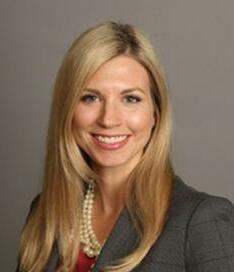

31 www.HRProfessionalsMagazine.com
1 Jeffrey G. Jones, Firm Managing Member, was the conference emcee. 2 Howard Jackson, Regional Managing Member in the Knoxville office, provided a Department of Labor update. 3 Andrew Hebar, member in the Knoxville office; Fred Bissinger, Regional Managing Member of the Nashville office; and Dr. Stephen Loyd, Chief Medical Officer with Cedar Recovery; spoke about “Emerging Issues for Drug Free Workplace.” Dr. Loyd was also the keynote speaker during lunch on Thursday. He spoke on “The Opioid Epidemic: What Employer’s Need to Know.”




















































4 Jim Wimberly with the office of Wimberly Lawson Steckel Schneider & Stine P.C. in Atlanta, spoke on “Three Long Years in Review,” during the opening session. 5 Eric Harrison, member of the Knoxville office, spoke on “The Last COVID-19 Update…We Hope” during the opening session.



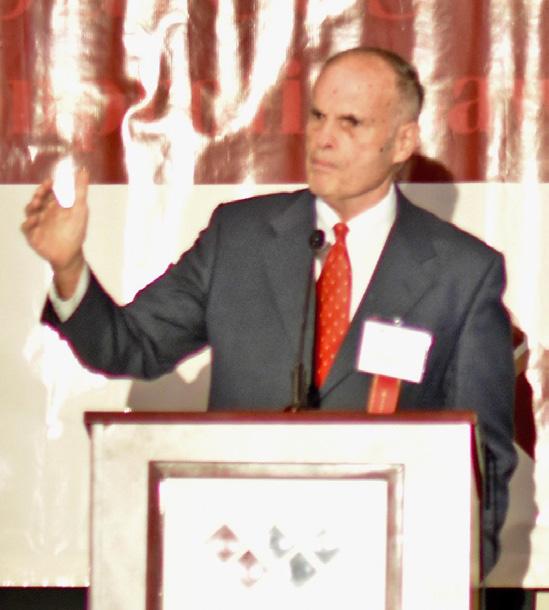
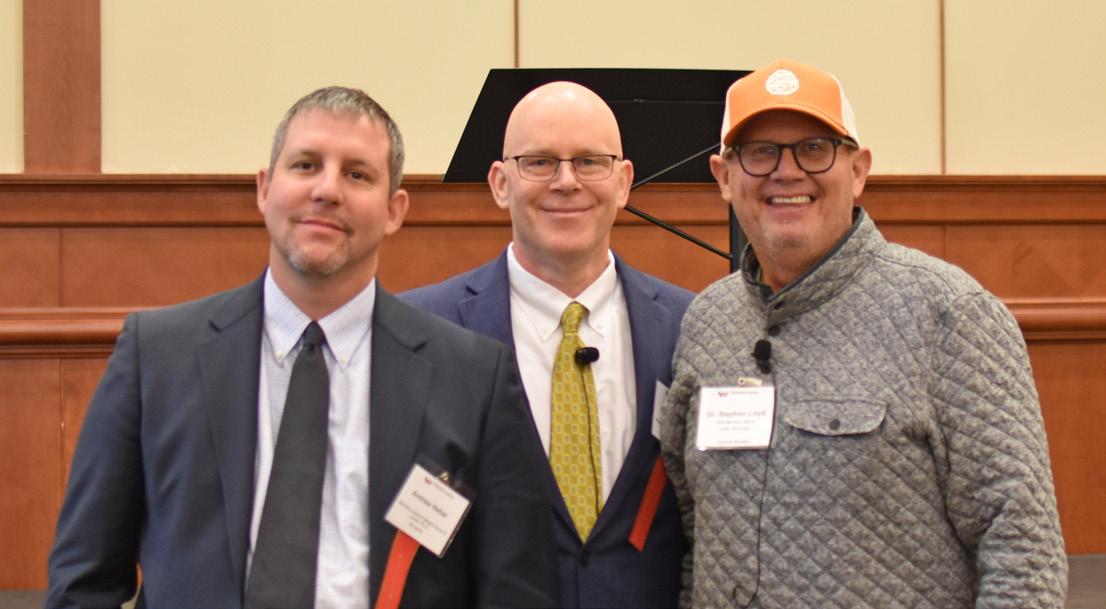
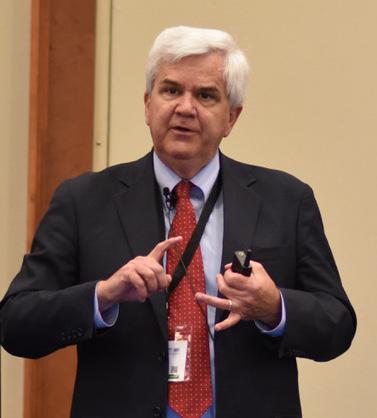
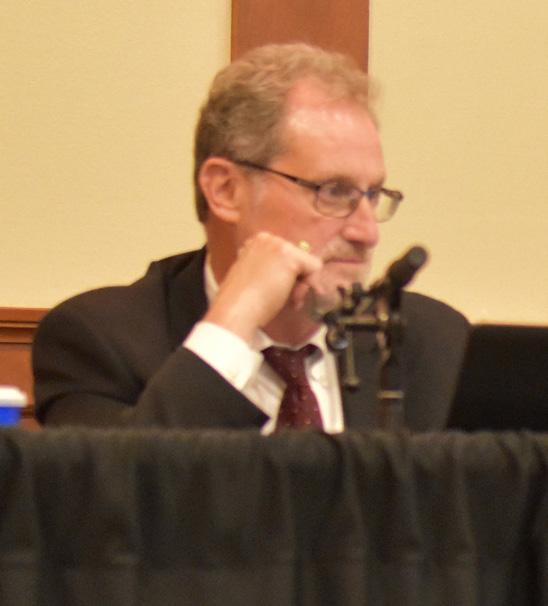


 WIMBERLY LAWSON LABOR & EMPLOYMENT LAW UPDATE CONFERENCE Sevierville Convention Center | November 17-18, 2022
WIMBERLY LAWSON LABOR & EMPLOYMENT LAW UPDATE CONFERENCE Sevierville Convention Center | November 17-18, 2022
3 5 4 32 www.HRProfessionalsMagazine.com
Wimberly Lawson Attorneys
1 2
“What’s New for Handbooks and Workplace Documentation” was presented by Mary Moffatt, member in the Knoxville office. 7 Andrew Hebar, member in the Knoxville office, spoke in the opening session on “A Drug-free Workplace v. A Work-Free Drug Place.” 8 Zachary Kiffmeyer, associate attorney in the Cookeville office, was a co-presenter with Joseph Lynch, a member in the Knoxville office; on the topic of “Workers Comp: How to Deny a Claim and Make it Stick.” 9 Attendees at Mary Dee Allen, a member in the Cookeville office, presented “Challenges for Women in a Much-Changed World,” in a “Singing the OSHA Blues,” was presented by Larry Stine with Wimberly Lawson Steckel Schneider & Stine P.C. in Atlanta.





















































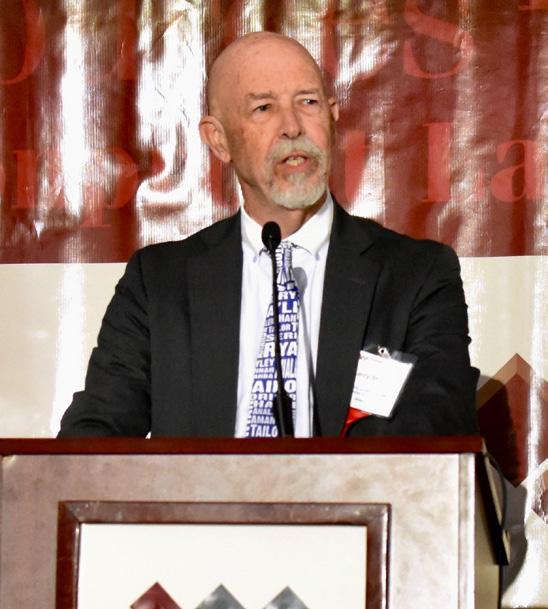
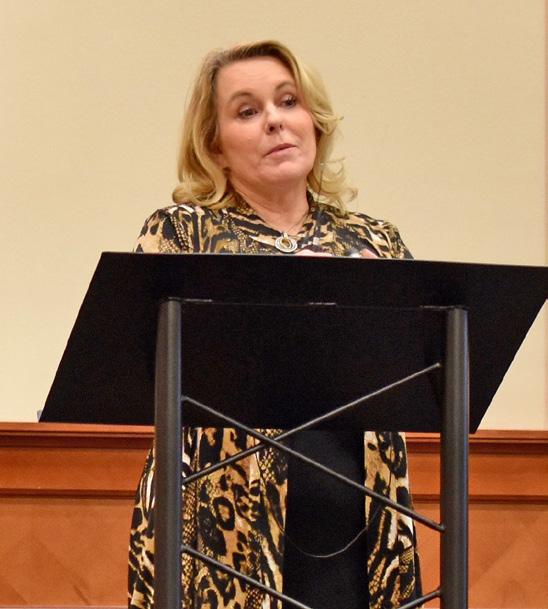

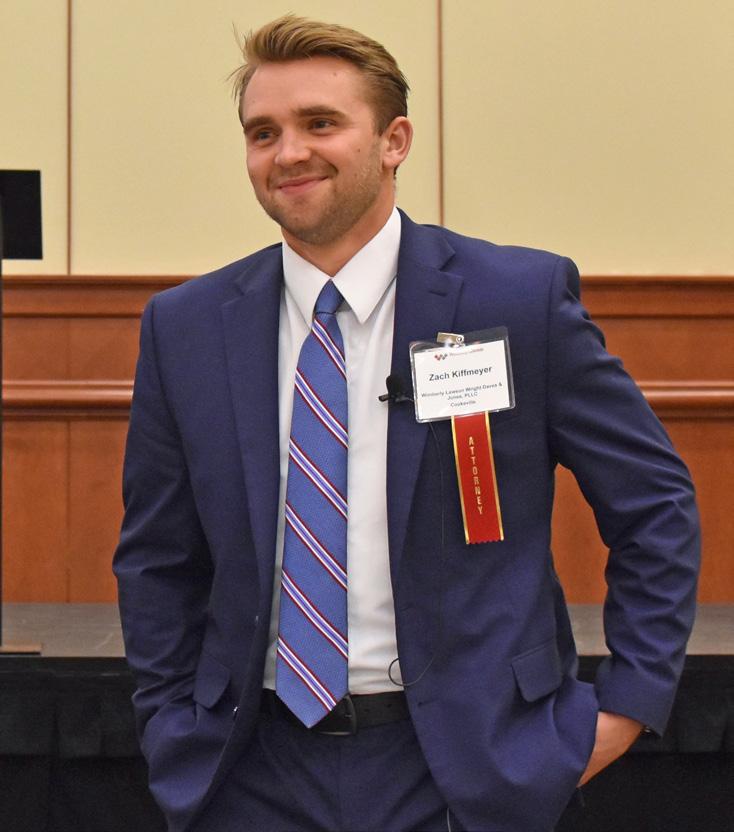
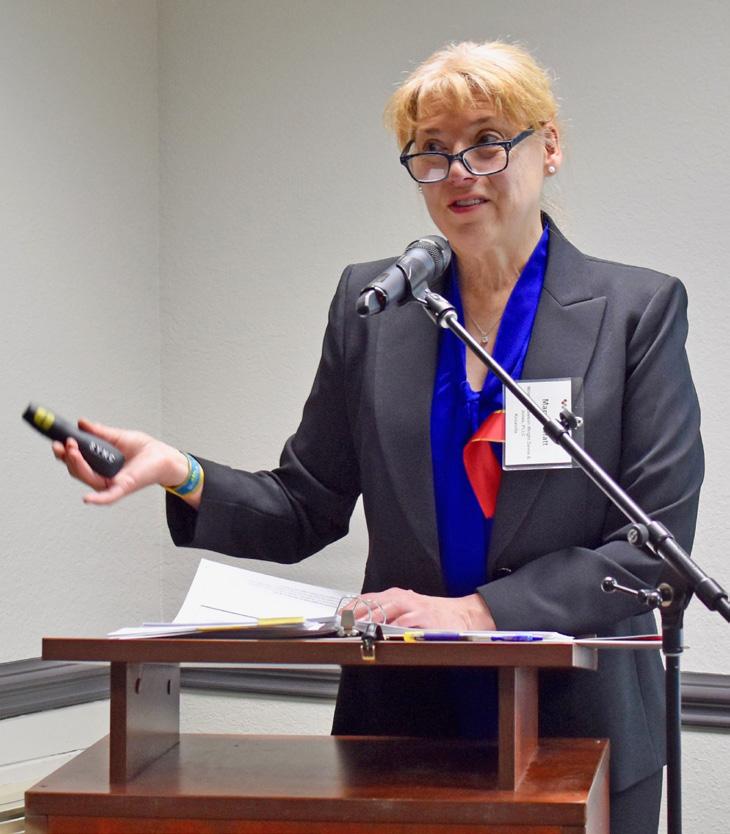

6 7 8 9 10 11 33 www.HRProfessionalsMagazine.com
Wimberly Lawson Attorneys
SHRM CERTIFICATION
SHRM-CP | SHRM-SCP
SHRM CERTIFICATION’S EIGHTH YEAR IN REVIEW:
Supporting SHRM Certification Candidates to Achieve Success
By NANCY A. WOOLEVER
A wise person once said that an individual cannot fully listen to what others are saying if the individual continues talking. SHRM Certification, collectively as a team, always learns more from customers and candidates when we seek feedback by asking for it, and then stop talking and instead listen to feedback. Certainly, the final critical step means incorporating feedback and taking action to influence and change future behaviors, projects and programs. This year we heard a clear message from customers: “please simplify, clarify and streamline information.” Thus, 2022 became The Year of Listening, and the action plan became Streamline, Simplify and Clarify to Improve the Customer Experience.
Growth in the SHRM Certification testing program continued for the eighth straight year with the outcome that SHRM Certification had another banner year. In 2022, we exceeded previous records set in terms of the number of applicants and test-takers, grew the footprint for SHRM Certification in China by more than 10% year over year, and prepared to broaden universal reach by finalizing plans to begin testing both Korean- and Arabic-language exams in 2023. Recertification held steady at 73% overall who renewed either a SHRM-CP or a SHRM-SCP certification.
In May, SHRM implemented the work of the past two years related to the universal practice analysis completed in 2021 to catalog the global evolution of the HR profession in the SHRM Body of Applied Skills and Knowledge (SHRM BASKTM). A shortened exam was delivered as a result of the associated length-reduction study for the SHRM-CP and SHRM-SCP exams, also finalized in 2021 but implemented in 2022. With these major goals accomplished, and with the consequences of the pandemic starting to subside, SHRM certification turned its attention to fine-tuning communications and increased listening efforts to improve customer experiences.
Unchanged is SHRM’s commitment to support to each candidate’s success, and candidate feedback received early in 2022 presented opportunities to discover how to do this well. By asking how to best present information in a way that will help support candidate success and listening to the feedback given, we heard about a clear need for three things: 1) simplify the website by streamlining information, and 2) clarify the entire preparation process into digestible, achievable steps; then 3) expand programs, products and services to support the entire candidate life cycle.
Feedback also clearly endorsed that SHRM certifications continue to be the certi fications most relevant to the work HR professionals do each day, and this explains why eight out of ten aspiring certificants choose to pursue the SHRM-CP or the SHRM-SCP. Research completed in 2022 points to candidates’ desire for increased credibility, skills and confidence as the primary drivers for individuals who choose to take the SHRM-CP or the SHRM-SCP exam. HR executives continue to hold very positive perceptions of SHRM certifications with no change to the data that show 92% state that it will be important to hold a SHRM certification in the future.
Thus, an important use of the team’s efforts in 2022 was to determine how to best support each HR practitioner’s professional development and career journey. Two key changes resulted: migrate and re-engineer the SHRM Certification website to the SHRM.org platform, and consistently articulate a simple pathway to achieve the SHRM-CP or SHRM-SCP when speaking to individuals or groups about SHRM certification. Five simple steps to achieve and maintain a SHRM Certification are Sign-up, Schedule, Study, Sit, Sustain. An accompanying redesign of the SHRM Certification website, https://www.shrm.org/certification highlights and teases out the specific processes to follow along this pathway.
Learn Customer Preferences. Meet Their Needs.
By analyzing how SHRM Certification customers use the website, the team re-engineered the site to deliver on expectations of customers as indicated by the way they search for, consume and digest information to make decisions and take actions to achieve the goal of earning a SHRM-CP or SHRM-SCP. Conse quently, the recently updated web site is reorganized based on the user experience. Examples of changes made to meet customer needs include
· A fresh look, simpler navigation, and easier access to infor mation: the updated site is designed to be everyone’s first stop for learning about the SHRM certification process and related products and services, and to apply for the SHRM-CP or SHRM-SCP exam.
· Easy browsing through comprehensive content: Regardless of where users are in their certification journey—just considering becoming certified, preparing to take the test, or exploring recertification options once they’ve earned their credential—the interactive site allows for easy browsing through comprehensive content.
· Improved navigation: This means that aspiring, new and current SHRM credential-holders can access useful information about all the helpful resources available to them.
One-Stop Shop for Certification Information
Specific pages within the updated website provide details on certi fication levels, exam preparation, academic alignment, military servicemember resources, corporate and global opportunities, recertification requirements and recertification providers.
The page on exam preparation, in particular, has been expanded to meet people’s needs. In addition to information on the SHRM Learning System, there are supplemental Self-Study resources to support candidates’ study efforts. These include the official guidebook, Ace Your SHRM Certification Exam, its accompanying workbooks featuring practice questions for both the SHRM-CP and SHRM-SCP exams, plus webinars, virtual learning sessions and study options available in various modalities.
The practice question sets in the workbooks specifically respond to increasing demand from customers to have access to recently administered, but now retired, operational test items so they can practice more taking multiple choice tests. These practice question sets provide a realistic preview of the operational exam content, the exam’s structure and the content landscape covered on the exams. These workbooks that accompany the Ace Your SHRM Certification Exam guidebook also provide drilled-down information about item difficulty and rationales that support the Keyed response, and where applicable, the rationales that explain why a response option is incorrect. There is one for the SHRM-CP level exam entitled Preparing for the SHRM-CP Exam and a second workbook for the SHRM-SCP level exam entitled Preparing for the SHRM-SCP Exam. All three are available through SHRM Store.
Other supplemental resources will be added throughout the coming months. These include testimonial videos from SHRMcertified professionals and webinars that inform test-takers about interpreting their official results report or leveling up projects to upskill from SHRM-CP to SHRM-SCP certification.
34 www.HRProfessionalsMagazine.com
A Final Word about Continued Program Growth
This snapshot presents the 2022 data points showing SHRM certification program growth. The SHRM-CP and SHRM-SCP continue to be the primary choice of more than 80% of candidates who seek an HR generalist certification from the available options.
More than 35,000 individuals took the exams in the first two testing windows in 2022.
Approximately 5,050 more are scheduled to take the exam this month in December.
This year, more than 3,050 HR students in their final year of study in an HR degree took the exams, representing 118% growth year over year and representing 9% of all test-takers in 2022.
Renewals continued at a very high renewal rate. 73% of SHRMcertified HR pros renewed their SHRM-CP and SHRM-SCP credentials through the recertification process again in 2022 and about 9% recertified early for a future year.
SHRM’s network of preferred providers continues to grow as well. SHRM-CPs and SHRM-SCPs can earn professional development credits (PDCs) toward recertification through the network of approximately 3,500 providers.
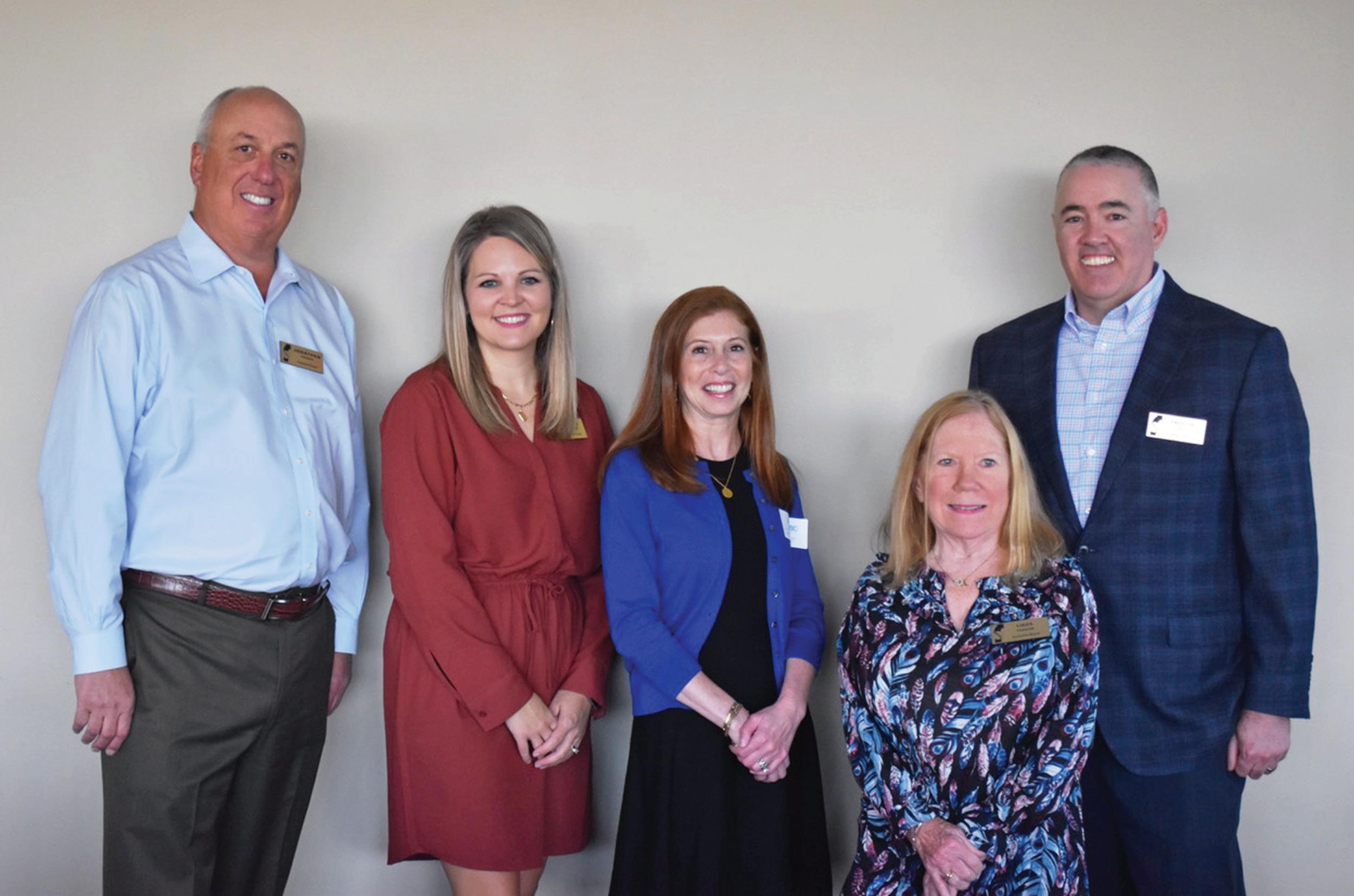
· SHRM education team continues offering virtual instruction for certification preparation as well as live, in-person instruction via seminars and through educational partners worldwide for aspiring certificants who prefer in-person learning. And, the SHRM Learning System continues to be the premiere study option with 80% of candidates studying with the SHRM Learning System.
New supplementary study resources mentioned above—the Ace Your SHRM Certification Exam and its accompanying workbooks of
recently-administered but now-retired test items—have been very popular with candidates as evidenced by one-third of candidates who purchased them in the second half of the year, when they debuted, through SHRM Store.
90% of SHRM certificants report they plan to recommend SHRM certification to colleagues.

Before the end of the year, SHRM Certification will surpass 175,000 lifetime certifications, 125,000+ of whom still have active or retiredstatus certifications.
SHRM Certification: Accessible. Achievable.
I hope you will explore the newly updated SHRM Certification website, https://www.shrm.org/certification to learn more about the simple, easy-tofollow process to become a SHRM-CP or SHRM-SCP credential holder. We will continuously update the site and add resources as they become available. We will also continue to add complimentary and supplemental resources to guide candidates as they prepare to take the exam.
SHRM is excited to see what the future holds! If you are considering HR certification, I invite you to join the SHRM family in 2023 by earning your SHRM-CP or SHRM-SCP and to also leverage the numerous and varied methods available to study and prepare in a way that suits you, your needs and your schedule best.
Nancy A. Woolever, MAIS, SHRM-SCP | Vice President, Certification Society for Human Resource Management
Nancy.Woolever@shrm.org www.shrm.org
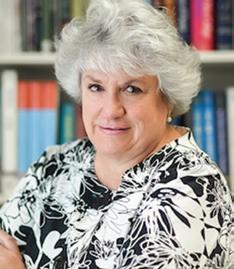
November 3, 2022 Luncheon
L-R Jonathan Frisch with McGriff, Maranda Bunker with Stephens, Jan Brackett with Progyny, Linda Yoakum, and Preston Cox with UNUM. Jan Brackett was the guest speaker at the November meeting. Her topic was, “A Benefiit That Creates Magic & Hope.”
35 www.HRProfessionalsMagazine.com
Mitigating the Effects of Implicit Bias Begins with Data Analysis
 By TODD MCFALL AND MEGAN REGAN
By TODD MCFALL AND MEGAN REGAN
Lately it seems everywhere you turn, there is much ado about implicit bias. For good reason, too. Implicit bias, the subconscious altering of reality that impacts humans’ decision making, leads to large organizational costs that keep organizations (and societies) from reaching full potential. There is little doubt implicit bias played a role in fomenting the financial crisis of 2007-8 and is a main factor in instances of bad interactions between police officers and citizens.
Implicit bias is most certainly a problem at workplaces around the world, too. Women and members of protected groups have a litany of stories of mistreatment at workplaces across every conceivable industry. Writer Jessica Nordell qualified and quantified these biases in her book The End of Bias, where she presented evidence from a simulated workplace that showed only a 3% undervaluing of women’s productivity had dire consequences when it came to them advancing through the hierarchy of the firm. Workers’ stories and the evidence shared by writers and researchers like Nordell makes it easy to conclude that HR managers must pay attention to the design of all employee management systems or risk leaving their organization open to problems caused by not mitigating systemic inherent biases.
Figuring out how to mitigate bias is not just for problem avoidance. For instance, a Gallup Workplace article describes some of the benefits of investing in more just HR systems. These workplaces employ better engaged workers who have better relationships with clients, experience lower employee turnover, and more productive employees compared to organizations with less engaged workers.
“… a 3% undervaluing of women’s productivity had dire consequences when it came to them advancing through the hierarchy of the firm.”
36 www.HRProfessionalsMagazine.com
So, what biases might hinder organizations from evaluating employees in a more accurate and just manner? Consider this short list of possible biases that might be impacting your HR practices right now.
• Overconfidence bias- humans tend to overestimate the chance of success. So, it would not be surprising to hear HR managers state confidently—probably too confidently —that their systems are performing well. If this were the case, then tendency towards overconfidence keeps organi zations from even pondering changes that might mitigate outcomes from bias.
• Status quo bias- humans tend not to want to have to make changes to their lives. This hesitancy makes sense because changes are uncertain during the implementation process and payoffs are unknown. Changing HR systems is poten tially daunting and a bias toward the current practices makes the likelihood of altering systems to mitigate bias even smaller.
• Confirmation bias- humans like to know their worldview is correct, so we place more weight on evidence that supports our current beliefs. With regards to HR management, this would mean paying too much attention to successful employees who confirm the good aspects of the current system. A more honest accounting of an organization’s systems would give appropriate weight to employees who did not reach such heights and expose flaws in systems that could be changed for the better.
• Recency bias- humans have a limited amount of memory, and remembering past events is difficult compared to recalling recent events. This bias is very important to consider when evaluating employees over a long period. If good work occurred further in the past, it is likely to be discounted for work that occurred more recently, unless an organization has a system that negates this tendency. Creating systems that enable all work to be judged equally across time mitigates problems from this bias.
We cannot go without saying that we advocate for adopting systems that mitigate the effects of bias completely. However, we also recognize that overhauling HR systems for this intent might be incredibly expensive for many organizations. The good news is that much is known about how to use data analysis to detect the existence of these biases, so organizations that want to push back against bias can use analytics to determine the best place to begin adjustments to their current practices. The recent flourishing of statistical analysis software enables the use of powerful tools like regression analysis at low costs. These software applications allow
for a plethora of employee characteristics to be correlated with HR outcomes. In many instances, cause-and-effect relationships can be observed, and accurate measures of how much implicit bias might be impacting an organization can be identified. Investments of these sorts can provide managers of HR systems the opportunity to make data-driven adjustments to help mitigate the effects of implicit bias.
To this end, we view investments in appropriate data analysis as a middle-sized investment for an organization, somewhere between maintaining the status quo and adopting entirely new systems. Good data analysis can offer insights as to what changes your organization can make that will be most valuable, a reality that must be preferred to applying changes that have uncertain returns. The results from good analysis can provide a roadmap towards improvement for your organization to follow instead of taking a leap of faith.
Though it is sometimes a difficult view to embrace, organizations should assume that implicit bias exists in their HR practices and should seek ways to improve these practices. Adopting extreme changes are risky and expensive, but the adoption of half measures has been shown to be unsuccessful in mitigating bias. The use of smart data analysis can help provide a plan for improvement that will make clearer the benefits of mitigation investments and ease the implementation process. Now, all you need is to overcome your status quo bias and start finding ways to improve.
Todd A. McFall, Ph.D. Piedmont Economic Consulting, LLC. And Wake Forest University at Winston-Salem, NC

Megan Regan, Ph.D.

Piedmont Economic Consulting, LLC And Wake Forest University at Winston-Salem, NC

37 www.HRProfessionalsMagazine.com
A Winston Salem NC-Based Firm Offering Economic, Data Management, and Litigation Consulting Services
Having the right tools is essential for your compensation strategy. However, you also need to see where there may be potential bias, and monitor and analyze the right information to improve pay equity. Here's some insight into how that can be done.
Pay equity has been getting a lot of attention lately as employers contemplate how best to attract and retain talented employees. To learn more about how people analytics can improve pay equity, we talked to Wai Wah Pak and Annette Allen, both of whom are Directors of Strategy for ADP's DataCloud.
Q: Why is pay equity such a hot topic?

WWP: "Pay equity is a pressing issue that has been exacerbated by the pandemic. Millions of women dropped out of the workforce — then there's the "great resignation," with people leaving or changing jobs, which has put a spotlight on wages.
Another reason is there haven't been tools that would allow you to gather the infor mation simply so that the initial analysis could easily be done. Several years ago, ADP started with Pay Equity Explorer. As we realized how useful and important this information was, we wanted to make it more customized, more targeted and focused. We wanted to help people not only find potential gaps but also know where to go next and compare options to close any gaps."
Q: What should employers be looking for in a tool to improve pay equity?
AA: "You want to identify the high-level issues with enough specificity to do a full
How People Analytics Can Improve Pay Equity
By HEATHER BUSSING
pay equity analysis with your legal counsel. While most tools can compare pay based on jobs and locations, you want to be able to spend your time and focus on the places that matter from equity, risk and compliance perspectives. Since this can be sensitive, it's important to be able to control who has access to keep the analysis privileged and confidential.

You also want to see pay comparisons by factors besides gender. Inequities in pay can show bias based on race and ethnicity, or other protected classes."
WWP: "Pay equity analysis tools should be able to compare pay by job and geographic location since some places have a higher cost of living and people there will be paid more to account for that."
Q: How do pay equity analysis tools identify potential gaps?
WWP: "Generally, they start with the highest-paid employees and compare titles, location and time in job. Then you can look at jobs where there are significant pay differ ences by gender or race to see where there may be pay equity concerns."
AA: "This will give you a head start on the analysis and provide you with a foundation to assess where you are, where to look next and where you need to go as an organization."
Q: What other information do you need to understand and improve pay equity?
AA: "Once you have visibility into where the gaps are, you want information on different options and approaches. You want to know the cost to close any gaps and be able to see those costs, considering various options like job or location.
When you can see all the available options, you can start to come up with guidance or recommendations.
The organization may have other pieces of the puzzle that you need to evaluate, such as education, skills or responsibility. Compare factors to understand whether the gaps are in places where people are being paid differently for the same general work. You want to be able to continue your analysis and then come back to the tool and compare and prioritize options. Having the right tools will shed light on pay structure and pay policy. Then you can take the lens broader to see how pay decisions affect everyone."
WWP: "Also, this is not a one-time exercise. Your workforce is dynamic. Pay equity is something you continuously review. It's essential information for your overall compensation strategy."
When your tools are easy to use and under stand, and they give you actionable infor mation, it's much easier to stay on top of pay equity issues. With these tools in hand, you can determine the best starting point and explore options before making any decisions.
Learn how to foster diversity, equity and inclusion in your organization, visit adp.com/dei.
Heather Bussing is an attorney, writer and photographer. She is an editor and regular contributor to the HR Examiner on topics of employment law and the intersection of people, technology and work. She has been quoted in the Wall Street Journal, Money Magazine, American Express Open Forum and Mashable.
38 www.HRProfessionalsMagazine.com

39 www.HRProfessionalsMagazine.com












































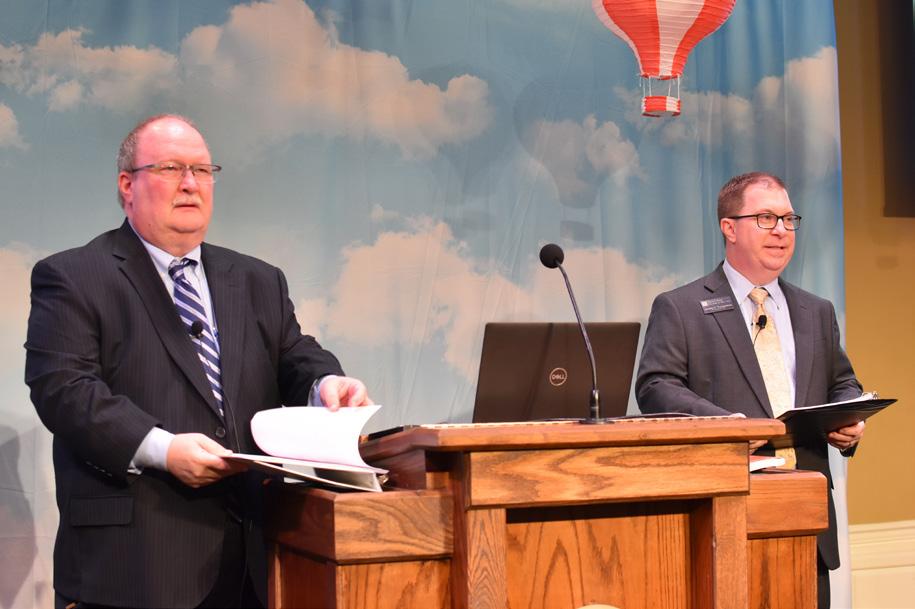
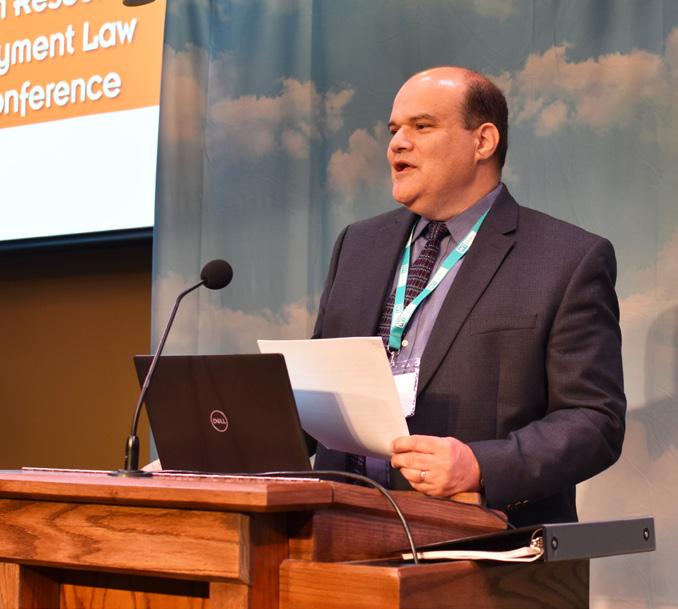
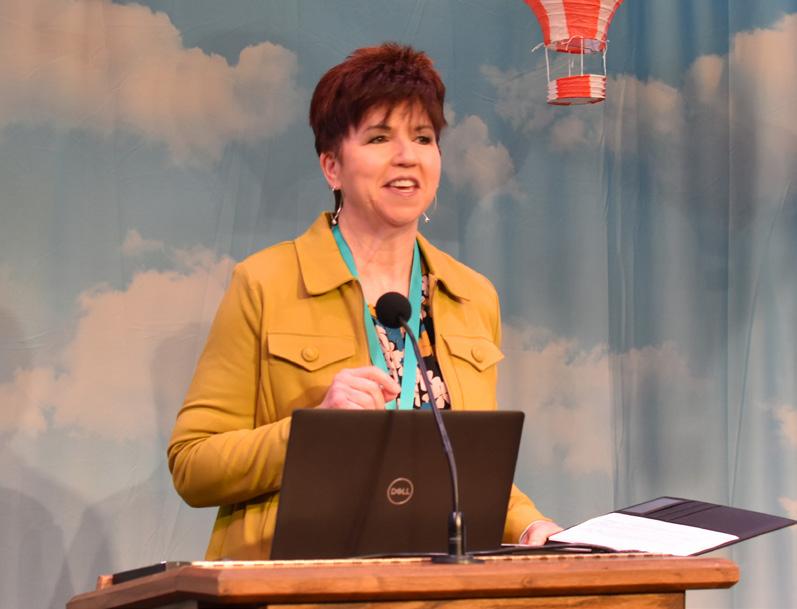
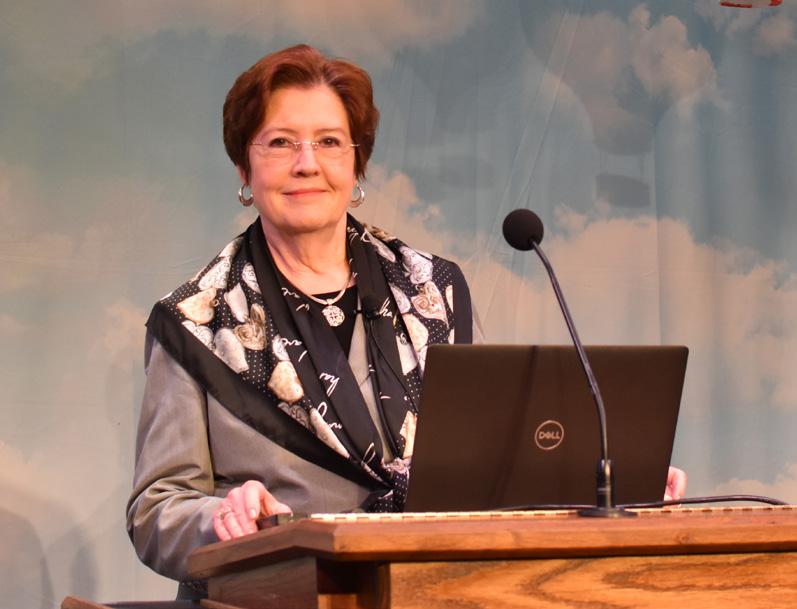
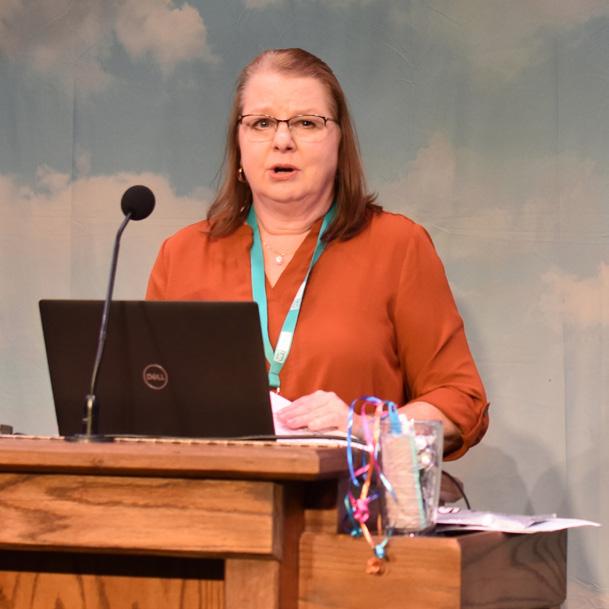
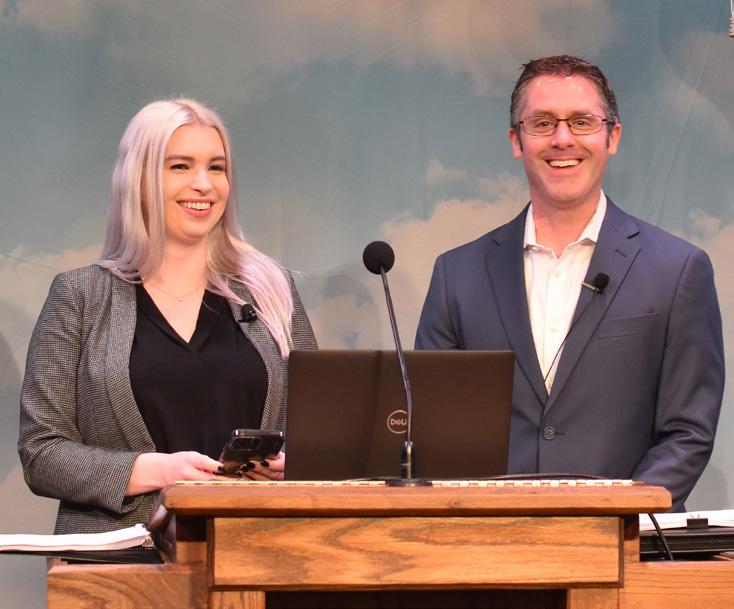
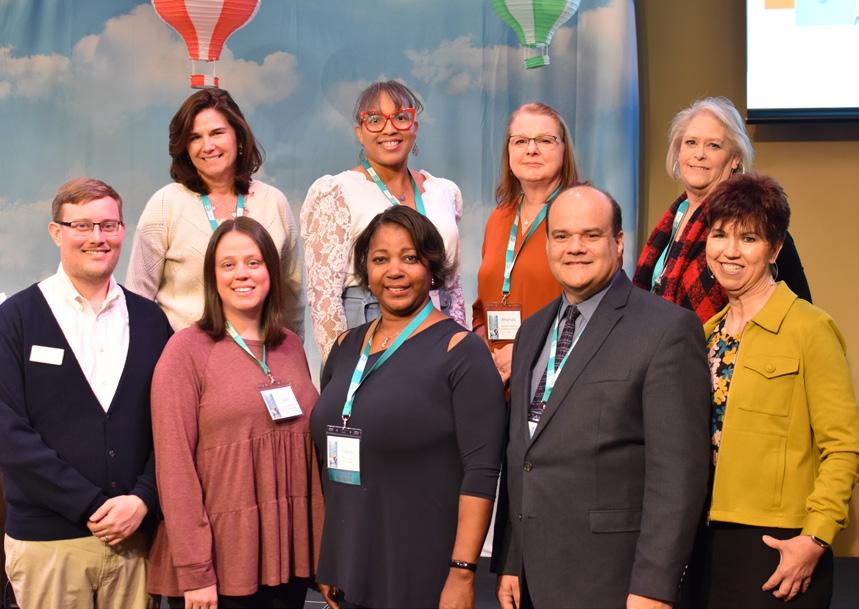
OCIETY FOR IZER Join us for an informative day where we will This is a on conducting background and reference checks, requiring pre employment physicals, skills testing, and all applicable laws. Keep Your Feet on the Ground: practical tips for HR and front Interpersonal HR Competencies Learn the interpersonal skills that will make you a more effective manager. Employment Case Studies nteractive discussion of recent employment law cases and the application of relevant concepts and HR strategies. Head in the Clouds? Top HR Pitfalls that Give Employment Learn about the pitfall Lunch is provided. Explore our impress related exhibitors. Great door prizes. $100 for WTSHRM Members in WTSHRM for only $25 .org/join wtshrm.org The registration deadline is Wednesday, November 9, 2022. Register early as seating is limited. You may pay by check or with a credit card. This program has been approved for 6 recertification credit hours through HRCI and SHRM. 13th Annual Human Resources & Employment Law Fall Conference November 16 2022 Wednesday 8:30 a.m. to 4:00 p.m. Registration opens at 8:00 a.m. at Union University Carl Grant Event Center 1050 Union University Dr. Jackson, TN 38305 1 Dr. John Carbonell, Past-President of WTSHRM, welcomed attendees. 2 Dale Thomas and James Thompson, attorneys with Rainey Kizer, presented “Keep Your Feet on the Ground: Workers’ Compensation.” 3 Jennifer Howell, WTSHRM Conference Chair, provided a conference update to the attendees. 4 Cynthia Y. Thompson, Editor | Publisher of HR Professionals Magazine presented, “Interpersonal HR Competencies.” 5 Rhonda Livingston, President of WTSHRM, provided an update on WTSHRM. 6 Meredith Maroney and Geoffrey Lindley, attorneys with Rainey Kizer, spoke on “Pre-flight Check: The Pre-employment Process. 7 The WTSHRM Board of Directors 8 Some of the members of the the Rainey Kizer Team 9 Leaders Credit Union employees accept first place prize for best decorated exhibitor booth. 10 The WGU Tennessee exhibit. 11 The SHRM Foundation table 12 Attendees at the WTSHRM Conference 1 2 3 4 5 6 7 HIGHLIGHTS 40 www.HRProfessionalsMagazine.com

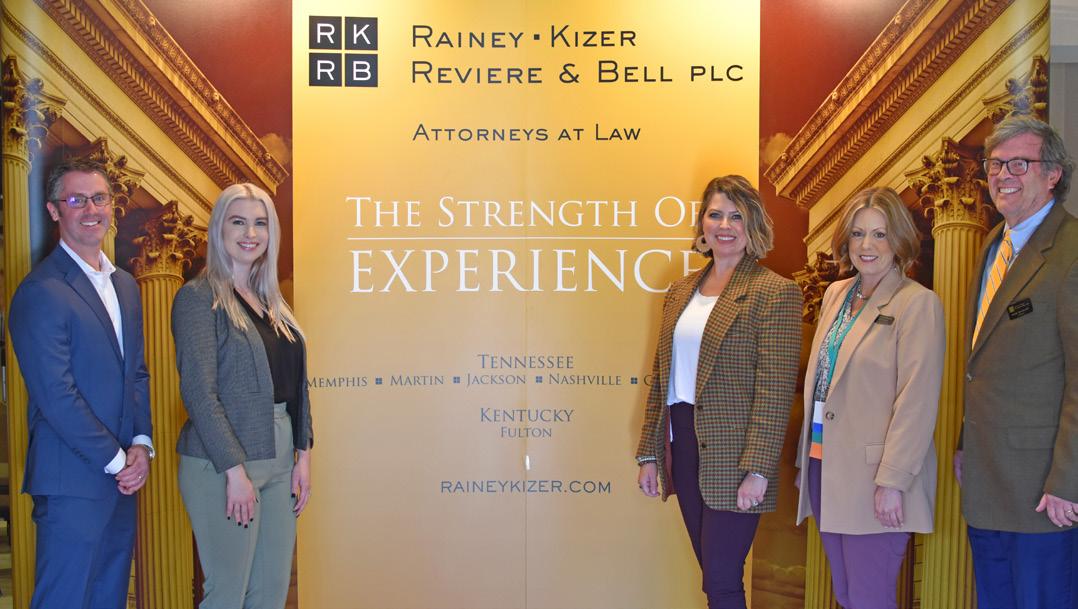
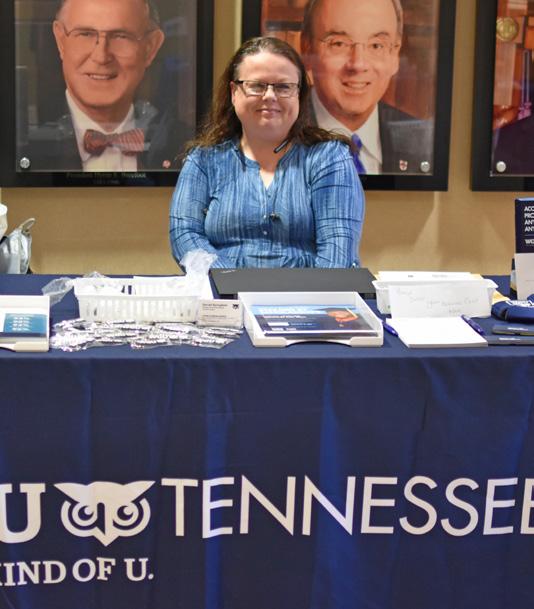


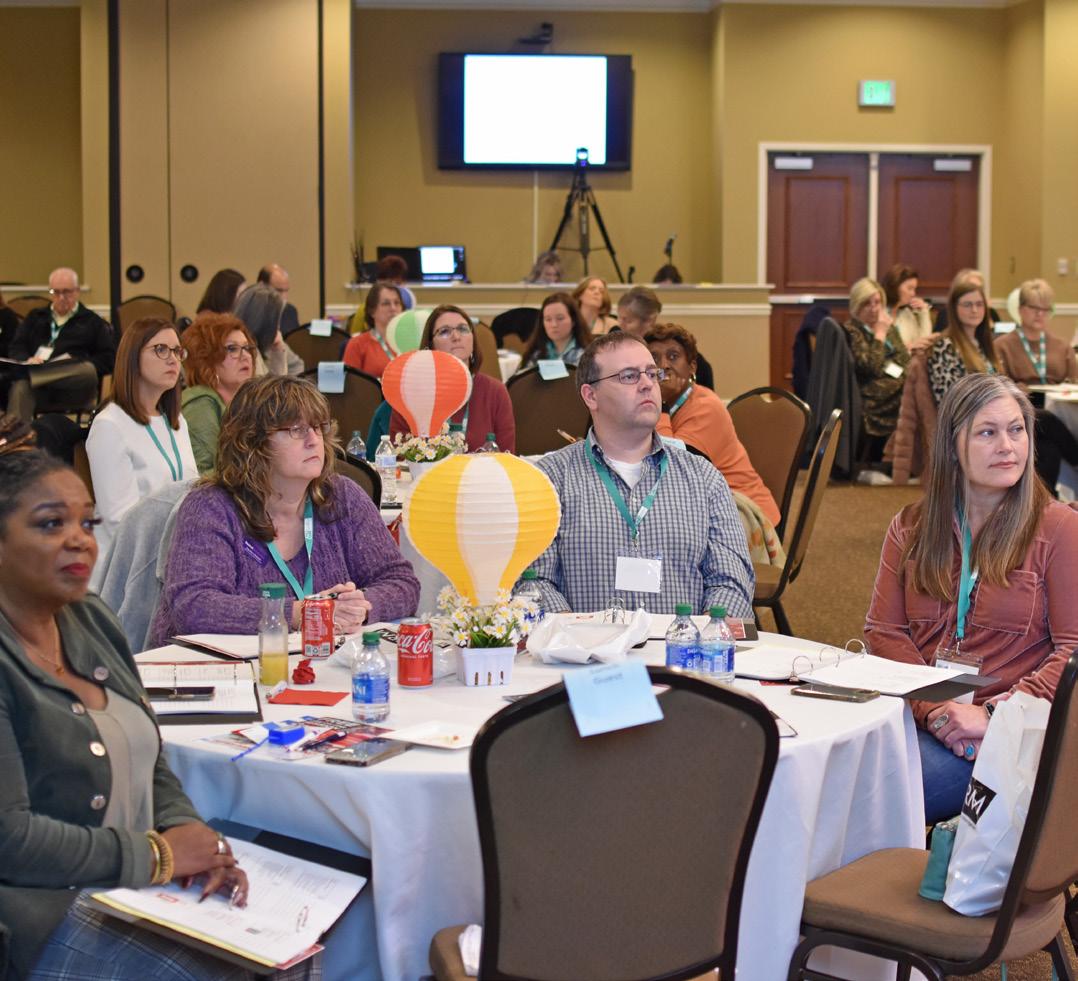
As the issues facing HR executives become more frequent, challenging, and complex each year, you need a law firm that provides advice invidualized for you specific needs. This is why you
the employment law attorneys at Rainey,
& Bell, PLC. For over 40 years, our AV-rated firm has advised businesses, non-profit organizations and government agencies on all aspects of employment law. To learn more, please call. Legal Challenges are Coming at HR Professionals from Every Direction That’s Why Rainey Kizer Makes Your Business Our Concern Memphis 901.333.8101 Nashville 615.613.0442 Jackson 731.423.2414 Chattanooga 423.756.3333 Tennessee does not certify specialists in the area of employment law. 12 10 11 9 8 41 www.HRProfessionalsMagazine.com
should know
Kizer, Reviere

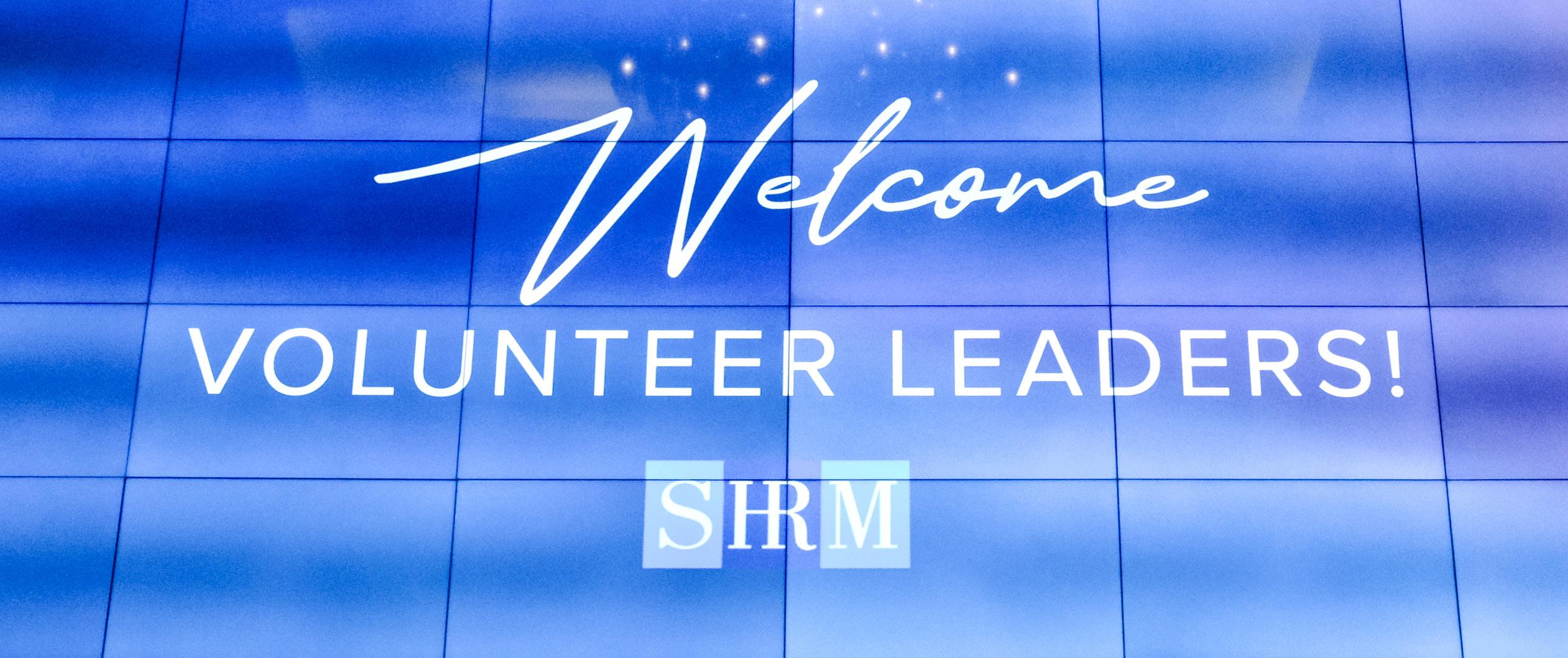
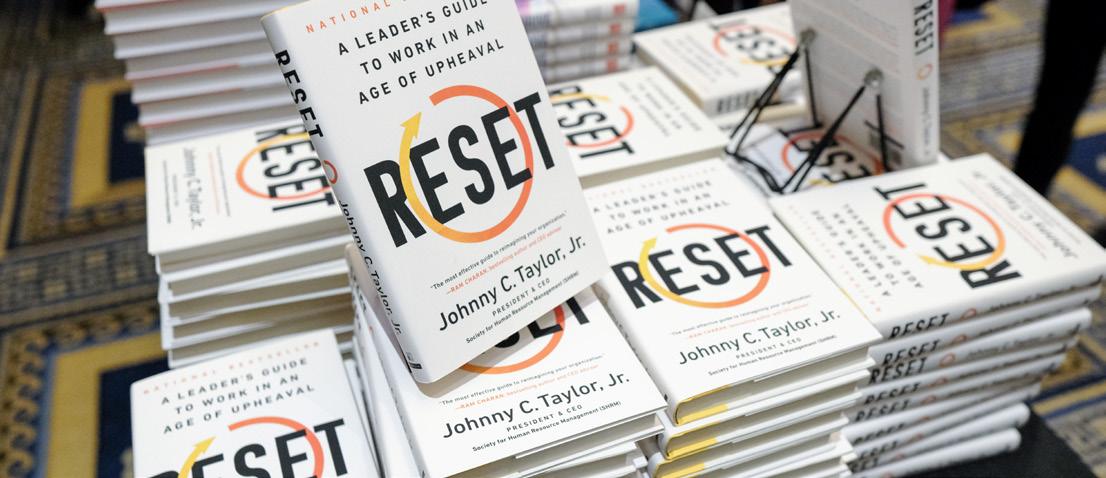
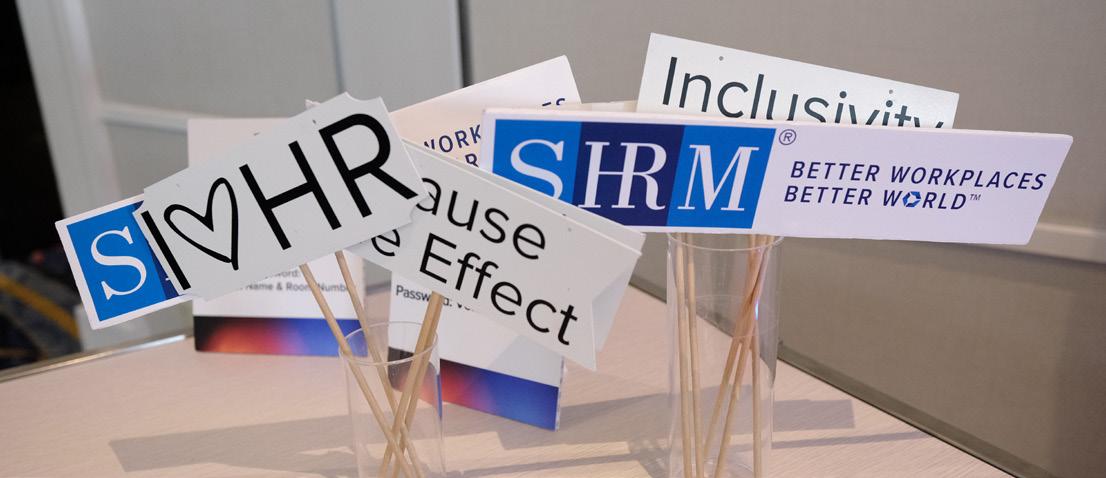


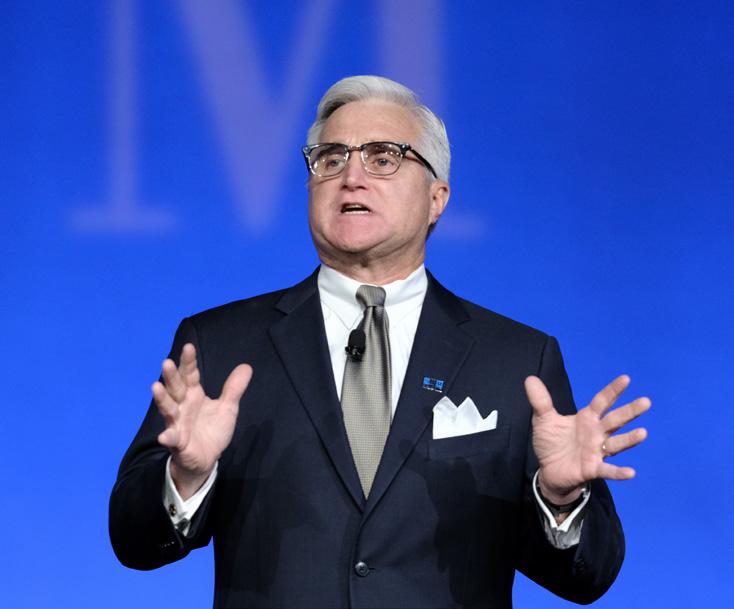
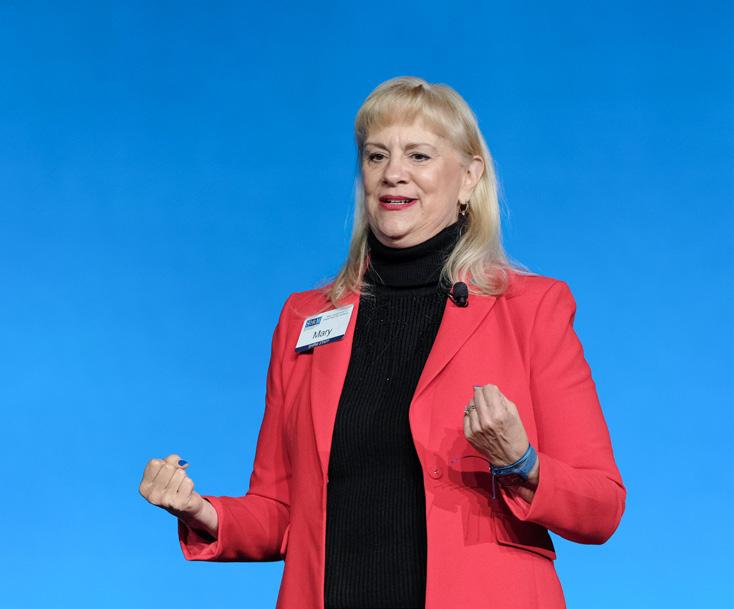
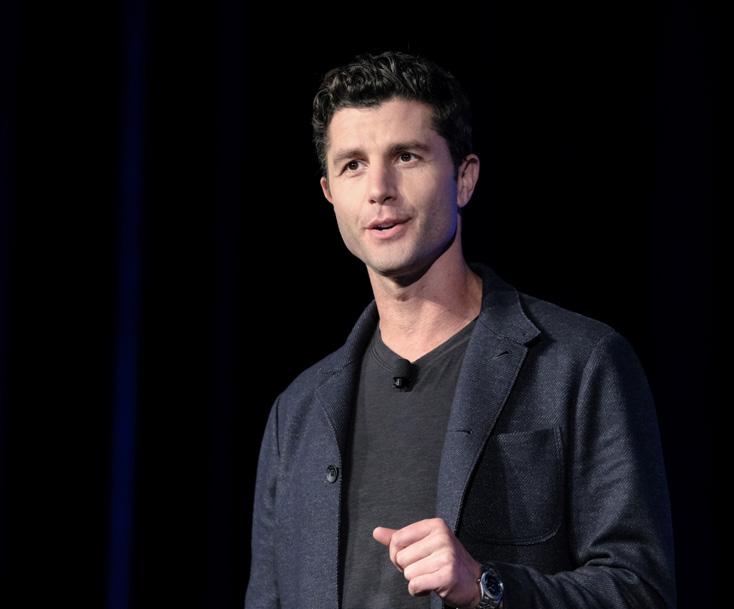 Pictorial Highlights from the 2022 SHRM Volunteer Leaders’ Business Meeting in Washington, D.C. November 17-19, 2022
Pictorial Highlights from the 2022 SHRM Volunteer Leaders’ Business Meeting in Washington, D.C. November 17-19, 2022
42 www.HRProfessionalsMagazine.com
Photo credit Zoeica Images Documentary Photography
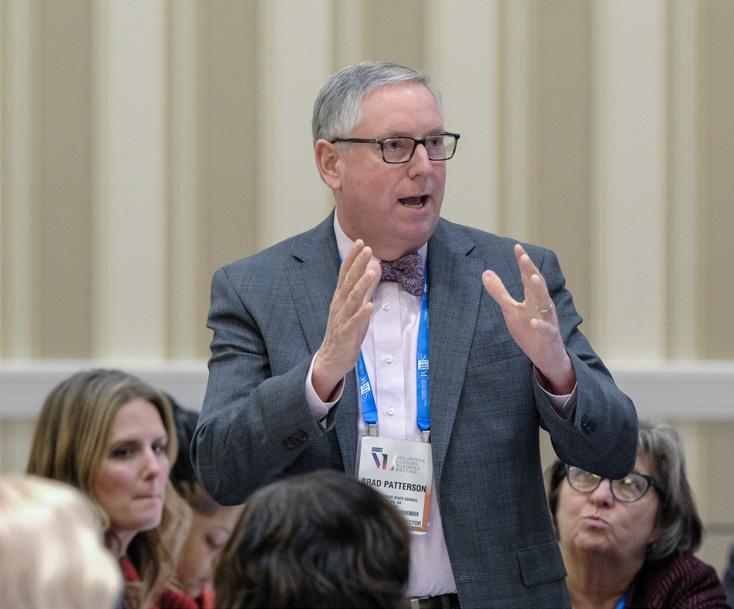


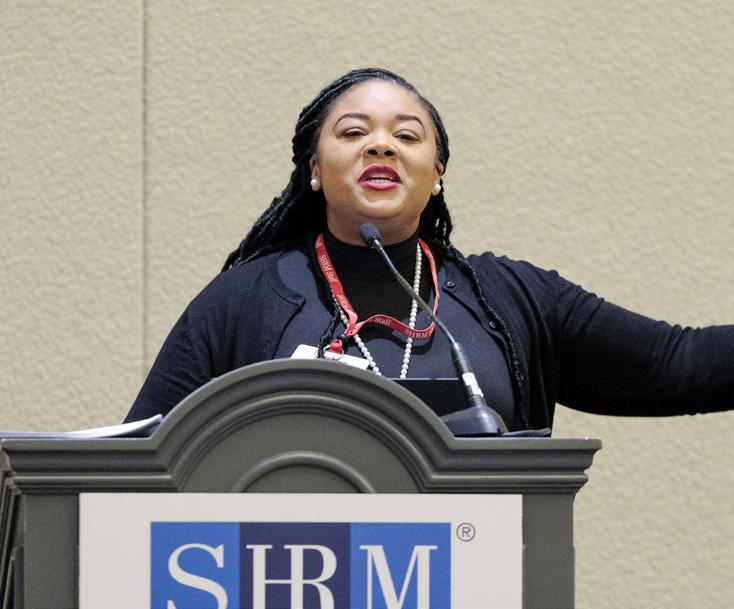


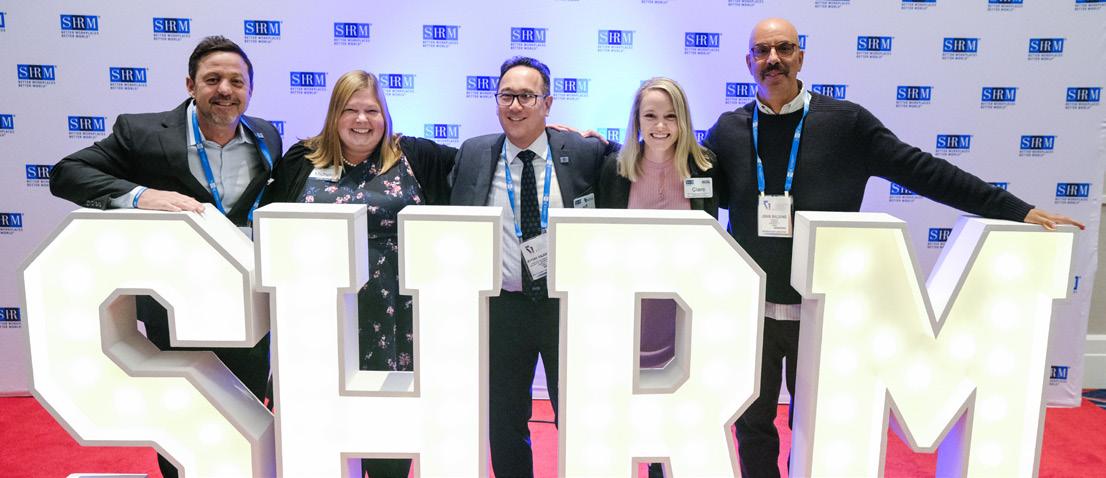

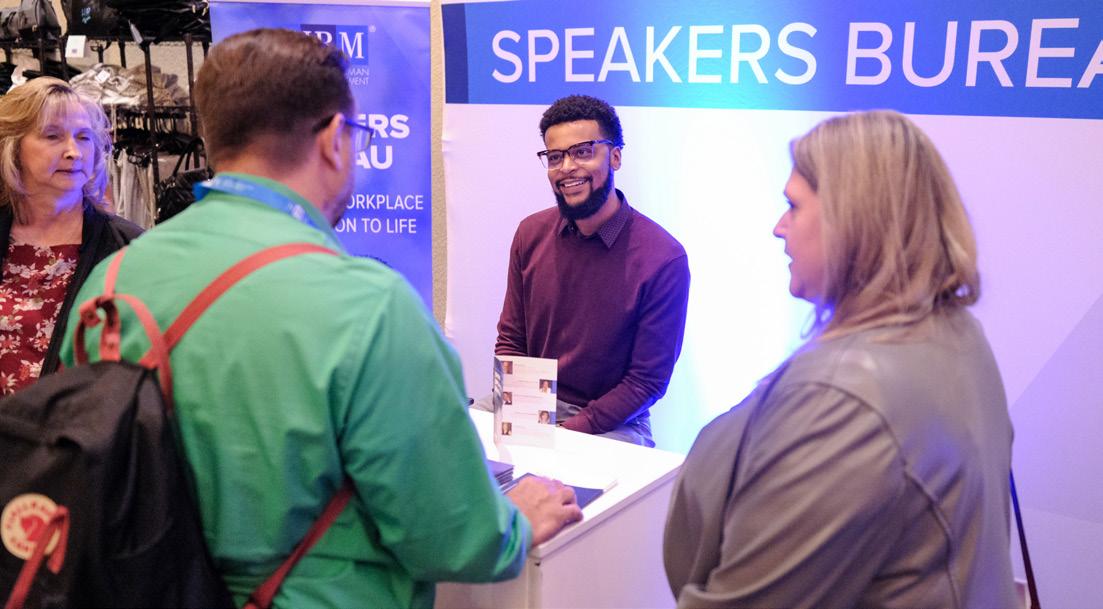
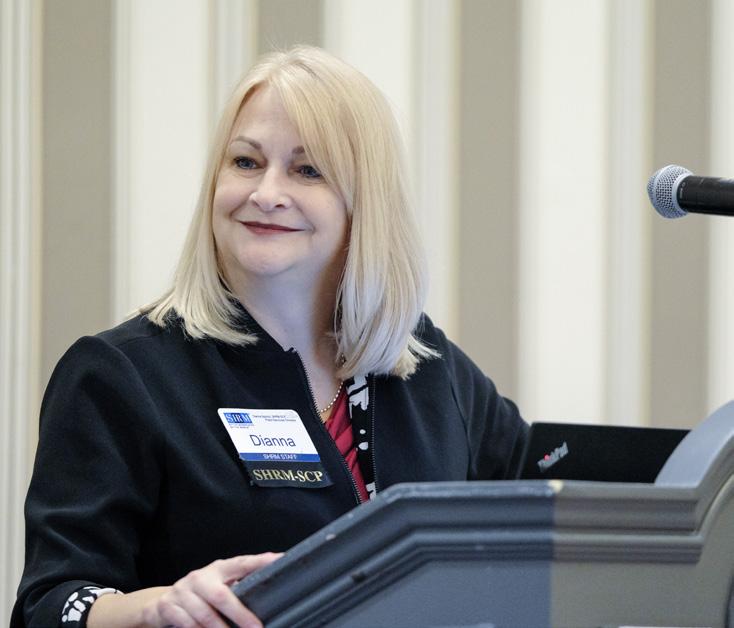
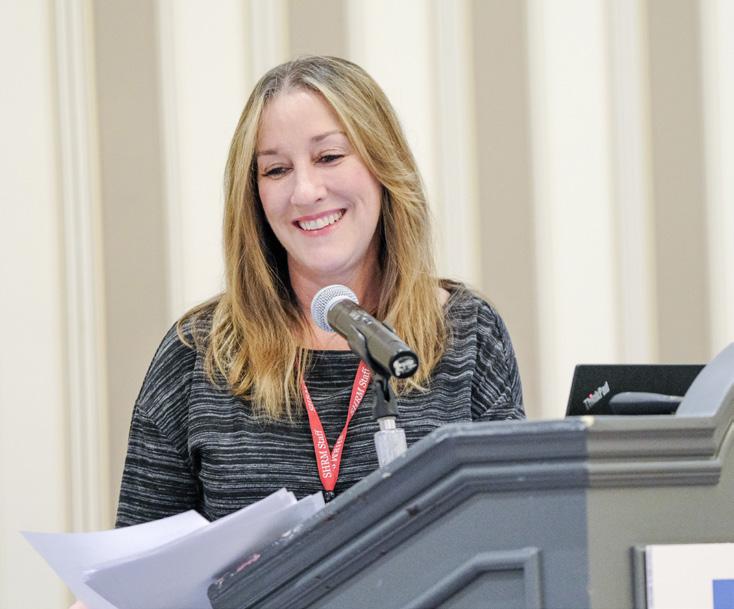
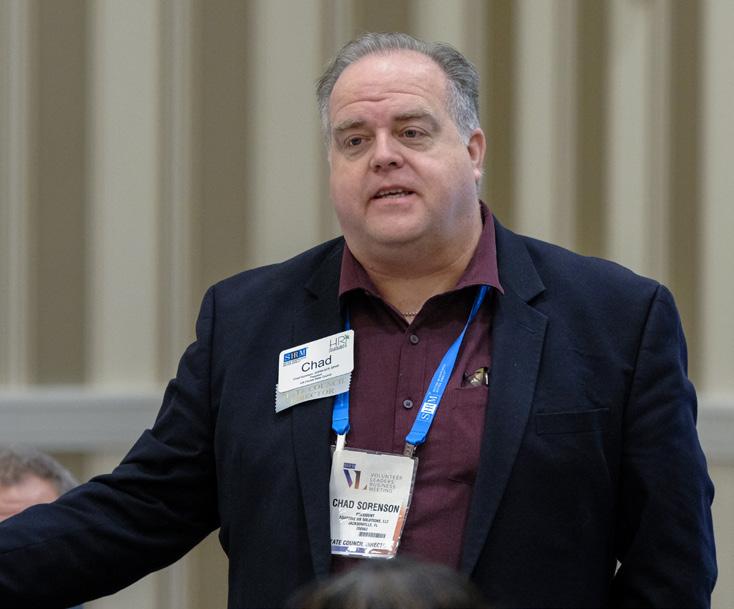
43 www.HRProfessionalsMagazine.com
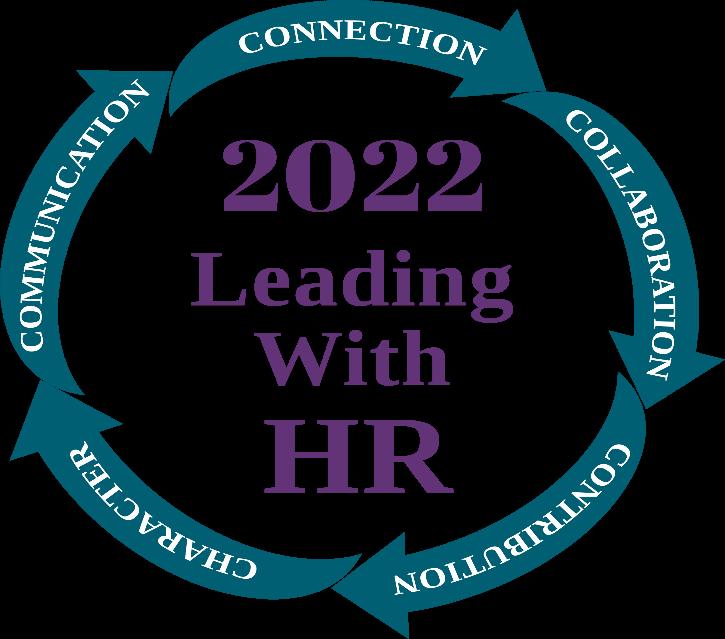

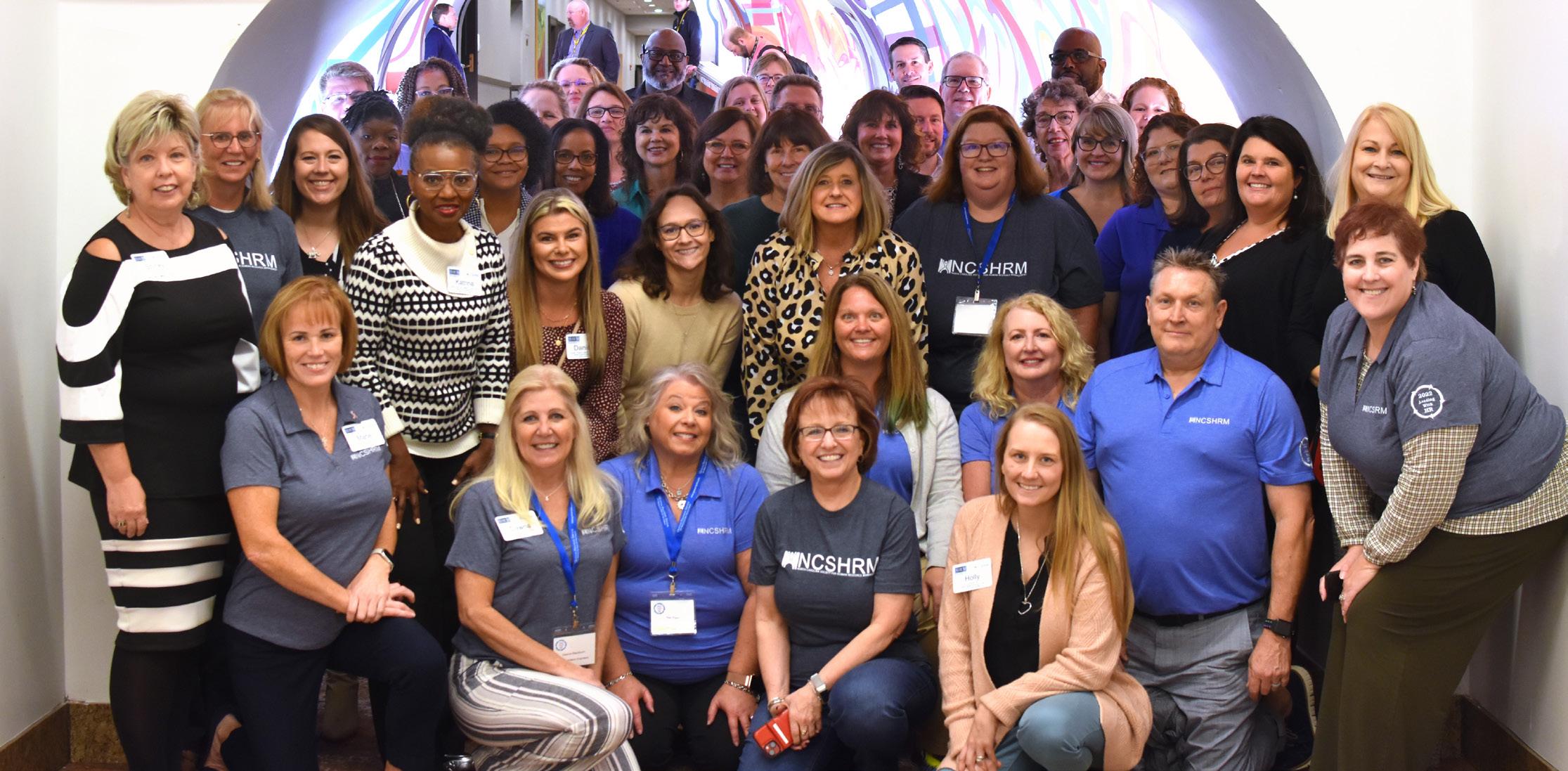

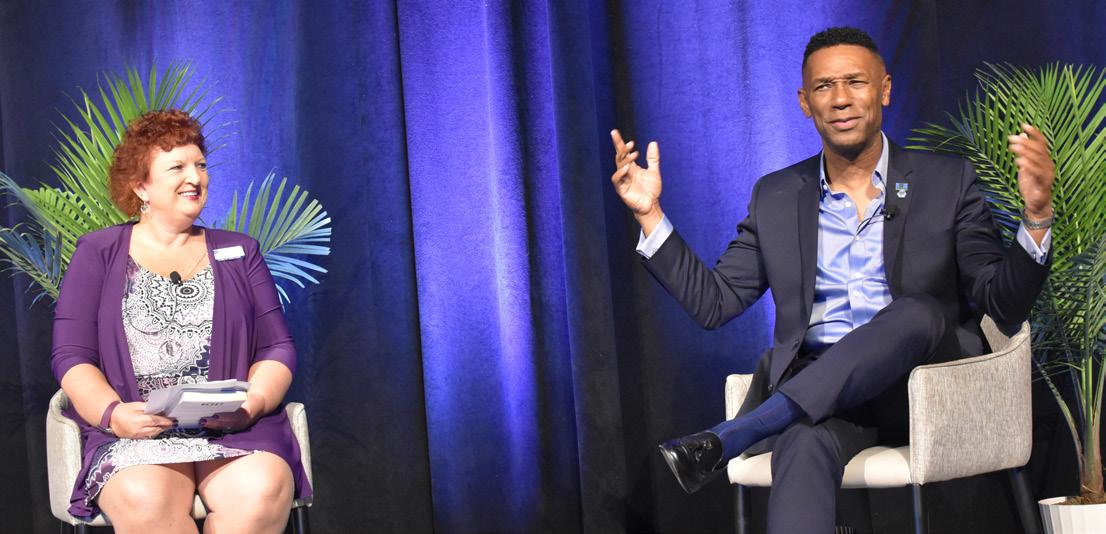
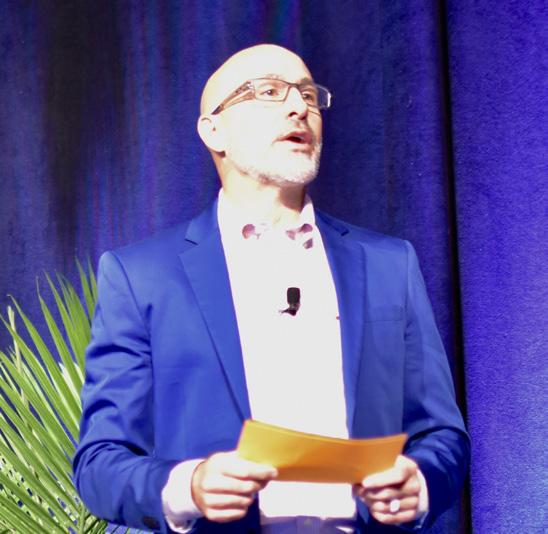
Benton
ter here: ht //ncshrm.com/2 2-conference-registration/ resources. State
2022 Benton Convention Center , Winston -Salem, NC Over Sp S r. State
October 12-14, 2022 Benton Convention Center , Winston -Salem, NC
HIGHLIGHTS HIGHLIGHTS 1 4 3 2 44 www.HRProfessionalsMagazine.com
e Conference, October 12-14, 2022
Convention Center, Winston-Salem, NC
Conference, October 12-14,
Conference
1 The 2022 NCSHRM State Council 2 Shirley Rijkse, MBA, SHRM-SCP, DTM, President of NCSHRM State Council 3 SHRM CEO Johnny C. Taylor, Jr., and Paula Harvey, past SHRM Board member, at the fireside chat. 4 Paul Potorti was the NCSHRM Conference Emcee.
5 SHRM Field Service Rep, Dianna
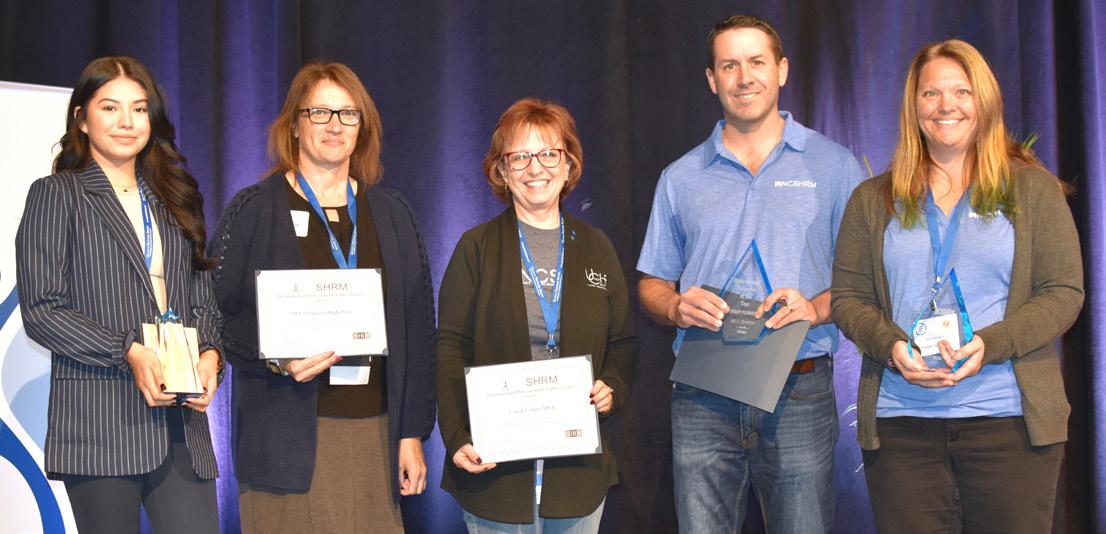
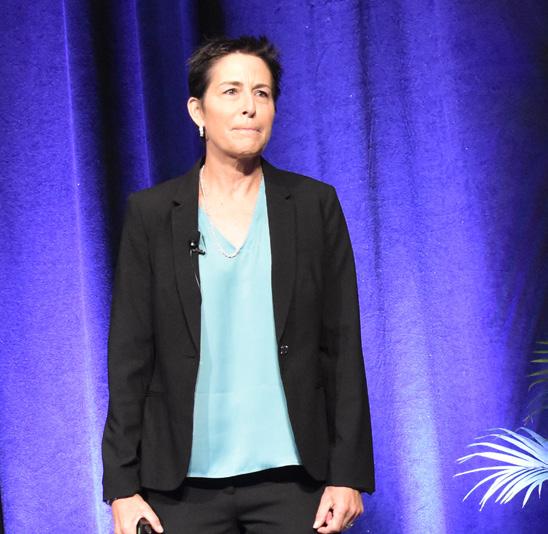



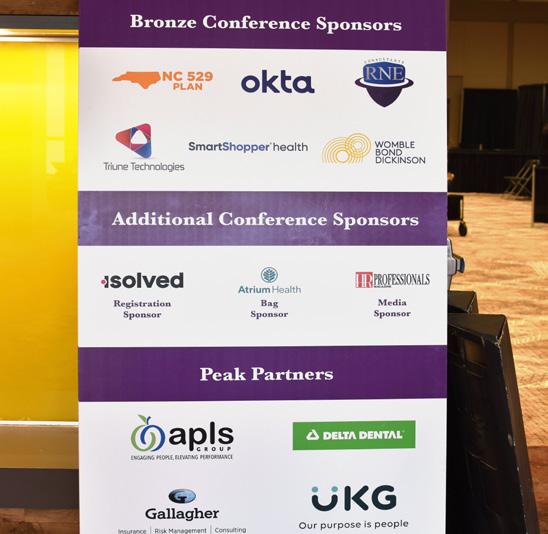
6 Jeff Luttrell, 2022 NCSHRM Conference Chair at the Accrue Partners Booth 7 NCSHRM members at the Neighborhood Block Party 8 Steve Gilliland, keynote speaker 9 Jeff Nally spoke on “The Brain Science of Perfectly Painless Performance Reviews.” 10 Donna Cutting, keynote speaker 11 Siri Lindley was the closing keynote speaker. 12 Photo op with SHRM CEO, Johnny C. Taylor, Jr. 13 NCSHRM Award Recipients 14 2022 NCSHRM Conference Team 15 NCSHRM Conference Sponsors 16 Convos and Cocktails
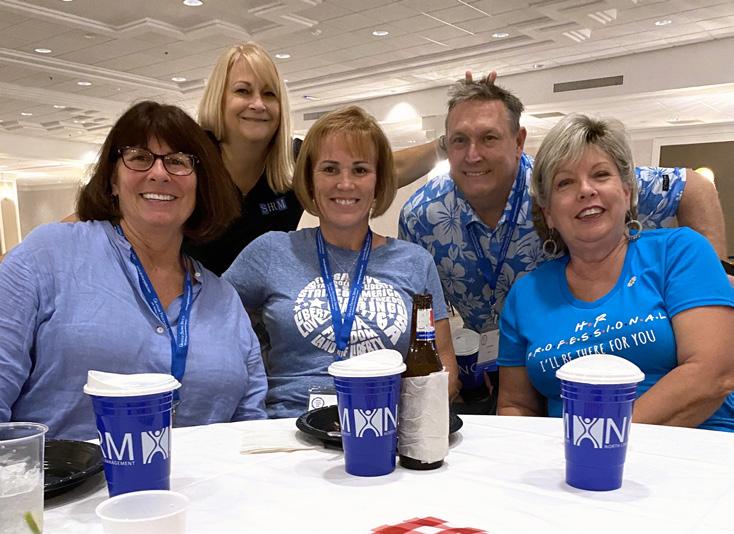
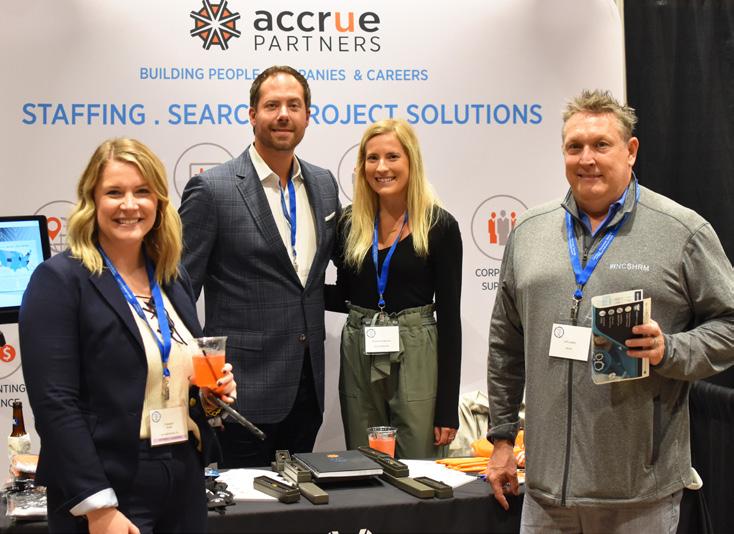
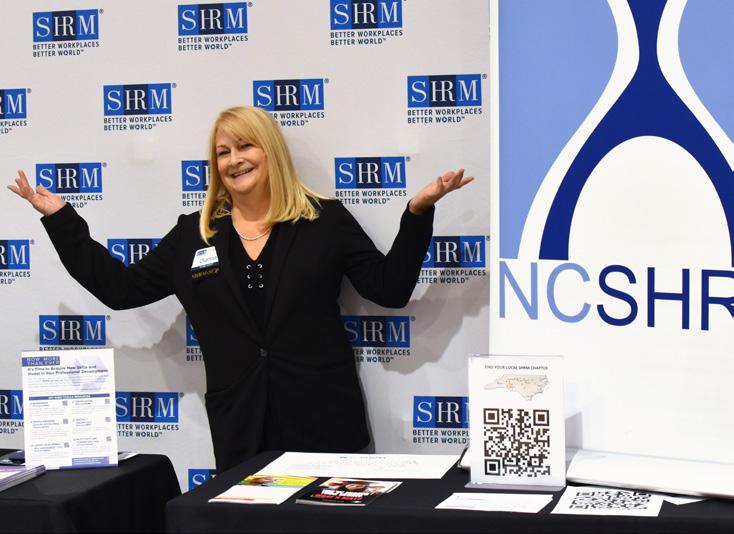
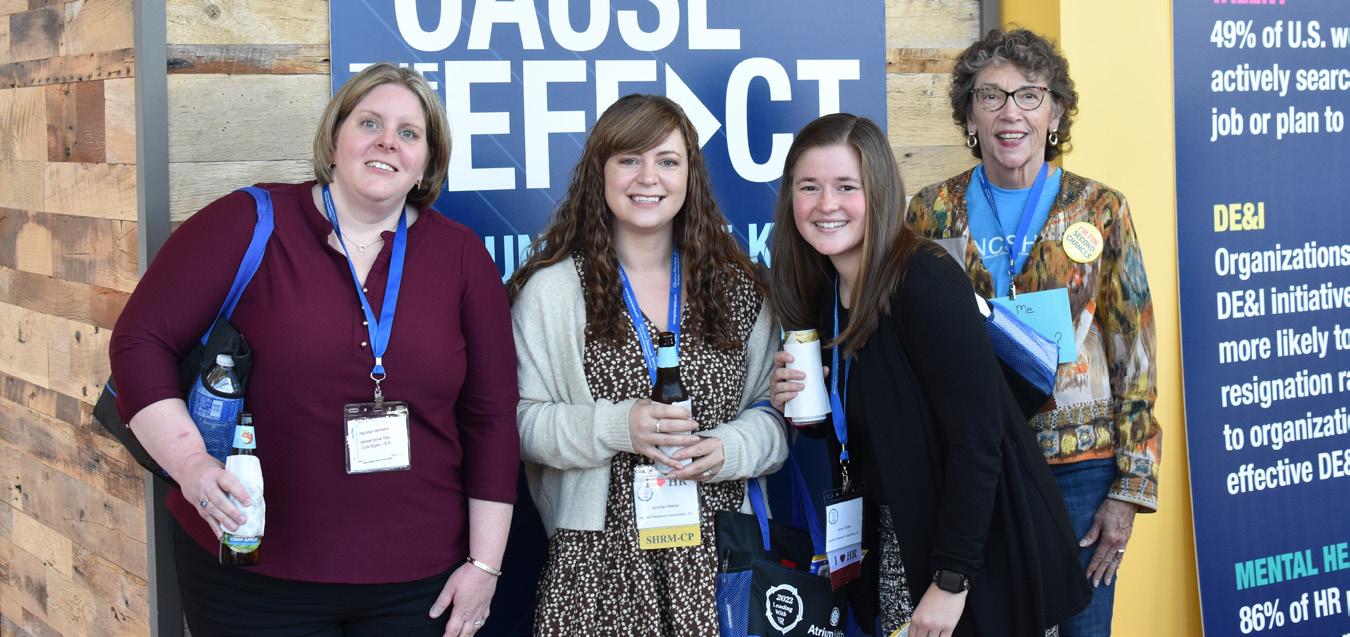
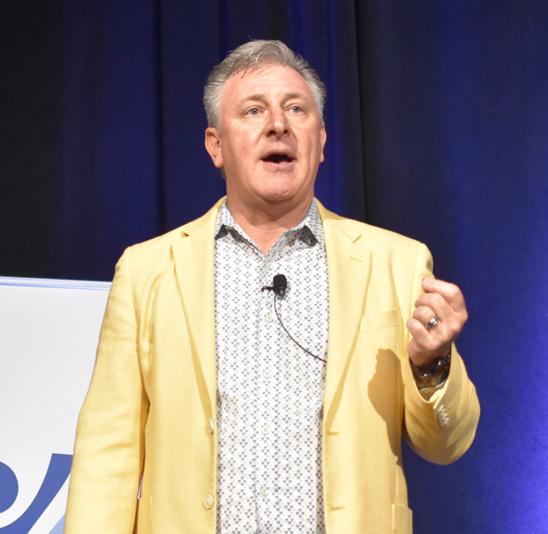
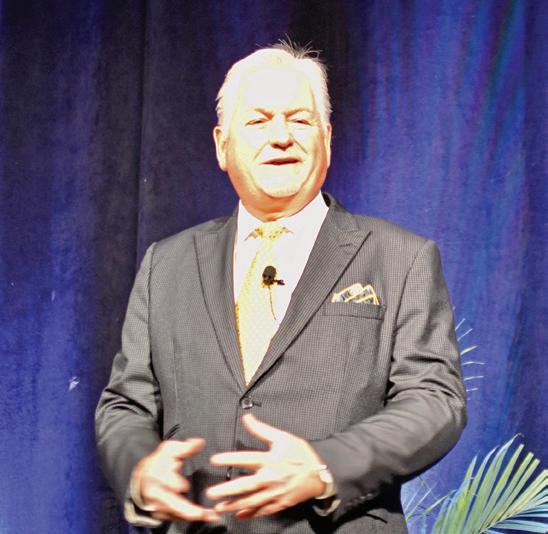
5 6 7 8
11
13 14 15 16 45 www.HRProfessionalsMagazine.com
Sporcic, SHRM-SCP
9 10
12
1 2 3 4 5 6 7 8 9
1 Some of the SHRM-Memphis Board members 2 (L-R) David Dufour, President of SHRM-Memphis, Dr. Deneen Lester, recipient of the SHRM-Memphis Lifetime Achievement Award; and Brad Federman, President-Elect of SHRM-Memphis

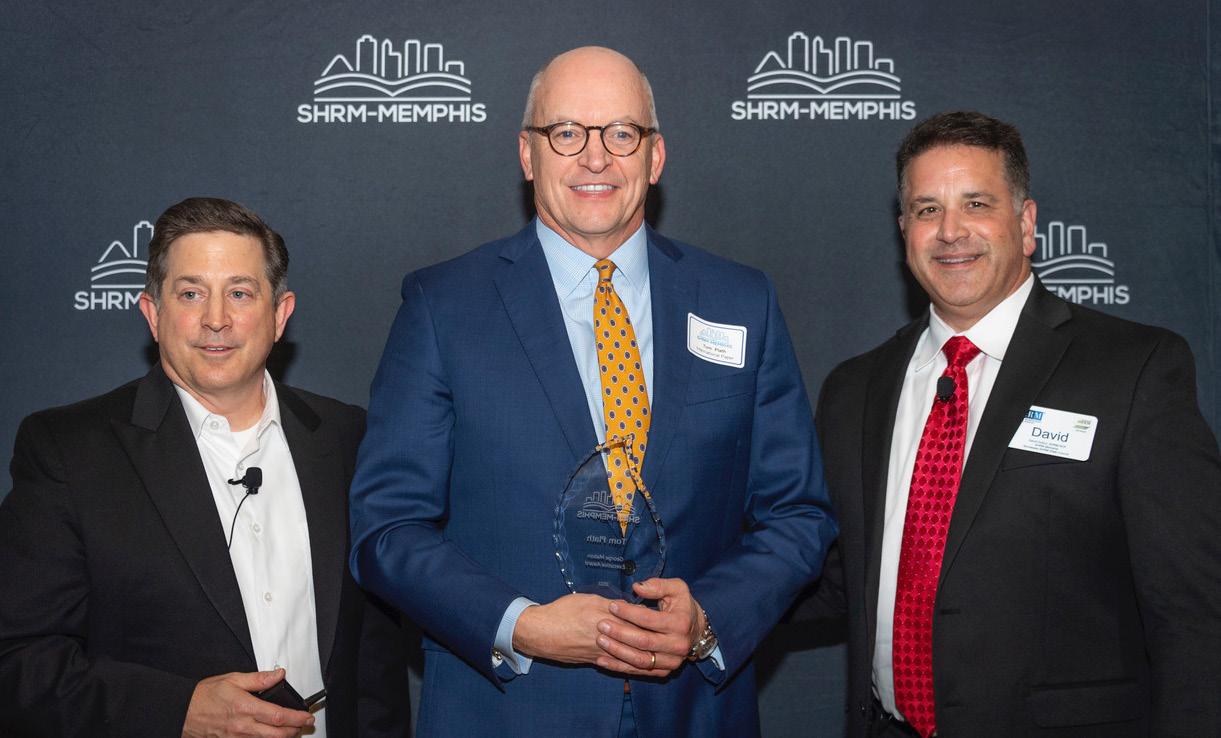
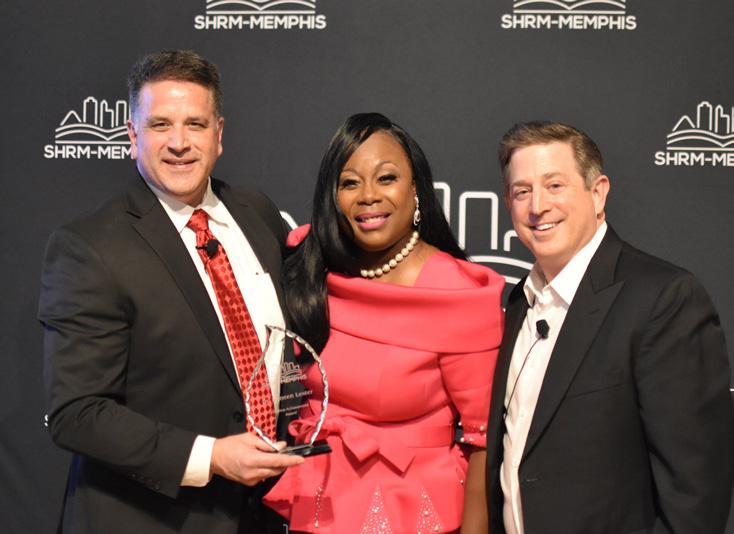
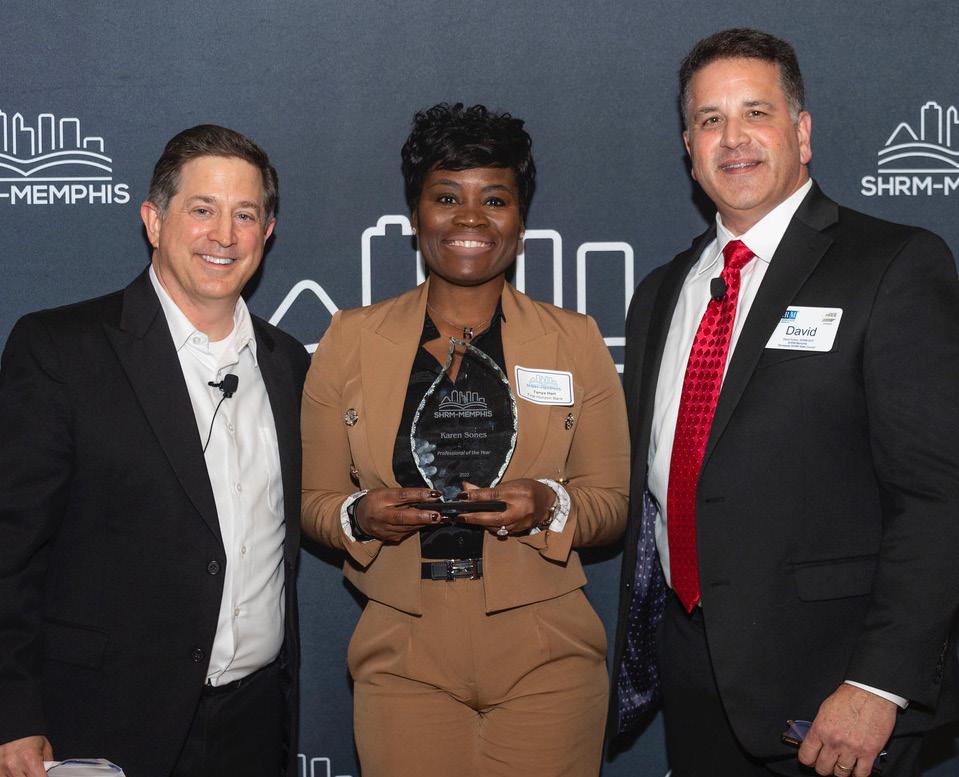


3 Avianna Johnson, a student at the University of Memphis, was the recipient of the SHRM-Memphis Student of the Year Award 4 (L-R) David Dufour, President of SHRMMemphis; Dr. Caitlin Porter, recipient of the SHRM-Memphis Educator of the Year Award; and Brad Federman, President-Elect of SHRM-Memphis 5 Mary Merschat received the SHRM-Memphis Emerging Leader Award. 6 Angie Davis, attorney with Baker Donelson, received the HR Labor and Employment Attorney of the Year Award.

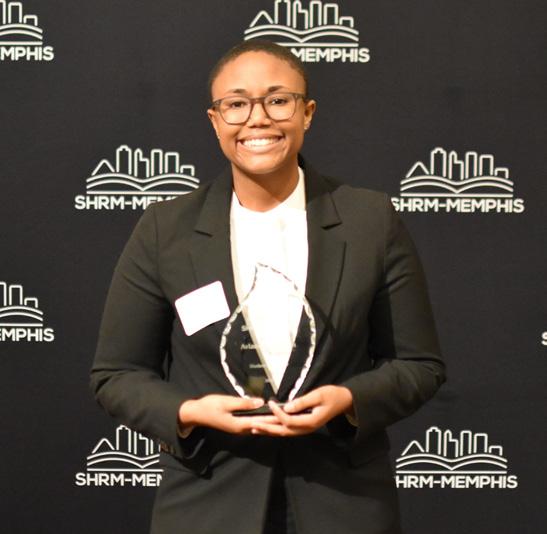

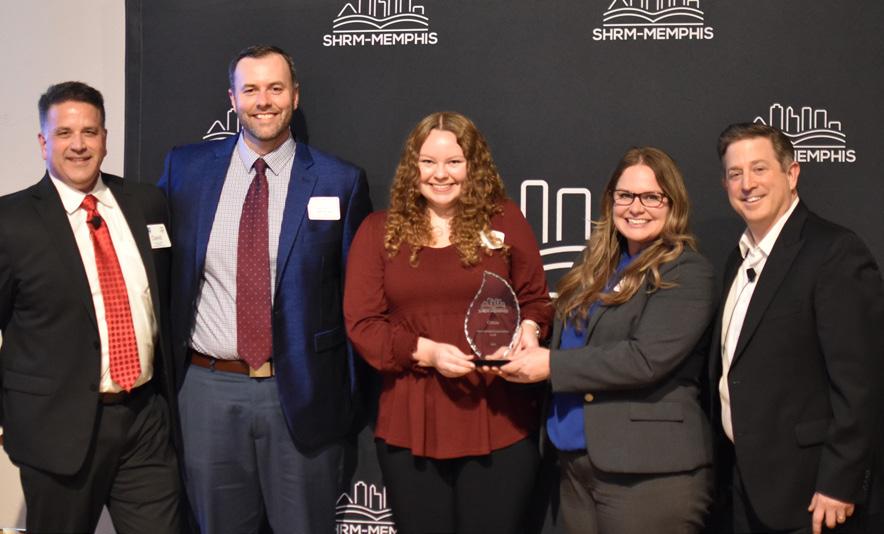
10

7 (L-R) Brad Federman, Tanya Hart, and David Dufour. Tanya accepted the SHRMMemphis Corporate Benefits and Wellness Award for Karen Sones with First Horizon Bank. 8 L-R Brad Federman, SHRM-Memphis President-Elect, Tom Plath, SVP CHRO of International Paper, recipient of the George Mabon Executive Award, and David Dufour, President of SHRM-Memphis 9 Dr. Yolanda Drain received the SHRM-Memphis Professional of the Year Award. 10 Past Recipients of the SHRM-Memphis Lifetime Achievement Award (L-R) Jeff Weintraub, Cynthia Thompson, and Tisch McDaniel. 46 www.HRProfessionalsMagazine.com
Consulting services include:

• Presentations and workshops to help organizations maximize diversity and increase inclusion and belonging
• Development and administration of organizational diversity audits and climate surveys
• Training evaluations and assessments to ensure maximum value is realized from current trainings

• Assessment of selection and talent management systems to uncover ways to strategically improve diversity management
• Training (e.g. ally training) geared toward ensuring an organizational climate that fosters inclusion and belonging and allows all employees to thrive

 Jihae You, Assistant Professor Director, Center for Workplace Diversity and Inclusion Department of Management, Fogelman College jyou1@memphis.edu
Jihae You, Assistant Professor Director, Center for Workplace Diversity and Inclusion Department of Management, Fogelman College jyou1@memphis.edu
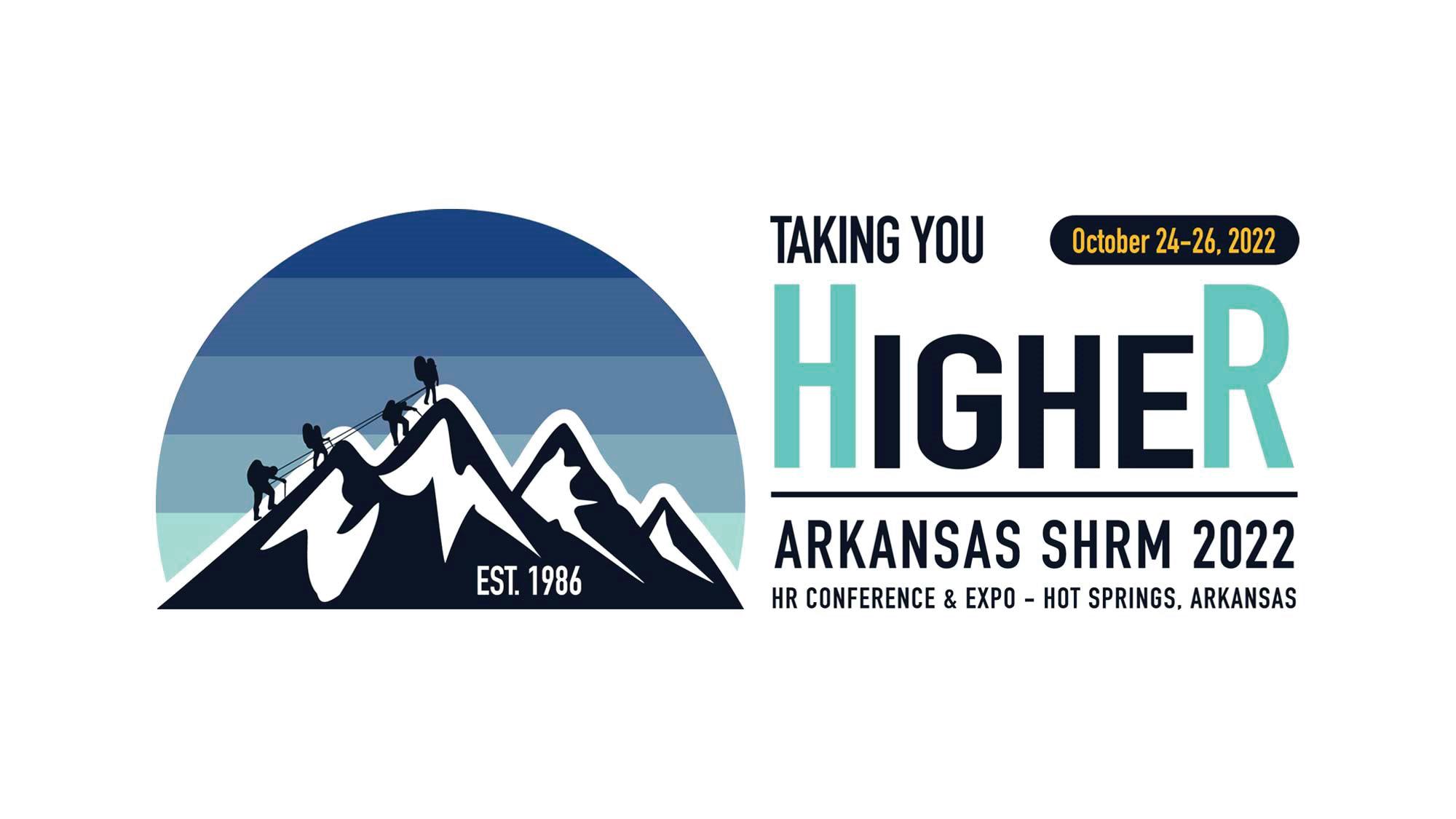


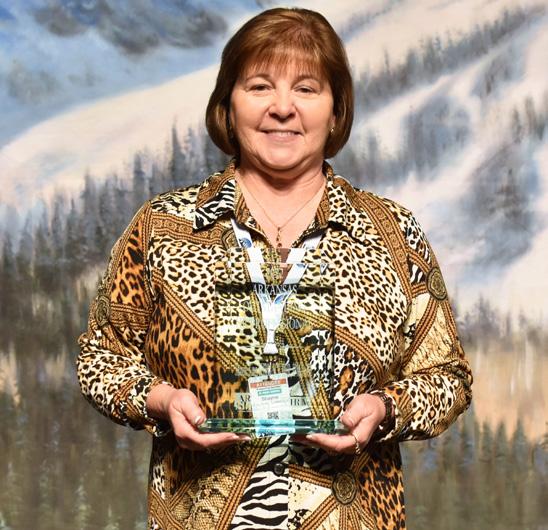


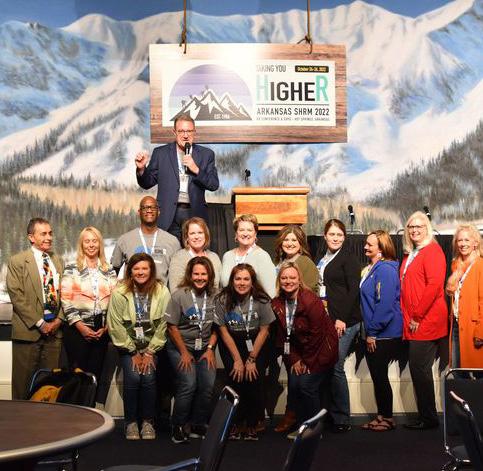


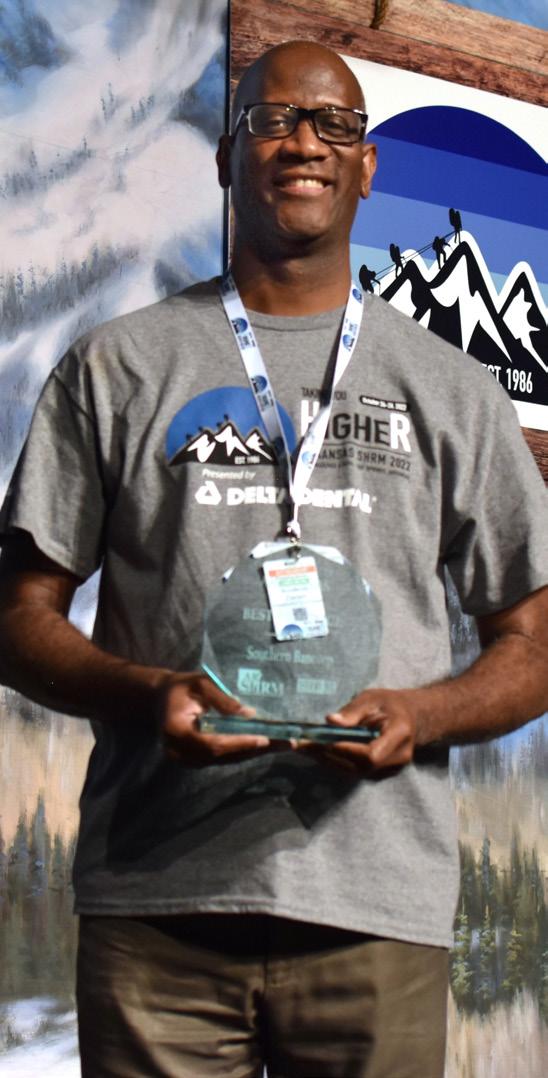
HIGHLIGHTS
1 Broderick Daniels received the HR Best Practices Award. 2 Shayne King is the recipient of the 2022 HR Professional of the Year.
3 Dale Clinton, 2022 ARSHRM Conference Chair and Committee members 4 Donna Merriweather, ARSHRM State Council President, and Holley Little, State Council Director-Elect 5 2022 ARSHRM State Council 6 Jennifer Vaughn is the recipient of the JC Cote Scholarship winner.
1 2 3 4 5 6 7 48 www.HRProfessionalsMagazine.com
7 Dr. Roderick Smothers, President of Philander Smith College in Little Rock
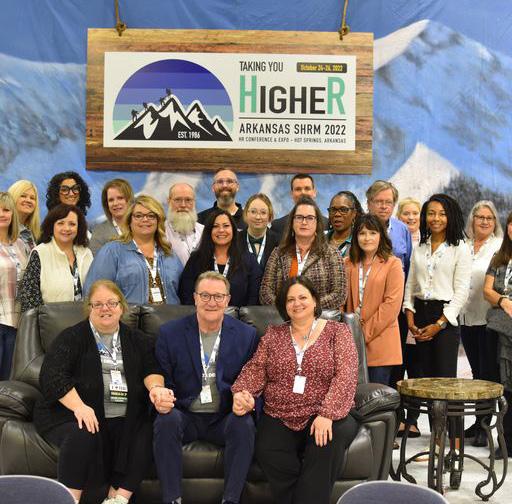
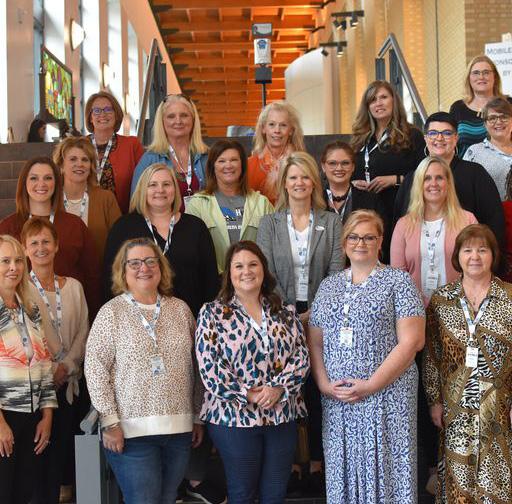
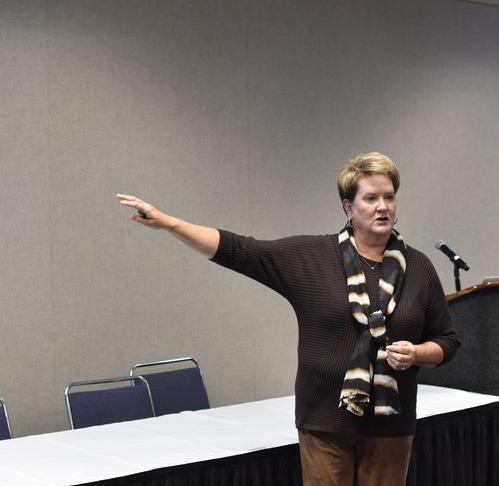
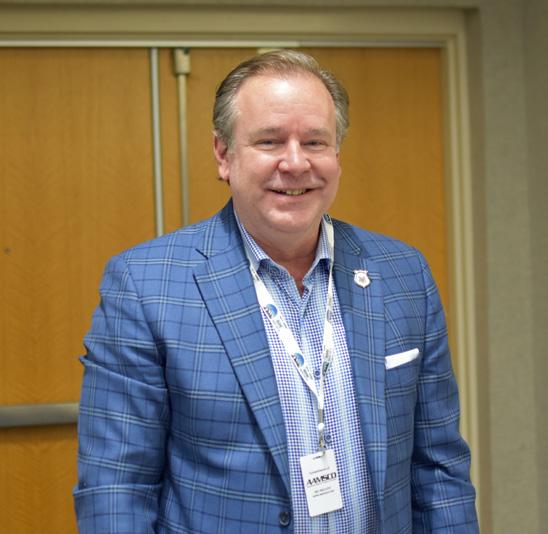
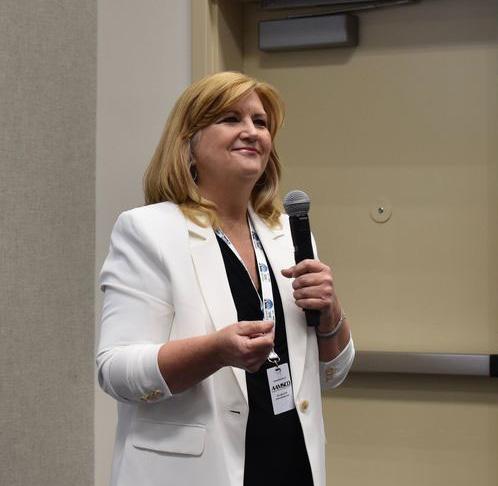
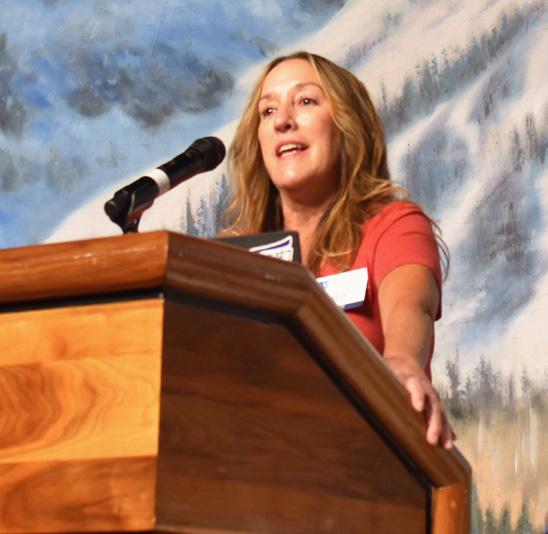



8 10 11 9 12 13 16 15 14 49 www.HRProfessionalsMagazine.com
8 NOARK Chapter members with Conference Chair Dale Clinton 9 Members of the WCASHRM Chapter in Hot Springs 10 Janie Warner, SHRM-SCP, spoke on Building a Culture of Excellence. 11 Sheila Moss, the “I-9 Lady,” was spoke on I-9 Management. 12 Pam Green’s topic was “Taking You HigheR: Think Like an Executive HR Brand 13 Leslie Coleman, keynote speaker, spoke on Best Practices & Pitfalls of Diversity 14 Doug Elms, CEO of Safehaven Security Group, spoke on Safe Terminations. 15 Katie Slick, Field Services Director with SHRM, gave and update on SHRM member services. 16 The Color Guard from Jonesboro High School performed during the opening session.
WHICH SHRM LEARNING JOURNEY IS THE RIGHT PATH FOR YOU?
Not sure where to start? Take our quiz and find out!
What’s your current professional goal?
I’m interested in a specific HR area.
I’d like to deepen and sharpen my HR skill set.
I’m looking to hone my expertise in a particular HR practice.
I’m looking for a structured learning experience, either in person or online.



I’m looking to grow my knowledge with flexible learning options.
SPECIALTY CREDENTIAL
A blended learning experience that takes your knowledge, confidence and career to the next level. Become your workplace expert when you invest in a highly focused area of HR practice.
SEMINAR
An immersive experience that gives you the key to using your skills in the workplace. Connect with peers and learn cutting-edge strategies from experts in the topic you’re interested in.
E-LEARNING
A flexible online learning experience on your terms. Start small by purchasing specific sessions or have it all with a one-year unlimited subscription.
For more information, visit shrm.co/learnthiswinter
Background Screening
Are you tired of your background screening vendor making big promises about service, only to go silent when you need to ask a question or check on an order? Data Facts’ people-first approach ensures you’re supported at every stage. Our friendly, highly trained, licensed private investigators and industry-veteran sta can answer your questions and address your needs accurately and quickly, every time. We also have live chat support on our website with real team members ready to help, not robots. Data Facts functions as an extension of your company’s team to keep you in compliance while fully vetting your potential new hires. We’ll never give you the cold shoulder, because you deserve a better experience.
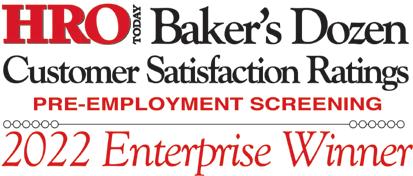
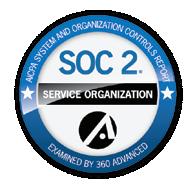

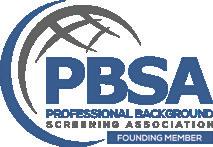


Criminal Records Searches • Verifications • Drug Screening • Credentialing • Driver Services • Monitoring • & Much More!
Your
Vendor Melting Away? Experienced U.S. Based Support Sta Mobile-Friendly, Customizable Technology Secure & Compliant Hiring Solutions Live Chat Support with Real People 51 www.HRProfessionalsMagazine.com
Is
YOU’RE READY TO REACH YOUR POTENTIAL.
We’re ready to help you.
WGU offers more than 60 respected bachelor's and master's degrees—each designed for driven people like you.
• ACBSP-accredited degree programs.
•ACBSP-accredited
•HR
• HR program fully aligned with SHRM curriculum.
• Flat-rate tuition between $7,150 and $9,060 per year. We also let you complete courses online, at your own pace. So you can keep your job while working toward your dream career.
Online. Nonpro t. Accredited. Learn more. wgu.edu

•Flat-rate more. wgu.edu/HR

































































































































































 Kimberly K. Estep, Ph.D. WGU Regional Vice President, Southeast
Kimberly K. Estep, Ph.D. WGU Regional Vice President, Southeast


























 SHRM-Memphis HR Most Admired Organization
SHRM-Memphis HR Team Excellence Award SHRM-Memphis HR Excellence Awards Attendees
The Cintas Team (L-R) David Dufour, SHRM-Memphis President, with Kevin Tucker, Mary Merschat, and Crystal McAnnally, and Brad Federman, SHRM-Memphis President-Elect.
Memphis Shelby County Schools (L-R) Andrea Williams, Danette Hardy, and Arby Martin with Dr. Deneen Lester
The AutoZone Compensation Team (L-R) Tray Keaton, Jacob Benefield, Ashlee Jordan, Gerianne Roberto, with Dr. Deneen Lester
Attendees at the SHRM-Memphis HR Excellence Awards at the Memphis Pink Palace Museum.
SHRM-Memphis HR Excellence Award in Compensation
Photo credit Rhonda Consentino Photography
Photo credit Rhonda Consentino Photography
SHRM-Memphis HR Most Admired Organization
SHRM-Memphis HR Team Excellence Award SHRM-Memphis HR Excellence Awards Attendees
The Cintas Team (L-R) David Dufour, SHRM-Memphis President, with Kevin Tucker, Mary Merschat, and Crystal McAnnally, and Brad Federman, SHRM-Memphis President-Elect.
Memphis Shelby County Schools (L-R) Andrea Williams, Danette Hardy, and Arby Martin with Dr. Deneen Lester
The AutoZone Compensation Team (L-R) Tray Keaton, Jacob Benefield, Ashlee Jordan, Gerianne Roberto, with Dr. Deneen Lester
Attendees at the SHRM-Memphis HR Excellence Awards at the Memphis Pink Palace Museum.
SHRM-Memphis HR Excellence Award in Compensation
Photo credit Rhonda Consentino Photography
Photo credit Rhonda Consentino Photography









 O’Neill, DC, BS Vice President and Clinical Wellness Practice Leader McGriff
O’Neill, DC, BS Vice President and Clinical Wellness Practice Leader McGriff
 Katie
Katie





























 WIMBERLY LAWSON LABOR & EMPLOYMENT LAW UPDATE CONFERENCE Sevierville Convention Center | November 17-18, 2022
WIMBERLY LAWSON LABOR & EMPLOYMENT LAW UPDATE CONFERENCE Sevierville Convention Center | November 17-18, 2022









 By TODD MCFALL AND MEGAN REGAN
By TODD MCFALL AND MEGAN REGAN






































































 Pictorial Highlights from the 2022 SHRM Volunteer Leaders’ Business Meeting in Washington, D.C. November 17-19, 2022
Pictorial Highlights from the 2022 SHRM Volunteer Leaders’ Business Meeting in Washington, D.C. November 17-19, 2022











































 Jihae You, Assistant Professor Director, Center for Workplace Diversity and Inclusion Department of Management, Fogelman College jyou1@memphis.edu
Jihae You, Assistant Professor Director, Center for Workplace Diversity and Inclusion Department of Management, Fogelman College jyou1@memphis.edu






































